When is the best time to visit Nepal?

May 31, 2024 • 6 min read

Spring and fall are the peak times for trekking, but the Kathmandu Valley can be explored at any time of year NurPhoto / Getty Images
While Nepal may be most famous for its high-altitude mountains, it actually spans from the lowland Terai – the jungle-filled plains bordering India – to the edge of the high-altitude Tibetan Plateau. There’s a lot of climatic variety.
The best month to visit Nepal largely depends on what you want to do while you’re there, and whether you’ll be visiting either very high or very low-lying places. The weather plays a big part in the tourism seasons.
Whether you want to spot rhinos, go white-water rafting or hike in the mountains, our insider guide to Nepal's seasonal variations and festivities will help you choose the best possible time for your trip.


Late September to November is the best time for trekking, sightseeing and festivities
October to November is the peak season for travel to Nepal and these are the best months to visit for most activities (late September is the shoulder season, although monsoon rains can linger). The weather is warm but not too hot, and the generally clear skies mean great mountain views. Rafting or kayaking on Nepali rivers is also fun, with decent water volume and good temperatures. It’s not the cheapest time to visit Nepal, but the country is generally affordable anyway.
Potential visitors are often wary of traveling during peak season because of the crowds but it really depends where you go. On a famous trekking trail, like Everest Base Camp, you won’t have the trails to yourself. Not by a long shot. Guides, flights, and accommodation should be booked as far in advance as possible, potentially a few months.
But those pictures you’ve seen of human traffic jams on Everest? They’re only a concern if you want to climb the mountain, not trek to it. And overcrowding only really applies to Everest, not the rest of the country. The vast majority of travelers don’t want to climb Everest, but if you do , the peak mountaineering season is different from the peak tourism season (see below). To take advantage of the great weather in peak season without the crowds, consider less well-known trekking routes. They’ll be less busy and accommodation will be more available.
Peak tourism season also coincides with peak festival season. Dashain (also called Dashami or Durga Puja) usually falls in October, while Tihar (also called Deepawali, or Diwali in India) is usually in November. The dates vary because they follow a lunar calendar. Dashain is mostly a family affair, and Kathmandu essentially clears out for around a week during the festival, with many shops and businesses closed. Tihar, the festival of light, is more accessible to travelers – it follows a couple of weeks after the end of Dashain. You’ll see displays of lights and rangoli decorations outside homes and businesses all over the country. It’s one of the best times to visit Kathmandu or Pokhara .
Get inspired with some of our favorite treks in Nepal.

Winter is the best time for off-season low-altitude trekking
Much of Nepal sits at a lower altitude than many people think, and the short winter (December to early February) is typically mild at lower altitudes, including the capital. There may be some foggy mornings and chilly nights, but when the sky is clear, winter days can be quite warm in the cities.
Other major advantages of visiting in the winter is that it’s one of the cheapest times to visit Nepal and there are few other tourists around. Lower-altitude trekking trails –anything that stays below circa 2500m (8200ft) – will be comfortable, as long as you have a good jacket for cold nights. Experienced winter hikers could even venture higher, but you’ll need to be well kitted out and prepared for snow.
Late winter is the best time for wildlife spotting
Nepal isn’t only about the mountains. The national parks on the Terai, such as Chitwan and Bardia , are full of wildlife, including lots of one-horned rhinoceros and a few Royal Bengal tigers. The best time to spot wildlife is at the end of winter (January and February). In late January, local villagers are allowed to cut the high elephant grass that shoots up after the monsoon (which ends in September), and the animals that were previously hiding in it become visible. You’re much more likely to spot rhinos and other animals at this time of year. Plus, wait any later and the temperatures on the Terai become blisteringly hot.

Spring is the second peak season but proceed with caution
For years, spring (late February to April) was touted as a second peak season in Nepal. However, in recent years, this common wisdom rings less and less true. Winters are usually dry, and as temperatures heat up through the spring, wildfires spread.
This has been happening for a long time but, with climate change, wildfires have become significantly worse over the last few years. The smoke from wildfires impacts air quality throughout the country – it's already hazardous in Kathmandu – and that includes the visibility of mountains.
An attractive feature of spring, however, is all the festivals. Shivaratri in February, Holi in March, and Patan’s Rato Machhendranath festival in April are all accessible to travelers and great fun.
Avoid the pre-monsoon and monsoon seasons aka the worst times to visit Nepal
By late spring, Nepal is counting down to the arrival of the monsoon. Temperatures become uncomfortably hot in many places and the air quality is poor. The stifling conditions ease somewhat with the arrival of the monsoon in June, and locals welcome the cooling, refreshing rains.
However, for travelers, the monsoon is the worst time to visit Nepal. Rain means cloudy skies, muddy and flooded streets, canceled or delayed flights, and the potential for landslides across roads. There may be pockets of beauty in Nepal’s monsoon, but visitors should give this season a wide berth. The rains generally peter out by mid-September.

Spring and fall are best for mountain climbing
Much of the above advice doesn’t really apply if you want to climb Mt Everest or another Himalayan peak, as the climbing seasons don’t always align with the best trekking and sightseeing seasons. Spring (March to May) and early autumn (late September and October) are the best times for mountaineering, as temperatures and weather conditions are optimum. However, conditions vary year by year, and climbing expeditions are sometimes affected by unpredictable conditions in the mountains.
Keep planning your trip to Nepal:
- Pick your must-visit locations with our guide to the best places to visit
- Insider tips and tricks if you're visiting Nepal on a tight budget
- Forge your own path and explore Nepal on a road trip
This article was first published Jan 20, 2022 and updated May 31, 2024.
Explore related stories

Destination Practicalities
Jun 26, 2024 • 9 min read
Discover Nepal's Terai, a lush paradise of vibrant culture, fertile lands, and breathtaking biodiversity. Here's what you need to know before you go.

Jun 14, 2024 • 6 min read

Jun 6, 2024 • 6 min read

Jun 3, 2024 • 8 min read

May 29, 2024 • 8 min read

May 28, 2024 • 9 min read

May 22, 2024 • 7 min read

May 9, 2024 • 6 min read

Feb 22, 2024 • 3 min read

Jan 14, 2024 • 8 min read
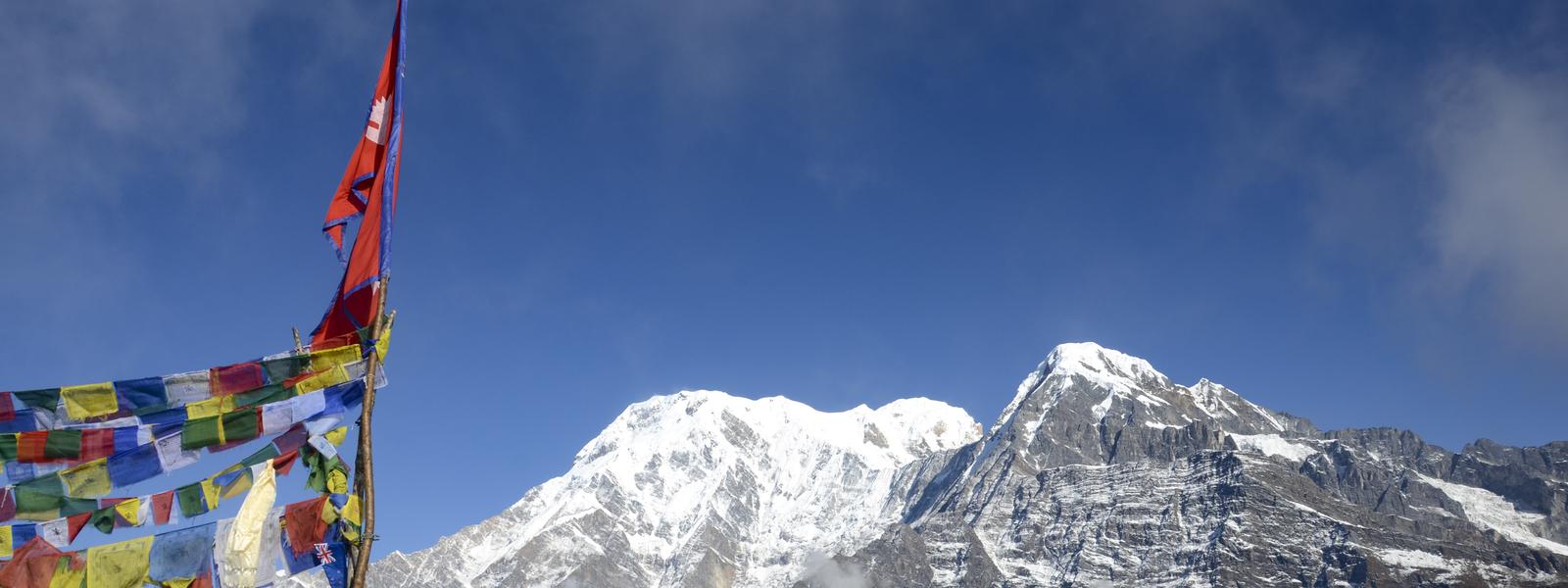
When to go to Nepal
When is the best time to visit Nepal?
The best time to visit Nepal is during Autumn with dry days, clear blue skies and great trekking conditions. Spring is also popular as the temperatures begin to rise, and the countryside looks even more spectacular.
Nepal weather & when to go
Pick a month below.
Weather seasons are becoming less predictable but peak visitor months remain more certain.
Unfollow the herd - avoid the peak months to enjoy fewer crowds, better availability, often lusher countryside and help to spread the economic benefits of tourism.
Weather overview
Nepal monsoon season.
Nepal's annual monsoon takes place between June and August . Fat rain clouds bubble up over the sea south of India and sweep across the country where they collide with the cooler air of the Himalayas, dropping their rain in torrential fashion. Most parts of the country experience sudden sharp downpours, although some mountainous areas remain pretty dry year-round, sheltered from the rain by the mighty Himalayas. The Upper Mustang region and sections of the Annapurna circuit, in particular Jomsom, in the rain shadow gets just 30mm of rain mid-monsoon in August, while Pokhara is drenched in 850mm. Even in peak monsoon season it rarely rains for long periods, and more intrepid visitors will enjoy having the cultural sights and drier trekking trails almost to themselves.
Nepal seasons and climate
Seasons in Nepal can be divided roughly into four seasons, although (as with weather conditions worldwide) these seasons are increasingly blurred. From the lowlands close to the Indian border to the 8,850m peak of Mount Everest, Nepal's climate is hugely altitude dependent. The landscape divides into three quite distinct zones. The Terai zone, located in the south, runs along the border with India, with some areas virtually at sea level. A belt of often humid, jungle and farmland, the temperature in the Terai, for example in Janakpur, can often hit 35°C. It's home to two of the country's most impressive national parks, Chitwan and Bardia, both of which are home to the rare One-Horned Rhino, and iridescently colourful birdlife.
The country’s heartland - Pahar - is a wide stretch of rolling foothills and valleys, where villages perch on the hilltops and bright green paddy fields step down the contours. The Kathmandu Valley is located within this area. Crammed with spectacular ancient cities and villages trapped in time, it's a treasure trove of cultural delights, buzzing markets and streets packed with colour and noise. Temperatures here tend to be pleasantly warm year-round, perfect for exploring, though you’ll need a fleece in the evenings and early mornings during winter months.
At the northern reach of the country, bordering Tibet and rising to exceptionally high altitude, there's the Himalaya mountain range. It's a wildly beautiful panorama of jagged snow-capped mountains, glacial lakes and flower-strewn valleys. No matter where you are in Nepal, on a clear day those lofty peaks loom above everything. In this region, places like Namche Bazaar, which sits at an altitude of 3,450m, experience temperatures of -7°C at night.
Winter in Nepal
Winter occurs from late November to February and is typically rain-free and clear. High altitude areas above 3,000 metres will be snowy and very cold indeed with night time temperatures of -10°C not uncommon. Whilst you won't want to venture towards Everest Base Camp, lower altitude treks are quite feasible at this time of year if you come properly prepared for the chill. Even in the Kathmandu valley and the flat plains it gets cold at night with temperatures hovering around 3°C so you should pack a warm fleece for the evenings. Winter is low season for tourists and a great time of year to visit places like Pokhara and the national parks on the plains.
Spring in Nepal
From March onwards spring makes its appearance, the temperatures climb and the flowers on the hillsides burst into bloom. You'll see vast swathes of pink and red rhododendrons in particular. Spring is a popular time of year to visit Nepal. Long grasses in the national parks have been cut back so visibility for rhino spotting is excellent; trekking conditions are perfect, with daylight hours lasting longer into the evening, and so tea houses and treks at higher altitude open up again. The only downside is the haze that often swathes the peaks at this time of year.
Summer in Nepal
Summer brings the monsoon months of June, July and August with the rains really hitting their peak during August. Flash floods are not uncommon, washing away roads and making some journeys problematic. Internal flights are often disrupted by low-level cloud. It rains daily, though often only for a couple of hours and usually overnight, leaving mornings fresh and bright at first. If you come prepared (pack wet weather gear), and rise early to make the most of the mornings, then a visit to Nepal during summer still has much to offer, especially for cultural pursuits. Daytime temperatures are a warm but not unpleasant 27°C. Trekking isn't totally off the agenda, with certain areas of the mountains tucked in the Himalayan rain shadow. If you venture to Manag, Mustang or Dolpo you'll have many trails to yourself.
Autumn in Nepal
By mid-September the rains have abated and autumn is well on the way. Visibility at this time of year is exceptional as the smog and haze have been washed away by the monsoon. It's the most popular time of year to visit Nepal with conditions ideal for trekking , wildlife viewing and cultural exploration alike. October and November are particularly good months if you want to see Nepalese culture at its most vibrant as two of the most important festivals - Dasain and Tihar - are celebrated at this time. Expect street parades, decorated houses and temples, dancing and singing long into the night.
We think you may like this journey…
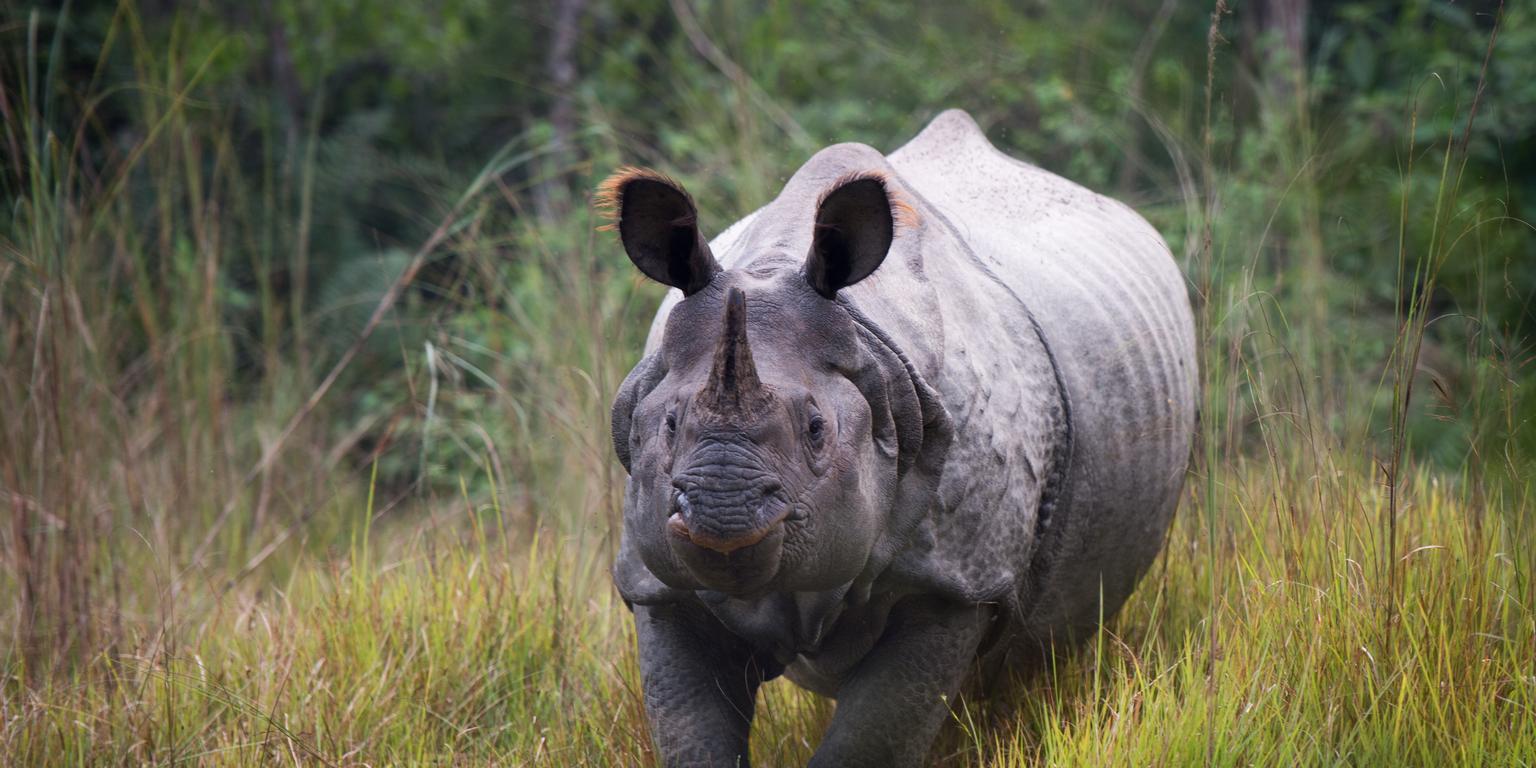
Rhinos & Rhododendrons
Taking an alternative approach to a classic Nepal combination, this journey contrasts the heady and hectic streets of Kathmandu with the open savannah of Chitwan National Park. Slow down to search for tigers and rhinos amid the wilderness, before strapping up your boots for a light trek between two atmospheric lodges in the Himalayan foothills around Pokhara.
Looking for inspiration?
Weather & Climate
Kathmandu Airport Guide
Top Destinations in Nepal
One Week in Nepal
Tipping Guide
Getting Around
Top Things to Do in Nepal
Complete Guide to Kathmandu
Top Things to Do in Kathmandu
Top Things to Do in Pokhara
Sacred Sites
Amazing Festivals
Top National Parks
Must-Try Food
Annapurna Circuit
Manaslu Circuit
Himalaya Trail
Facts About Mt. Everest
Trek to Everest Base Camp
Best Time to Visit
The Best Time to Visit Nepal
:max_bytes(150000):strip_icc():format(webp)/10947453_10153084623948270_8191342691038933499_o-591d1e8d3df78cf5fa731909.jpg)
fotoVoyager/Getty Images
Mountainous Nepal has the highest Himalayan peaks in the world. Yet, the southern part of the country bordering India along the Indo-Gangetic Plain (known as the Terai) is surprisingly low-lying. This gives Nepal a diverse climate. For trekking, the best time to visit Nepal is during October and November, when it's sunny and warm. However, this is high season, when crowds and prices peak. Spring, from March to May, is also popular. It's the best time to see blooming flowers and wildlife. There are benefits of visiting Nepal at other times as well, depending on where you go.
If you plan your trip carefully, Nepal can be a year-round destination. Here's what to consider.
Weather in Nepal
Nepal has four main seasons, but the climate changes according to elevation, which extends from less than 300 feet above sea level to 29,029 feet above sea level (the height of Mount Everest ).
Winter, from December to February, is mild in the flat subtropical south but bitterly cold at high altitudes in the north. Kathmandu, the capital of Nepal , is about 5,000 feet above sea level. It has a warm temperate climate with cold, dry winters and hot summers.
The bright and dry winter days are pleasant, but temperatures plunge at night. Heat and humidity rise in mid-May before the onset of the summer monsoon, which sweeps up the Indian subcontinent, in June.
Nepal receives about 80 percent of its rainfall from June to mid-September, although the amount varies depending on location. Pokhara, in the Western Hills (which are west of Kathmandu albeit in the geographic center of Nepal), has particularly high rainfall—more than 120 inches a year—produced by moisture from monsoon winds as they encounter the Annapurna Range directly to the north. This compares to only 12 inches in the Mustang district, bordering Tibet in the rainshadow of the Himalaya. Kathmandu's average annual rainfall is about 50 inches.
Trekking in Nepal
Trekking is the most popular thing to do in Nepal. You may hear that the summer monsoon season isn't suitable for trekking. This isn't entirely true, though. Experienced trekkers can avoid the rain by heading to the north side of the Himalaya mountain range, which is protected from the monsoon.
High mountain trekking is challenging during winter. Fierce cold and snow (possibly blizzards) cause many lodges to shut. High passes may be blocked too—such as Thorong La on the Annapurna Circuit, Ganja La, Cho La, Renjo La, Kongma La, and Gosainkunda-Lauribina Pass. That's not to say it's impossible to trek the iconic Annapurna Circuit and Everest Base Camp in winter—just be prepared for extreme weather conditions and accommodations without heating. (The benefit is a lot fewer people on the trails.)
Treks and hikes at lower elevations can be readily undertaken throughout the year, although you'll need to be careful of leeches during the monsoon season.
Tourists generally avoid visiting Nepal in winter, which is understandable because it does get cold in much of the country. However, this means there are hardly any tourists around, so it's peaceful and cheaper. Sunlit, lakeside Pokhara offers enticing deals for those who don't want to trek.
Kathmandu and Pokhara have similar winter temperatures, which range from about 38 degrees Fahrenheit (3 degrees Celsius) overnight to 65 degrees Fahrenheit (18 degrees Celsius) during the day. Nepal's winter is quite short, though. So, temperatures tend to be higher in early December and late February. The Annapurna Circuit is most likely to be affected by snowfall in winter.
Treks that don't go above 15,000 feet above sea level will be the most comfortable. Options include the Annapurna Circuit Trek, Poon Hill Trek, Ghorepani Circuit, Royal Trail around Pokhara, Dhampus Trek, Helambu Trek, and the hills around Kathmandu Valley for short and easy hikes. These include Champadevi, Chandragiri, Shivapuri Nagarjun National Park, Ranikot, and Nagarkot to Dhulikhel. Read more about what to do in Kathmandu .
Winter is an excellent time to visit the jungles of Chitwan National Park and Bardia National Park in southern Nepal's flat planes. You can also hike the Chitwan Hills Trail up to Siraichuli Hill, one of the highest hills in the Mahabharat Range.
Also, February and March are among the best months for paragliding around Pokhara.
Events to check out:
- Pokhara Street Festival at the end of December.
- Tamu Losar, the New Year celebration of the ethnic Tibetan Gurung community.
- Sonam Losar, the New Year celebration of the ethnic Tibetan Tamang community.
- Basant Panchami, dedicated to the worship of Goddess Saraswati. It also makes the transition from winter to spring.
- Maha Shivratri, dedicated to the worship of Lord Shiva. The best place to see it is Pashupatinath temple in Kathmandu, where there are thousands of colorful sadhus (Hindu holy men).
- Gyalpo Losar, the New Year celebration of the Sherpa community.
Spring (Pre-Monsoon)
Spring is the second most popular time to visit Nepal and Kathmandu's traveler district, Thamel, is buzzing. The season brings warmer weather that gets quite hot and stifling at lower elevations. Nature comes alive. Dust from the planes and smoke from local fires can cause haze and reduce visibility, though. Thunderstorms are quite common later in the season, as the monsoon approaches. However, conditions remain cold and clear at the higher altitudes, favorable for trekking and mountaineering expeditions.
In Pokhara and Kathmandu, May temperatures reach around 86 degrees Fahrenheit (30 degrees Celsius) during the day and 64 degrees Fahrenheit (18 degrees Celcius) at night.
Head to the higher mountains for Nepal's classic treks in the Annapurna region, Everest region, or Mount Kanchenjunga. If you want to avoid the crowds or up the level of difficulty, choose an offbeat trekking destination such as the Makalu region, Langtang, Manaslu, or the Ganesh Himal region.
The lower areas around Pokhara are the best places to see Nepal's famous rhododendrons in bloom in early spring. They begin blooming above Namche in the Everest region in late spring.
Bardia National Park gets very hot by May but provides the best chance of spotting a tiger, as the animals come out of the jungle for water.
- Holi , the festival of colors.
- Ghode Jatra: The Nepal Army holds a horse race in the Kathmandu Valley to ward off demon Gurumapa.
- Nepalese New Year and Bisket Jatra. It's best experienced in Bhaktapur near Kathmandu.
Summer (Monsoon)
The monsoon arrives by mid-June and remains until near the end of September, deterring most trekkers. Expect it to rain for a couple of hours a day, typically in the afternoon, as well as throughout the night. As it's the low season, generous hotel discounts are available. However, flights to Nepal may be canceled due to bad weather and roads blocked by landslides. Clouds typically cover the spectacular mountain scenery too.
Trekking is ideally undertaken in the rainshadow of the Himalaya at this time of year. This includes remote and isolated places such as Mustang, the Nar Phu Valley, and the Dolpo region. On the Annapurna Circuit, Marsyangdi Valley and Tilicho Lake are particularly picturesque, with flourishing greenery and postcard settings.
Thrill-seekers have a reason to visit Nepal during the monsoon—white water rafting. July and August are the best months for beginners, as water levels are lower. The Bhotekoshi river gives the best adrenaline rush. Sunkoshi, Trishuli, Kali Gandaki, and Seti are other major rivers for rafting.
- Yarthung Horse Festival in Manang in June or July.
- Gai Jatra , a festival in Kathmandu Valley to commemorate the death of loved ones. Family members of the deceased dress as cows or lead a cow through the streets.
- Teej festival for women. Thousands of women wearing red come to celebrate at Pashupatinath temple in Kathmandu.
Fall (Post-Monsoon)
After the monsoon withdraws around the third week of September, the skies become clear and the weather stable. The glorious post-monsoon period is the best time to visit Nepal weather-wise. Being high season, there's a great demand for accommodations. Prices leap, and hotels in Kathmandu get booked up. Be prepared to jostle for space on Nepal's classic trekking trails too. Similar to in spring, stick to the off-beat treks to avoid the crowds.
October is also a popular month for white water rafting, while October and November are optimal for paragliding.
- Dashain, Nepal's most important festival and a celebration of the victory of good over evil in September or October.
- Tihar, the festival of lights also known as Diwali.
- Chhath Parva, the worship of the sun god in the Terai region.
October and November are the best months to plan a trip to Nepal, because the weather is sunny, warm, and perfect for trekking.
The climbing season on Mount Everest lasts from April to May, but if you don't plan to go for the summit, you can also trek to Everest Base Camp after the monsoon season from September to December.
January is the coldest month in Kathmandu with an average high temperature of 64 degrees Fahrenheit (18 degrees Celsius) and an average low temperature of 37 degrees Fahrenheit (3 degrees Celsius).
Britannica. "Nepal Himalayas." Retrieved February 12, 2021.
Britannica. "Nepal - Climate." Retrieved February 12, 2021.
Weather Spark. "Average Weather in Kathmandu, Nepal, Year Round." Retrieved February 12, 2021.
The Top 20 Things to Do in Nepal
The Weather and Climate in Nepal
The Most Beautiful National Parks in Nepal
The Best 12 Hikes in Nepal
How to Go Teahouse Trekking in Nepal
The Top 15 Destinations in Nepal
Five Amazing Hiking Routes Among the High Mountains of the Himalayas
The Most Colorful and Interesting Festivals in Nepal
One Week in Nepal: The Ultimate Itinerary
Where Is Mount Everest?
How to Trek Nepal's Manaslu Circuit
South Asia Travel
How to Trek Nepal's Annapurna Circuit
The Best Time to Visit Ladakh
How to Travel From Delhi to Kathmandu by Train, Bus, Car, and Plane
The 15 Best Hiking Destinations in Asia

- Thailand Lantern Festival
- Indonesia(Bali)
- South Korea
- China (HK, Taiwan)
- Itinerary Ideas
- Asia Highlights Travel Reviews
- Thailand Travel Reviews
- Vietnam Travel Reviews
- Cambodia Travel Reviews
- Japan Travel Reviews
- Myanmar Travel Reviews
- China Travel Reviews

- Best Times to Visit Nepal —Weather and Travel Experience
Nepal has distinct climates related to its elevations with its subtropical jungle in the south and the world's highest peaks in the north. We suggest you also learn about the seasonal variations before going there so that you can choose the optimum time to visit.
Nepal's climate is divided into two seasons: the rainy season (May to August) and the dry season (September to April). October to December is the best time to visit Nepal as the skies are generally clear and the views are spectacular. However, the best time to visit Nepal depends on what you plan to do while in the country.
Quick Facts
- When Is the Best Time to Visit Nepal
Visiting Nepal in Spring — from March to May
Visiting nepal in summer — from june to august, visiting nepal in autumn — from september to november, visiting nepal in winter — from december to february.
- The ideal time to visit Kathmandu is from September to November when numerous cultural events are held.
- Late September to early December is the best time for photography in Nepal.
- October to April is the best time to see wildlife. Chitwan National Park is one of the most famous national parks in Nepal.
- The best time to visit Pokhara is September to November.
- The autumn months (October and November) are the most popular for trekking to Everest Base Camp.
When Is the Best Time to Visit Nepal?
The best time to visit Nepal is from October to December as the weather is stunning during this period. The average temperature is 22℃ (72°F) by day and 12℃ (54°F) at night.
Trekking, jungle safaris, and outdoor activities are all enjoyable during this period. Dashain is the most auspicious festival in October. Domestic flights are in high demand during the lead-up to it so it is advised to book your tour as early as possible.
March and April are also good times to visit Nepal as the weather gets warmer and the plants come alive with new growth. Most parts of Nepal are hot in these months. Kathmandu and Pokhara can reach 28℃ (82°F). The average temperature is 25℃ (77°F) by day and 10℃ (50°F) at night.
Trekking is ideal during this period, including the route to Everest Base Camp. Many hotels charge a peak season rate. The Holi festival falls in March and is a great opportunity for photos. Domestic flights between Kathmandu and Pokhara can fill up quickly.
January and February are recommended after the months mentioned above. It can be very cold, especially at night. The average temperature is 18℃ (64°F) by day and 2℃ (36°F) at night.
Enjoy viewing the snowcapped mountains. It's a good time to look at the wildlife in the jungles of Chitwan in the south of Nepal as these lowlands experience moderate temperatures. The Losar and Basant Panchami festivals are often, but not always, held in January. Many hotels offer special winter rates. This is a good time for travelers who are looking for deals.
The monsoon season is from May to September . Heat and humidity levels increase and the clouds make the mountain views seem mysterious. Some travelers don't enjoy this time in Nepal but it doesn't mean you can't travel during this period. The average temperature is 29℃ (84°F) by day and 18℃ (64°F) at night.
City sightseeing is interesting at this time. Getaways to Pokhara, Kathmandu, and the surrounding regions are welcome possibilities. During these months, you are likely to find discounts on accommodation and tours.
Here are the average temperatures and rainfall amounts for Nepal:
Spring is one of the most popular seasons to visit Nepal as temperatures climb steadily and the weather tends to be more stable. The valleys are fabulously beautiful, especially after all the ice has thawed and the flowers have bloomed. This is a great time to go trekking in Nepal.
Spring Weather
March: Temperatures on the Terai can be above 32°C (90°F) while Kathmandu and Pokhara can reach 26°C (79°F). Areas at high altitude are still cold, especially at night.
April: Most parts of Nepal are pretty hot. Kathmandu and Pokhara have temperatures reaching 32°C (90°F). The Terai can often be hot.
May: It is very hot in hillside cities – usually above 32°C (90°F) in the daytime – and even hotter on the Terai.
What to See
Spring is a peak season for trekking. Cross high passes, such as the Annapurna Circuit (ABC), which is located in the middle section of the Himalayas. This is the most popular trekking tour in Nepal. Starting at Nayapul, just a short drive from Pokhara, the standard route requires 10–11 days to reach Annapurna Base Camp and return to Pokhara.
During the tour, you will see fantastic glaciers and the peak of Hiunchuli.
This trek is not difficult and any fit person can manage it, even if you do not have any hiking experience.
Th e Everest Base Camp Trek (EBC) is consistently regarded as the finest in the world and is suitable for most trekkers with a medium level of fitness. The adventurous trek begins with a half-hour flight from Kathmandu to Lukla, which offers the best views of the Himalayas.
Start there and go through dense green forests to reach Everest Base Camp. It takes about 12 days to return to Lukla.
During the trek, you'll visit mountain villages and have the chance to visit some of the most renowned monasteries in the country, such as Tengboche Monastery.
Festivals and Events
- Holi : This an exciting festival of color celebrated in Kathmandu in early March. People smear colored powder on each other and throw colored water and water balloons — it's a great opportunity for photos.
- Bisket Jatra : This is Nepali New Year, which is a major holiday in Nepal. Celebrations take place at Bhaktapur in Kathmandu and children offer sweets, fruits, and gifts to their mothers to show their respect and gratitude.
What to Avoid
- Kathmandu is particularly dusty in March because it's the time for crop burn-offs. It's best to head out of the city.
- To avoid the crowds, choose a lesser-known trek or visit in early/late spring.
- Mountain views can be obstructed by haze and low clouds.
Insider Tips
- It is recommended to wear pants, T-shirts, and breathable clothes.
- In the evenings, wear suits, jackets, a windbreaker, and other warm clothes.
- Domestic flights to popular destinations, especially between Kathmandu and Pokhara, can fill up quickly. Early booking is suggested.
- The Holi festival takes place across many cities and smaller towns in March so it's very crowded.
The arrival of the monsoon season sees fewer tourists in Nepal, especially in July, making it the least visited month of the year. The weather is hot and humid and it tends to rain on most days.
Although July is not an ideal month for many outdoor activities, traveling in the city is a good idea, such as visiting temples, museums, bars and restaurants, and shops. Kathmandu and Pokhara are the best places to go in summer.
This season has great deals, which is ideal when traveling on a budget.
Summer Weather
June: The monsoon season sweeps up from India.
July: The monsoon season has truly arrived. Temperatures stay over 26°C (79°F) in Kathmandu and Pokhara. High-altitude areas are somewhat cooler but with heavy rainfall.
August: This is the final full monsoon month so temperatures remain hot and humid around the country.
It is the perfect time to discover Kathmandu's historical heritage without the crowds. The Pashupatinath Temple is a must-see attraction. It is one of the representative Hindu temples in Kathmandu,and is where Hindus hold open-air cremations.
You can visit the world's largest round pagoda in Kathmandu: Boudhanath . It was founded in the 6th century and was the center of Tibetan Buddhism in Nepal. It has one of the largest spherical stupas in Nepal.
Kathmandu Durbar Square is the most famous square in Kathmandu and a good place to see marvelous temples. There are more than 50 temples in the square — the whole scene is like an open-air museum filled with ancient architecture.
Pokhara is divided into two parts: the old part and the modern part. It is recommended to visit the old part because it is the same as it was before the development of tourism. Old houses are everywhere and the shops and stalls are full of local life. You can experience the locals' simple, slow pace of life.
In Pokhara, you can enjoy the stunning view of the beautiful Fewa Lake from a lakeside café.
If trekking is your main purpose in Nepal, the Mustang Trek to the north of Pokhara is a better choice in the monsoon season. It lies within the rain shadow of the Himalayas so it doesn't experience the monsoon-like weather that falls on the rest of the country.
- Rato Machchhendranath : Celebrations are held all over Nepal for the August full moon, especially in Patan in Kathmandu, which includes dancing with shamans. Thousands of devotees gather in Kathmandu Durbar Square.
- It's not a good time for epic mountain views and photography.
- It's not a good time for treks because the monsoon weather makes overland travel difficult. With wet weather, landslides, and muddy or flooded roads, many mountain regions become inaccessible.
- It is not advised to arrange a tight schedule as there is a larger possibility of flight delays and cancelations.
- Long pants and long-sleeved shirts are suggested to protect you from leeches in some areas.
- Take an umbrella as the weather is usually too warm to wear a rain jacket.
- With flight delays and cancelations, check your flights before you venture out.
- Visit the Pashupatinath Temple in the morning to see cremations or visit in the evening from 6pm to see the aarti (worship with fire).
The monsoon rains last until mid-September but it only rains every few days. The sky generally remains clear with fresh air, providing amazing views all around, making October and November lovely times to visit Nepal.
This is the most popular season for trekking in the Himalayas and provides you with opportunities to join in with various festivals.
Autumn Weather
September: The humidity subsides by late September. Temperatures reach 20°C (68°F) and 26°C (79°F) in Kathmandu and Pokhara but is higher on the Terai. Mountainous areas, as always, are cooler.
October: It rains occasionally but not very much. Temperatures in Kathmandu and Pokhara seem comfortable with a high of 20°C (68°F) and a low of 26°C (79°F). The Terai is still a little bit hotter.
November: It is quite warm in many parts of Nepal although temperatures can be cold at night. Daytime temperatures are in the low 20°C (68°F) in Kathmandu and Pokhara. Temperatures become more comfortable in the Terai.
As well as the Annapurna Base Camp and Everest Base Camp treks, which are popular in spring and autumn, the Langtang Valley trek is recommended. It is 62 kilometers north of Kathmandu. The Langtang Valley is the third of the great trekking areas in Nepal after the two treks mentioned above.
Starting at Syapru Besi, an 8 to 9-hour drive from Kathmandu, the moderately difficult trek can be done within a week.
During this cultural trek, you will see several ancient Buddhist monasteries, beautiful valleys, and majestic views of mountains and will pass through local villages where there will be a good chance to interact with the local Tamang people.
- Dashain : which always falls in late October, is the most important festival for Nepali Hindus. It is a celebration of good prevailing over evil. Local people gift goats, ducks, chickens, eggs, and coconuts to the goddess Durga. People return to their hometowns and stay with their families during the 15-day holiday.
- Tihar : is Nepal's second most important festival. It is normally held in mid-November. The celebrations last for 3 days. Local people light up their houses with oil lamps and candles. From the highland, you can see the beautiful scenery of the whole of Kathmandu.
- Chhath : is the most important festival observed in the Terai region and it falls on the seventh day after Tihar. Devotees fast and make offerings to the sun by gathering at riverbanks. The best place to experience the festival is in central Kathmandu.
- If you prefer to avoid crowds, don't travel during Dashain.
- Popular trekking trails are crowded — please get advice from your travel consultant to select the best trail.
- There are higher costs due to the higher demand during this peak time.
- In the daytime, a light jacket or cardigan is advisable in case it gets cold. You can also buy beautiful pashmina scarves everywhere to help keep you warm by covering your shoulders.
- At night, a warm jacket is suggested. If you are trekking, please take hiking shoes and casual clothes.
- Book your domestic flights as early as possible. If traveling during Dashain, flights fill up very quickly in the lead-up to the festival.
- If you wish to get some trekking tips, please ask your travel consultant.
Winter isn't the peak season but there are still clear, sunny skies and mild temperatures in many places. There is practically no rain throughout the country during this season. The pleasant aspect of traveling in this season is that there are fewer visitors.
Winter Weather
December: The skies are clear. In Kathmandu, average temperatures reach highs of 20°C (68°F) and lows of 4°C (39°F). Fog is common in the Terai. Daytime temperatures reach as high as 28°C (82°F) in Chitwan. Trekking trails in the Himalayas are much colder.
January: This is the coldest month of the year. In Kathmandu, daytime highs can reach 18°C (64°F). Pokhara stays a bit warmer than Kathmandu. Daily temperatures in Chitwan can still be as high as 25°C (77°F). Snowfall in the Himalayas makes trekking trails much harder.
February: The climate varies in this month. In Kathmandu, the average high is 20°C (68°F) with Pokhara being a few degrees warmer. The Terai can be very hot with temperatures reaching as high as 32°C (90°F).
If you are an adventurer who wishes to experience the harsh Himalayan winter, see the above-mentioned hiking trails without any crowds.
This is the best time for spotting wildlife in Chitwan National Park. It is unique for its wildlife safaris, bird watching, and tiger tracking activities in Nepal. The elephant safari there should not be missed!
The jeep safari is another popular program that you can enjoy during your stay in Chitwan. Compared to other safaris around the globe, Chitwan National Park has a wide range of wild animals.
Winter is also a great time to relax in Kathmandu. For example, you can sit in a café in Thamel and enjoy a glass of Nepali tea or a cup of Nepalese coffee.
Spending a few days in Bandipur is a good idea in the cold season. This is a unique, charming town with traditional wooden architecture, markets, and temple trails. It is about 5 hours' drive from Kathmandu.
If you enjoy hiking, it's also a good time for short treks in the Kathmandu Valley and a Nagarkot sunrise trek. Near Kathmandu, this is one of the best destinations for a short trek. It is considered a popular place for a sunrise view of the Himalayas. The trek can be done in one day.
- Losar : is the first day of the new year and is celebrated by Nepalese minority people. The best place to experience Losar is to seek out a Tibetan monastery in Kathmandu. The minority people will wear traditional dress for Losar.
- Trekking in the high mountainous areas can be risky.
- It is not advised to reach higher elevations due to the occasional snowfall.
- A down jacket is recommended as it can still be fairly warm during the day, even in winter.
- As it is the off-season period, you don't have to book too far in advance.
Explore Nepal with Asia Highlights
Nepal isn't easy to travel around without the help of English-speaking guides. We will be happy to provide you with worry-free tours.
Our professional travel consultants will help you select the destinations, flights, accommodation, and best things to do. Check out the following links learn more about our tours and submit your tour inquiry.
Discover real reviews of Highlights Travel Family 's best-rated service across trusted platforms.
Why Asia Highlights (10,000+ reviews & 98.8% 5-star rating)
- Save Your Time:
- Less research, more enjoyment!
- Real-time 1V1 expert planning
- Maximize Your Flexibility:
- Personal local guide and ride
- Explore at your own pace
- Celebrate Your Journeys:
- Specially-crafted family adventures
- Celebrate milestones with style!
- 9-Day Classic Nepal Tour
- 14-Day India, Nepal, and Bhutan Tour
- 11-Day India and Nepal Tour
- 14-Day Nepal and Bhutan Tour
- How to Plan a Trip to Nepal
- How to Plan an India and Nepal Trip 2024/2025
- Plan an Awesome Trip to India, Bhutan and Nepal (6 Tips)
- Nepal Weather in January
- Nepal Weather in February 2024
- Nepal Weather in March
- Nepal Weather in April
- Nepal Weather in May
- Nepal Weather in June
- Nepal Weather in July
Get Inspired with Some Popular Itineraries
At Asia Highlights, we create your kind of journey — your dates, your destinations, at your pace. You can have any trip tailor made for your travel.
More Travel Ideas and Inspiration
Sign up to our newsletter.
Be the first to receive exciting updates, exclusive promotions, and valuable travel tips from our team of experts.
Why Asia Highlights
Where can we take you today.
- Middle East
- African Safari
- Travel Agents
- Loyalty Program
- Privacy Policy
Address: Building 6, Chuangyi Business Park, 70 Qilidian Road, Guilin, Guangxi, 541004, China
Travel Guide
Best Time to Visit Nepal – A Seasonal Guide
By Suraj Katwal
Updated On Nov 4, 2022
This article will help you to find the best time to visit Nepal throughout the year. The best season to visit Nepal is Autumn Season (Late September – Late December).
Visitors want to travel when the weather is clear and favorable for magnificent scenery.
In this guide, you will learn about weather with different seasons as well as the average temperature in Kathmandu valley.
When is the Best Time to Visit Nepal ?
We’ll explore more, which is the best time to visit Nepal. Please refer to the following tips before planning your trip to visit Nepal.
Weather in Nepal
Nepal is a landlocked country. Topographically, Nepal is divided into three regions, the Himalayas, the Middle Hills, and the Terai. Depending upon the altitude, the weather varies.
The Himalayan Region lies in the Northern part of the country above 3,353 m in altitude. The Himalayan Region almost covers 15% of the whole area.
The World’s Highest Peak, Mount Everest lies in this region. The Himalayan Region is cold and famous for trekking. Everest Base Camp, Annapurna Base Camp is the favorite destination for high-altitude treks.
Hilly Region lies in the southern part, which almost covers 68% of the total area. Its altitude ranges above 600 meters. The Hilly region is less cold than the Himalayan Region.
The Terai region is usually hotter as the altitude varies from 300 meters to 600 meters. It covers around 17% of the total land.
Related Reading: What Time is it in Nepal?
1. Spring Season (March-May)
In this season, the temperature is softly warm at low altitudes while moderate at higher altitudes. This is the best time to Visit Nepal if you want to explore the beauty of this beautiful country.
It’s time for the flowers to blossom as you can see beautiful red rhododendrons – the national flower of Nepal above 2000 meters. You can explore the beauty of Mountain Views.
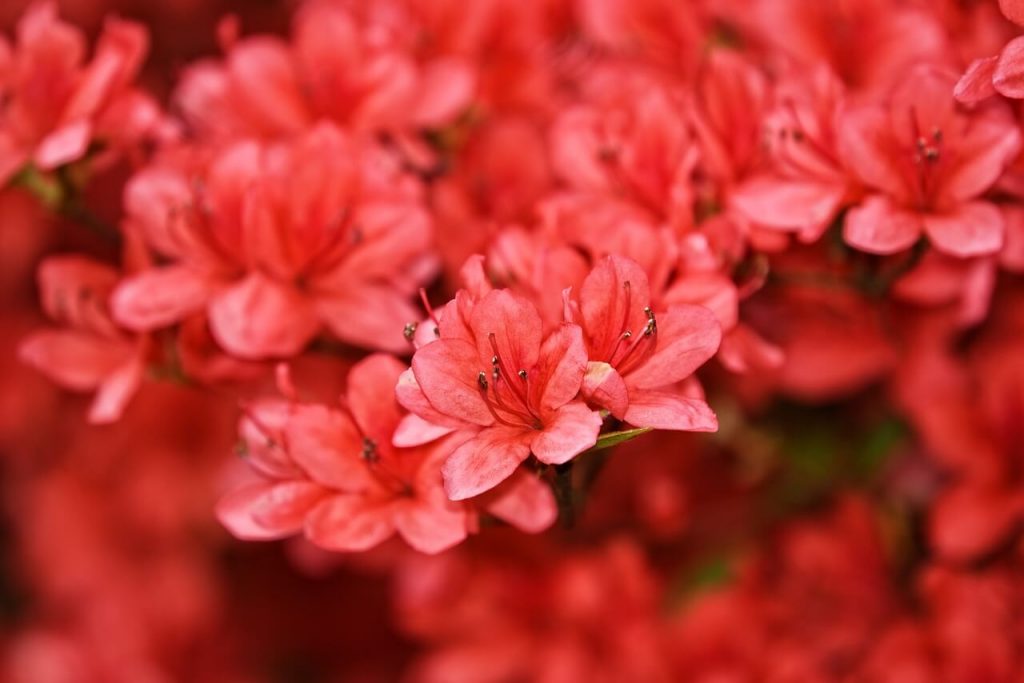
2. Summer Season (June – August)
This is the season when the temperature rises higher 30-degree Celsius. This season is also called Monsoon Season. It is hot and wet everywhere as there is daily rainfall with thunderstorms. It is not the best season to visit Nepal.
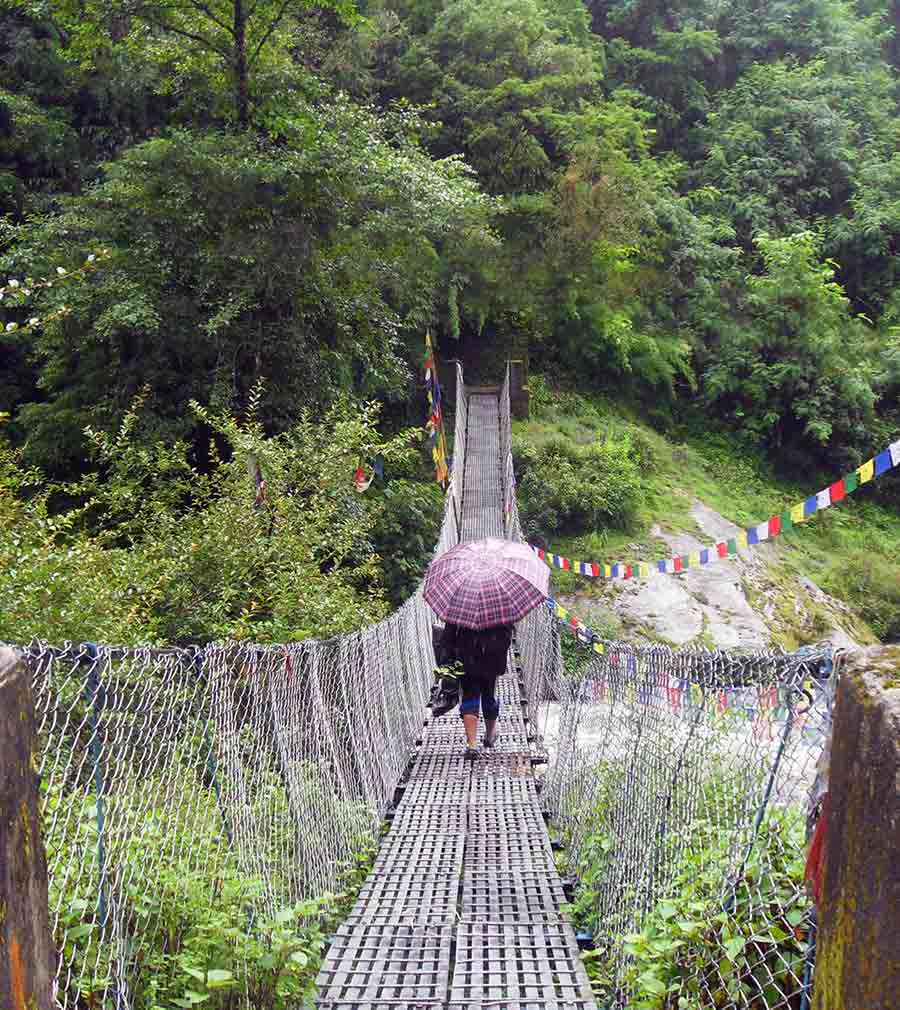
3. Autumn Season (September – November)
Well, Autumn Season is the best tourist season in Nepal. The weather in this season is amicable for trekking, hiking, etc.
You can find many tourists booking their tickets to Nepal for the mesmerizing view of the mountains. This is also the season of the Biggest Festival Dashain in Nepal , celebrated by Hindus followed by another festival Tihar .
4. Winter Season (December – February)
As you know, In the winter season the weather is cold. At higher altitudes, there will be heavy snowfall . This is also the best season to visit Nepal if you want to explore lower elevations.
Related Reading: What to wear in Nepal in January?
Temperature in Kathmandu
Nepal has its own six seasons. The temperature varies according to the elevation. We are going to list the monthly average temperature of Kathmandu the (Capital City of Nepal).
Must Read: Getting Around Nepal
This best time to visit Nepal guide is going to help you to choose the best season to travel to Nepal. As Nepal has numerous beautiful destinations, any season is the best season to explore different regions.
If you have any questions/queries then please feel free to comment below. We will try to reply ASAP.
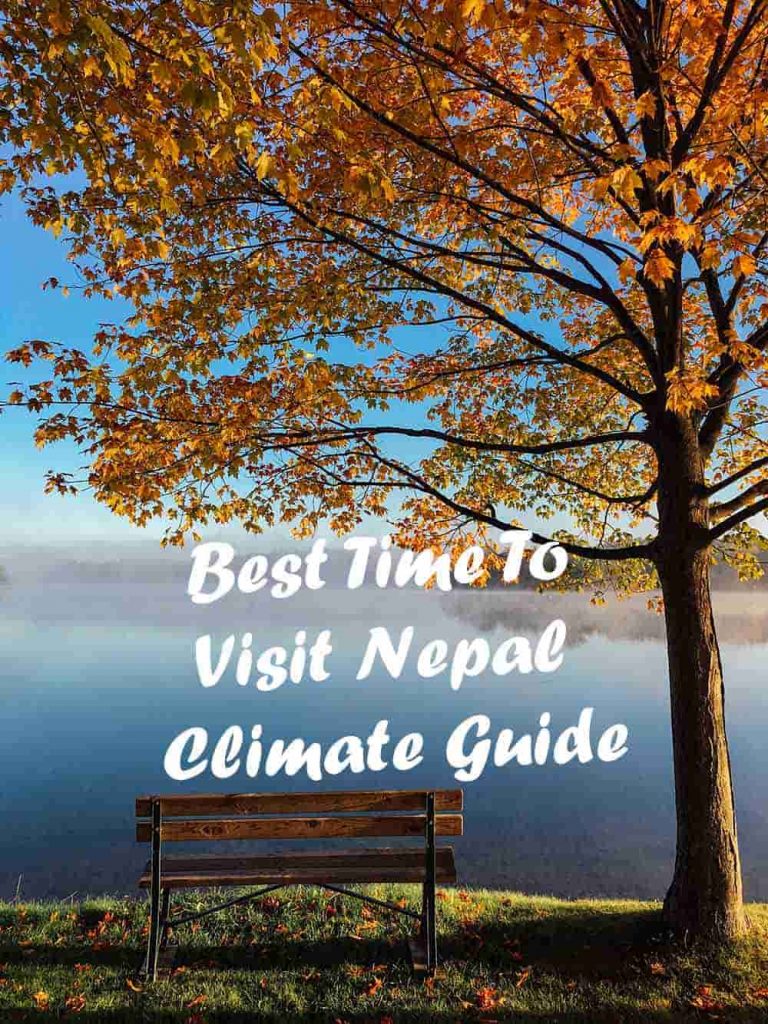
Suraj Katwal
Suraj is a travel enthusiast who believes in finding solace in the heart of nature. He enjoys exploring new destinations, different culture, and encouraging people to travel.
Travel Resources
Hotel & Flight
Searching for the best hotels & flight tickets to visit Nepal? Check out the best deals.
Related Articles...
Yeti Airlines in Nepal
Buddha Airlines in Nepal
Kathmandu Airport Guide – Tribhuvan International Airport
Tipping in Nepal: How Much to Tip and When?
Can US Citizens Drive in Nepal?
Dhap Dam – Location, Distance, Hiking Route
Do US citizens need visas for Nepal?
How much dollar can I carry to Nepal?
Leave a Comment Cancel reply
About stunning nepal.
Stunning Nepal is a travel blog that intends to provide travel tips, references & guides, things to do & also your guide for hiking & trekking in Nepal.
Things To Do
Trekking in Nepal
Food and Festivals
Privacy Policy
Get in Touch
Stunning Nepal
Address: Dhanawantari Marg, Kathmandu 44600, Nepal
+977-9808211139
© 2024 Stunning Nepal. All Rights Reserved

Change location
- Call us today until 5pm
- 01993 838 925 01993 838 315 or
- REQUEST A QUOTE
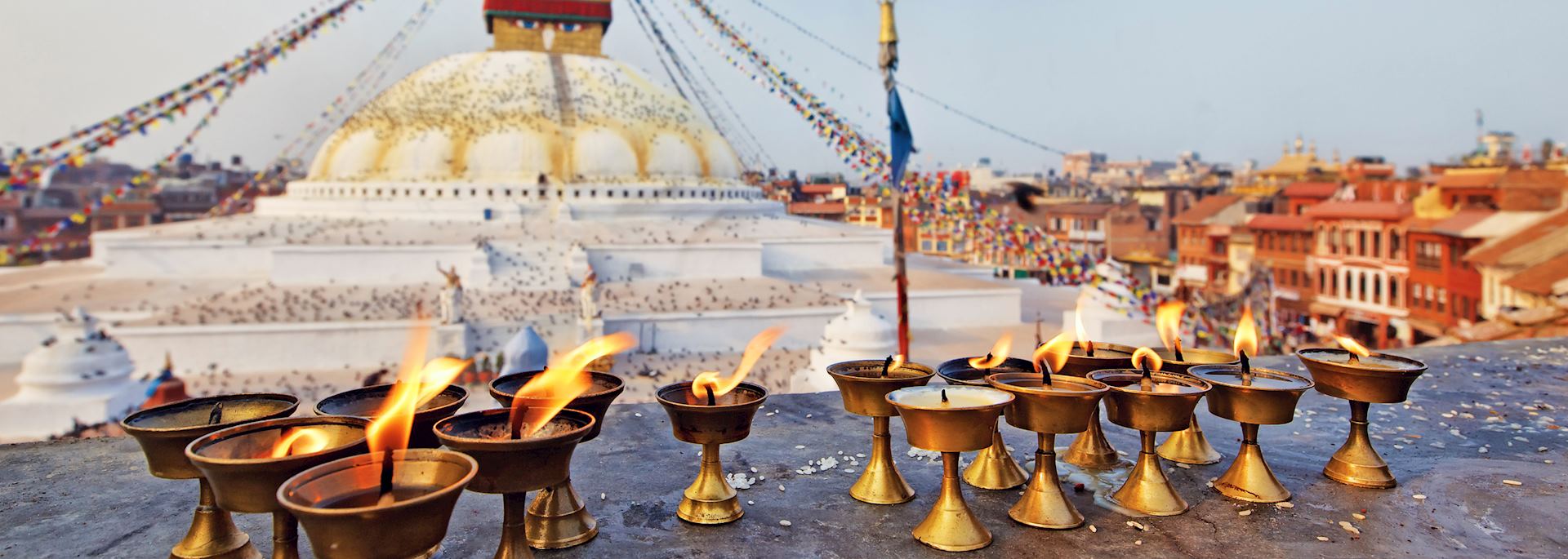
When is the best time to visit Nepal?
- Month-by-month
The best time to visit Nepal is between October and December, when the skies are a clear blue and the views spectacular. The weather remains dry until about April, with temperatures varying between regions.
January and February can be very cold, especially at night, with average temperatures of 6°C. But you’ll be rewarded with clear skies, incredible panoramas and quieter trekking trails, as there are fewer visitors. High altitude trekking is not recommended at this time.
Late spring in May is a beautiful time to travel, with the rhododendrons bursting into bloom. Heat and humidity levels build, with temperatures climbing to 35°C.
The monsoon season arrives in June and lasts until the end of August, with the clouds obscuring the glorious mountain views. The heavy rain and landslides make travel difficult and many places close down, so the country is best avoided at this time.
Nepal celebrates festivals all year, so there is often a festival or pilgrimage taking place. Ask your specialist for more details, as the dates often change from year to year.
- Make an enquiry
- Request a brochure
Month-by-month guide for travelling in Nepal

Visiting Nepal in December - February
From late December through to February, Nepal's weather is pleasant during the day but temperatures drop significantly at night-time; especially in the mountains. January is the coldest month, but fewer visitors results in quieter sightseeing opportunities. Many hotels and lodges offer fireplaces, blankets and hot water bottles to keep you cosy.
Events & Festivals
- Wildlife in Nepal (October to April): Nepal's wildlife is worth exploring during the drier months. Chitwan is one of the better protected national parks, offering great sightings of rhinos, monkeys, birds and even elephants.
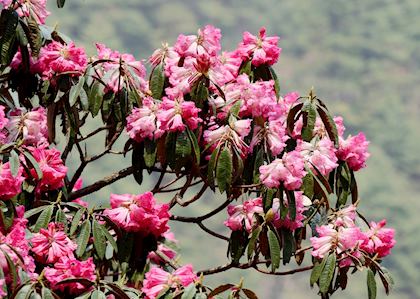
Visiting Nepal in March - May
March marks the beginning of spring, when temperatures increase and rhododendrons bloom. Days are longer during March and April, making them perfect for trekking, although temperatures are still cool at night. It's a popular time to travel, so plan well in advance. May is one of the warmest months of the year but will bring cloud and showers before the monsoon arrives.
- Holi festival is becoming more well-known around the world, but it isn't just an Indian festival; it's celebrated across the cities and towns of Nepal every March too.
- Rhododendron season (March and April): Nepal’s landscapes change colour in the spring as a range of rhododendron species spread across the hills and mountains, changing colour according to altitude from reds to pinks and whites.
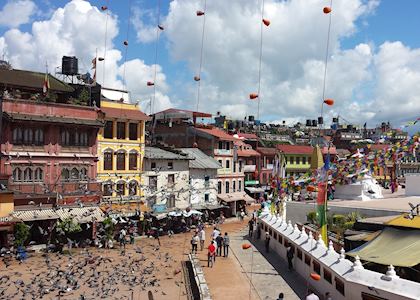
Visiting Nepal in June - August
The monsoon season occurs from June through to August. Days are warm (up to 30°C), wet and with high humidity. Due to Nepal’s topography, rains often occur at night, resulting in beautiful morning scenery. Although we’d advise against trekking at this time of year, city sightseeing is still possible and quieter than peak periods.

Visiting Nepal in September - November
As the monsoon dissipates in September, Nepal welcomes beautiful clear skies, fresh air and incredible views. October and November are two of the best months to visit as dry days make trekking easier and offer good visibility. The verdant landscapes following the rains are ideal for photographers.
Nepal Climate Guide
Why travel with audley.
- 100% tailor-made tours
- Fully protected travel
- Established for over 25 years
- 98% of our clients would recommend us

Travel advice
Practical tips for travelling to Nepal, from social protocols to guidance on money matters, with a link to the latest FCDO travel advice.

Request our brochure
Covering all seven continents, The World Your Way shows you how you can see the world with us. It features trip ideas from our specialists alongside hand-picked stays and experiences, and introduces our approach to creating meaningful travel experiences.
Trip ideas and travel guides for exploring Nepal
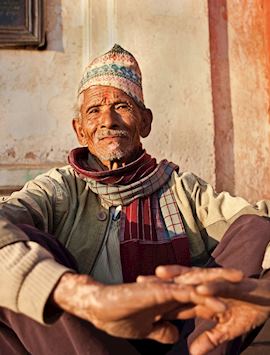
Kathmandu Valley discovered
12 days from £3,375pp

Discover Nepal
14 days from £5,050pp
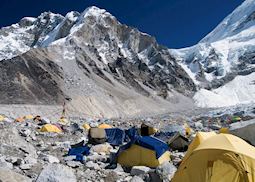
Nepal trekking: walking on the roof of the world
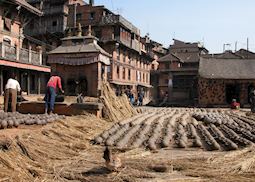
There’s more to Nepal than trekking: our highlights guide
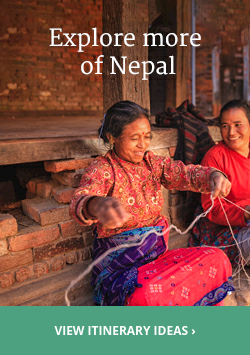
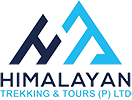
- Everest Region Trek
- Annapurna Region Trek
- Manaslu Region Trek
- Mustang Region Trek
- Langtang Region Trek
- Makalu Region Trek
- Dolpo Region Trek
- Kanchenjunga Region Trek
- Best Selling Treks
- Nepal Trekking
- Luxury Treks in Nepal
- Challenging Treks in Nepal
- Family Treks in Nepal
- Peak Climbing
- Mountain Climbing in Nepal
- Nepal Tour Packages
- Luxury Tours in Nepal
- Helicopter Tours
- Nepal Family Tours
- Bhutan Tour
- Kailash Tour
- Pokhara Day Tour
- Kathmandu Day Tours
- Jungle Safari in Nepal
- Nepal Visa Information
- Packing List for Trekking
- Bhutan Visa
- Fitness Training
- 10 Comprehensive Nepal Trekking Tips
- Flight Cancellation
- Travel Insurance
- The Differences
- Terms & Conditions

The Best Time to Visit Nepal: A Season-by-Season Guide
: 2023-12-18
Last Updated : 2024-01-26
Table of Contents
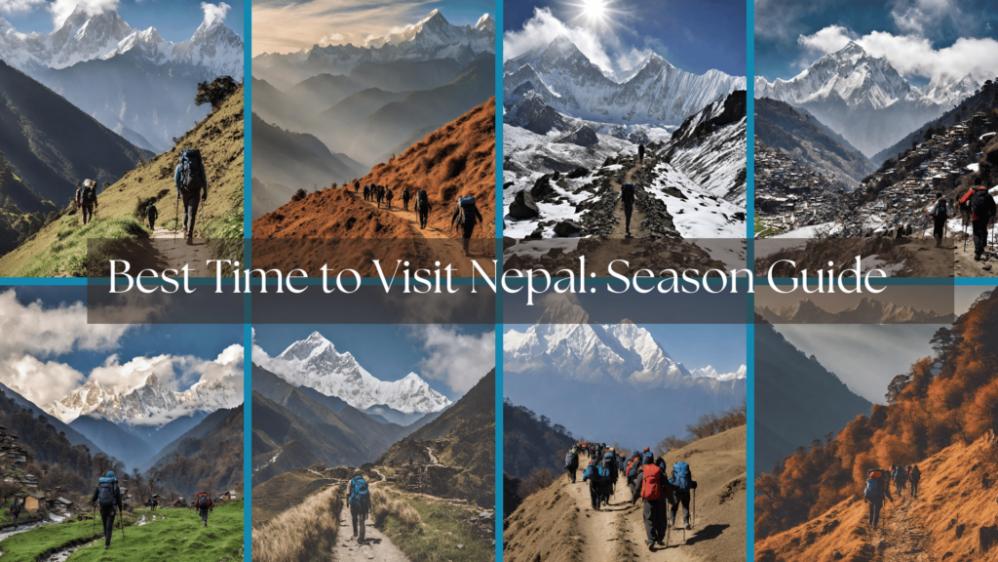
Welcome to Nepal, a beautiful country nestled in the Himalayas. Nepal’s climate is as diverse as its landscapes, ranging from subtropical plains to towering peaks. Understanding Nepal’s weather is important for anyone planning to visit the country.
In this guide, we will explore Nepal’s seasons, highlighting the unique experiences each one offers. Hence, answer the ultimate question of the best time to visit Nepal. Whether you love spring’s colorful blooms, the rhythmic rains of the monsoon, the crisp air of autumn, or the snowy landscapes of winter, Nepal has something special to offer in every season.
Come with us as we uncover the best time to visit Nepal and the magic of its varied climates.
Spring Splendor: March to May for The Best Time to Visit Nepal
Nepal, during the months of March to May, transforms into a captivating landscape, offering a unique blend of natural beauty and favorable weather. It’s also considered the best time to visit Nepal.\

This season, known as spring, is a favorite among travelers or trekkers for several compelling reasons. Some of which are:
1. Blossoming Rhododendrons:
As winter bids goodbye, the hills and mountains of Nepal come alive with the vibrant hues of rhododendron flowers. The national flower of the country, rhododendrons, paint the landscape in shades of red, pink, and white. The blooming process, unfolding during spring, creates a breathtaking panorama that attracts nature enthusiasts and photographers alike. It can also be termed the best time to visit Nepal. The entire trail comes alive, and it makes the journey feel like magic.
2. Mild and Pleasant Temperatures:
Spring brings about a welcome relief from the cold winter temperatures. During these months, the weather is characterized by mild temperatures, making it an ideal time for outdoor activities.
Whether you are on a trek through the Himalayas or exploring the cultural richness of Kathmandu Valley, the comfortable weather enhances the overall travel experience. Hence, it can also be termed the best time to visit Nepal.
3. Ideal Trekking Conditions:
March to May is considered the prime trekking season in Nepal. The trails are clear, and the weather is conducive to long journeys through the diverse landscapes of the country. Popular trekking routes, such as the Annapurna Circuit trek and Everest Base Camp to even the Manaslu Circuit Trek or others, have become more accessible, offering trekkers the opportunity to witness the jaw-dropping beauty of the Himalayas of Nepal without the challenges posed by extreme weather conditions.
4. Festivals and Cultural Celebrations:
Spring is a time of festivities in Nepal. The major Hindu festival of Holi, known as the Festival of Colors, is celebrated with enthusiasm and joy.
Additionally, the Nepali New Year (Nepal Sambat) falls during this season, marked by various cultural events and processions. Travelers have the chance to involve themselves in the vibrant local culture and witness traditional celebrations.
5. Wildlife Sightings:
The national parks and wildlife reserves of Nepal come alive during spring. The moderate temperatures draw both migratory and resident species, making it an excellent time for birdwatching and wildlife safaris. Chitwan National Park and Bardia National Park are particularly popular destinations for nature enthusiasts during this season.
In essence, spring in Nepal is a celebration of nature’s renewal and a perfect time to experience the country’s rich cultural tapestry against the backdrop of blooming rhododendrons and pleasant temperatures. Whether you’re a trekking enthusiast, a nature lover, or someone seeking cultural understanding, March to May offers a perfect opportunity to witness Nepal and its magic.
Summer Adventures in Nepal: June to August for The Best Time to Visit Nepal
During Nepal’s summer, from June to August, there are some unique experiences and sights for people who like adventure.
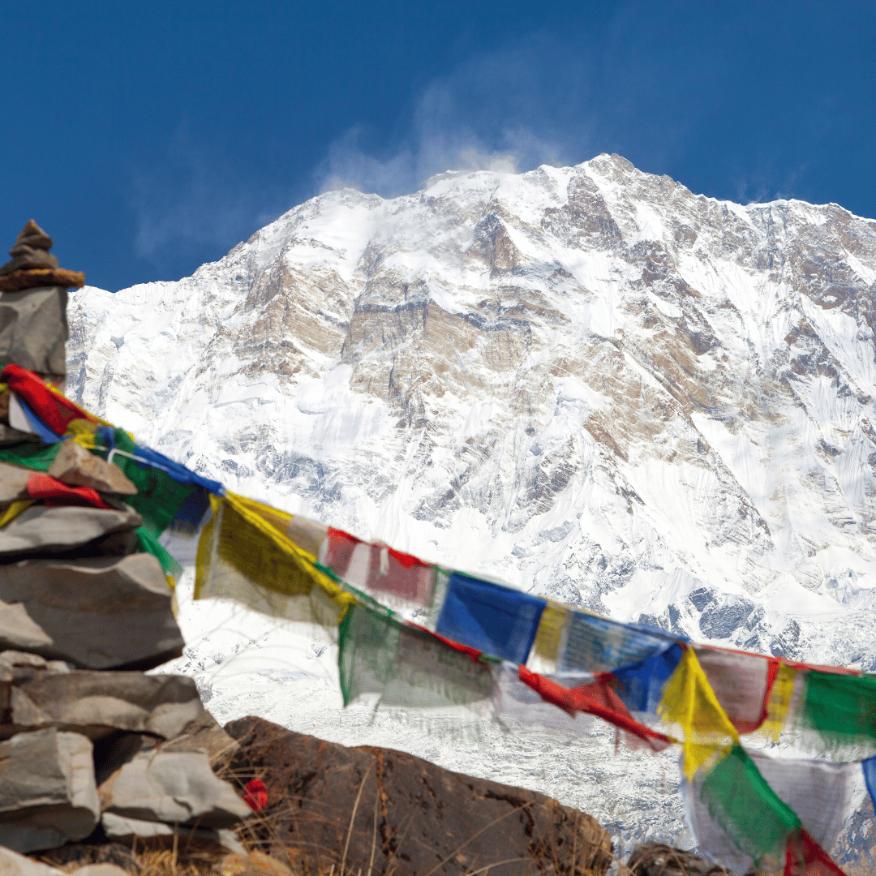
Even though it’s the rainy season, there are still many interesting things to explore and experience in Nepal’s beautiful nature and rich culture.
- Monsoon Marvels
Nepal’s monsoon season, from June to August, turns the land into a beautiful green paradise. Even though it brings heavy rains and some challenges, it shows a different side of Nepal, full of natural beauty and cultural charm. The dry hills and valleys become lush and green, creating a stunning view. The air smells fresh, and the sound of rain is soothing. Embracing the monsoon in Nepal means experiencing a renewed environment where every rain shower brings life to the diverse ecosystems of this Himalayan nation. It’s a unique and enchanting experience for those who love the rhythm of the rainfall.
- Trekking Challenges During Monsoon Time in Nepal
Trekking in Nepal during the monsoon season, from June to August, presents intrepid adventurers with a set of unique challenges and rewards.
While the lush landscapes and fewer crowds can be tempting, it is essential to be well-prepared and aware of the difficulties that come with monsoon trekking.
- Continuous rainfall transforms trekking trails into muddy paths, making each step a potential slip. Proper footwear with good traction is crucial, and trekking poles can provide added stability.
- Monsoon rains lead to swelling rivers and streams, creating challenging water crossings. Trekkers need to exercise caution and be prepared with waterproof gear to ensure a safe passage.
- The monsoon is peak leach season in Nepal. These small, blood-sucking creatures can be abundant in damp areas. Wearing leach socks and applying insect repellent can help prevent uncomfortable encounters.
- Persistent clouds and mist may obscure panoramic mountain views that trekkers typically enjoy during other seasons. Patience and a positive mindset are essential, as unexpected clearings can reveal breathtaking views.
- Heavy rainfall increases the risk of landslides along mountainous terrain. Staying updated on weather forecasts and local advice, as well as avoiding high-risk areas, is crucial for trekker safety.
- Monsoon trekking can be physically demanding due to high humidity and temperatures. Proper hydration and appropriate clothing choices that balance protection against rain and breathability are essential.
- Certain high-altitude trekking routes may become impassable due to adverse weather conditions. It’s advisable to consider alternative, lower-altitude treks during the monsoon.
- For those unfamiliar with monsoon trekking, joining guided tours with experienced local guides is recommended.
- Monsoon trekking requires a flexible mindset. It is important for trekkers to be adaptable to changing weather conditions and to welcome the unique experiences that come with trekking in Nepal during this challenging yet rewarding season.
- Practical Tips for Summer Travel
Exploring Nepal during the monsoon season can be a rewarding experience, but it comes with its own set of challenges.
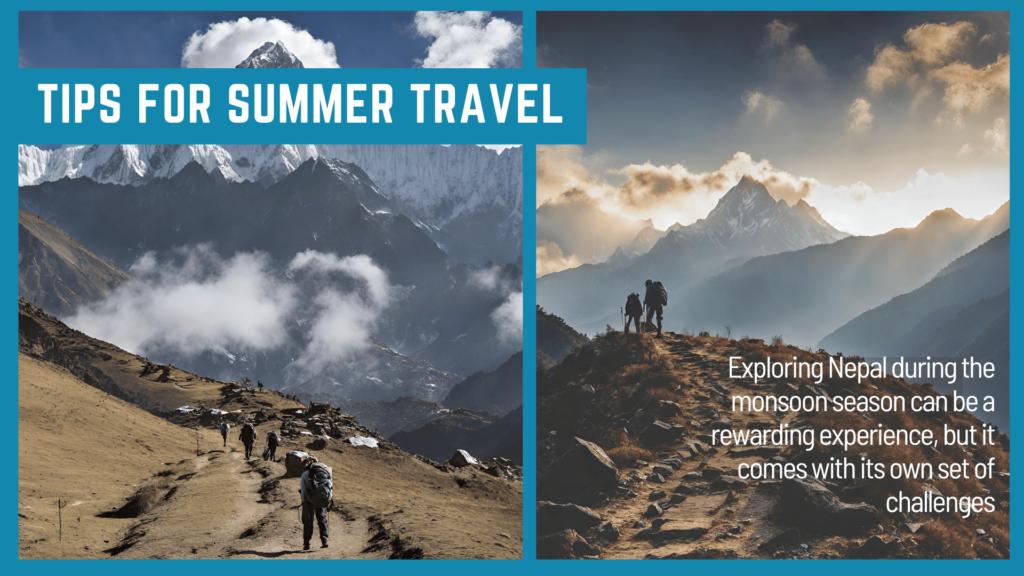
Here are some practical tips to ensure a safe and enjoyable journey during this unique time of the year:
- Water-proof gear is key. Invest in quality waterproof gear, including a sturdy rain jacket, waterproof backpack, and rain cover for your belongings. This will keep you dry during unexpected downpours.
- Quick-Dry Clothing: Pack quick-dry clothing to manage the high humidity levels. Fabrics like polyester and nylon are ideal for wicking away moisture and drying faster than cotton.
- Footwear Matters: Opt for waterproof or water-resistant footwear with good grip. This is crucial, especially if you plan on trekking or walking through muddy trails.
- Stay Hydrated: Despite the rain, dehydration can still be a concern. Drink plenty of water to stay hydrated, especially if you’re engaged in physical activities.
- Check Weather Updates: Stay informed about the weather forecast. While monsoons are expected, being aware of severe weather conditions can help you plan your activities accordingly.
- Flexible Itinerary: Keep your travel plans flexible. Heavy rain may lead to trail closures or transportation delays, so having contingency plans in place is advisable.
- Mosquito Protection: Mosquitoes thrive in the monsoon, so carry mosquito repellent and consider staying in accommodations with screens on windows or bed nets.
- Travel Insurance: Ensure you have comprehensive travel insurance that covers unexpected events such as flight cancellations, medical emergencies, or delays due to weather.
- Respect Local Advice: Listen to the advice of locals and guides. They have valuable insights into weather patterns and can provide guidance on safe travel routes.
Autumn Bliss: September to November for The Best Time to Visit Nepal
Nepal is seen at its very best during the months of September to November, making it an ideal time to experience the country’s natural and cultural wonders.
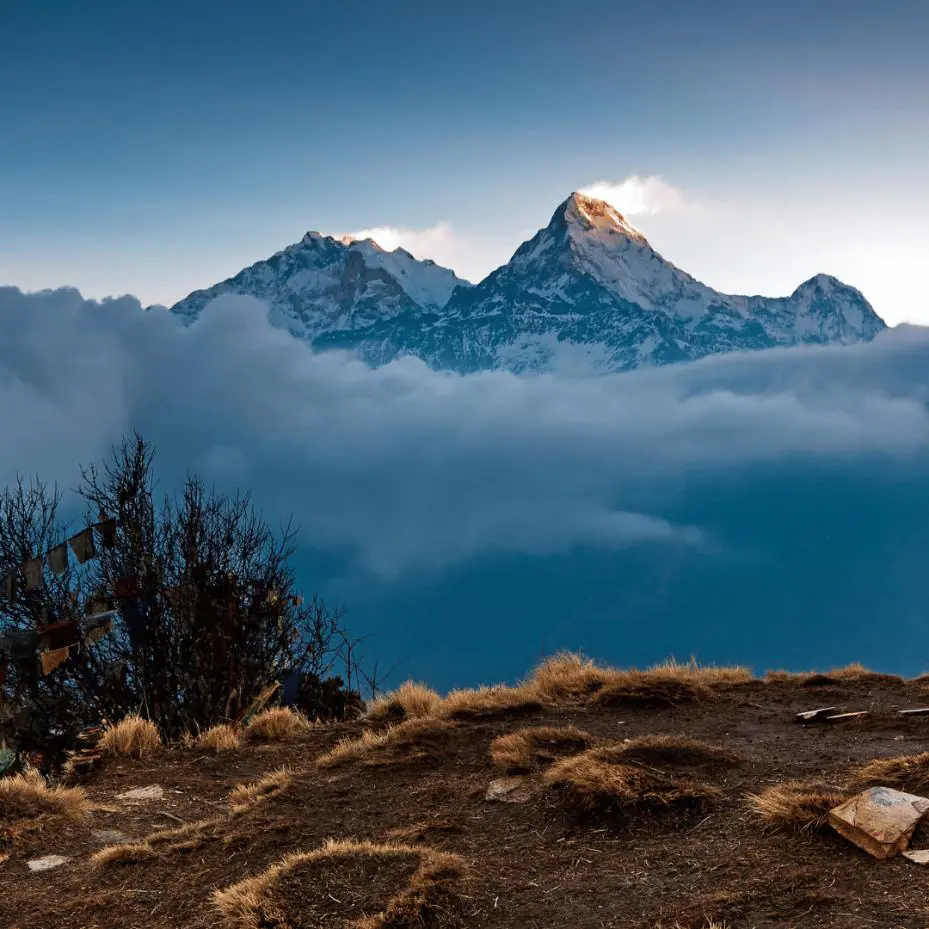
If you’re planning a trip to Nepal, then September to November is the perfect time to go! During these months, Nepal is at its most beautiful and enchanting. The weather is cool and comfortable, and the skies are clear, allowing for stunning views of the Himalayas. The lush greenery of the monsoon season still lingers, but the rains have stopped, making it easier to explore the countryside.
- Clear Skies
As the monsoon bids farewell, the skies over Nepal transform into a canvas of clear blue. The crisp air and visibility offer breathtaking views of the majestic Himalayan peaks. This clarity is a photographer’s dream, providing an unobstructed backdrop for capturing the beauty of the landscapes.
- Festivals Galore
Autumn in Nepal is synonymous with vibrant festivals. Dashain, the biggest Hindu festival in the country, unfolds during this season, bringing communities together in joyous celebrations.
The streets come alive with colorful decorations, traditional music, and the warmth of shared festivities. Witnessing these cultural events provides a unique insight into the rich tapestry of Nepalese traditions.
- Peak Trekking Season
Autumn is the best time for trekking enthusiasts to visit Nepal and experience the ultimate adventure. The trails are at their finest, with colorful rhododendron forests and terraced fields. The weather is just right, with moderate temperatures and clear skies, making it perfect for trekking in popular regions like Everest Base Camp and Annapurna Circuit. That is why autumn is the peak trekking season, attracting adventurers from all over the world.
But trekking is not the only reason to visit Nepal in autumn. This season offers a perfect blend of natural beauty and cultural richness for all types of travelers. The weather is perfect for exploring the diverse wonders of Nepal, from the stunning mountains to the vibrant cities. You can also witness the colorful festivals and traditions of the Nepali people, like the Dashain festival.
So, whether you’re a trekking enthusiast, a cultural explorer, or just looking for perfect weather, Nepal in autumn is the place to be.
Don’t miss the chance to experience the enchantment of this season and discover the wonders that make Nepal truly spectacular.
Winter Wonders: December to February for The Best Time to Visit Nepal
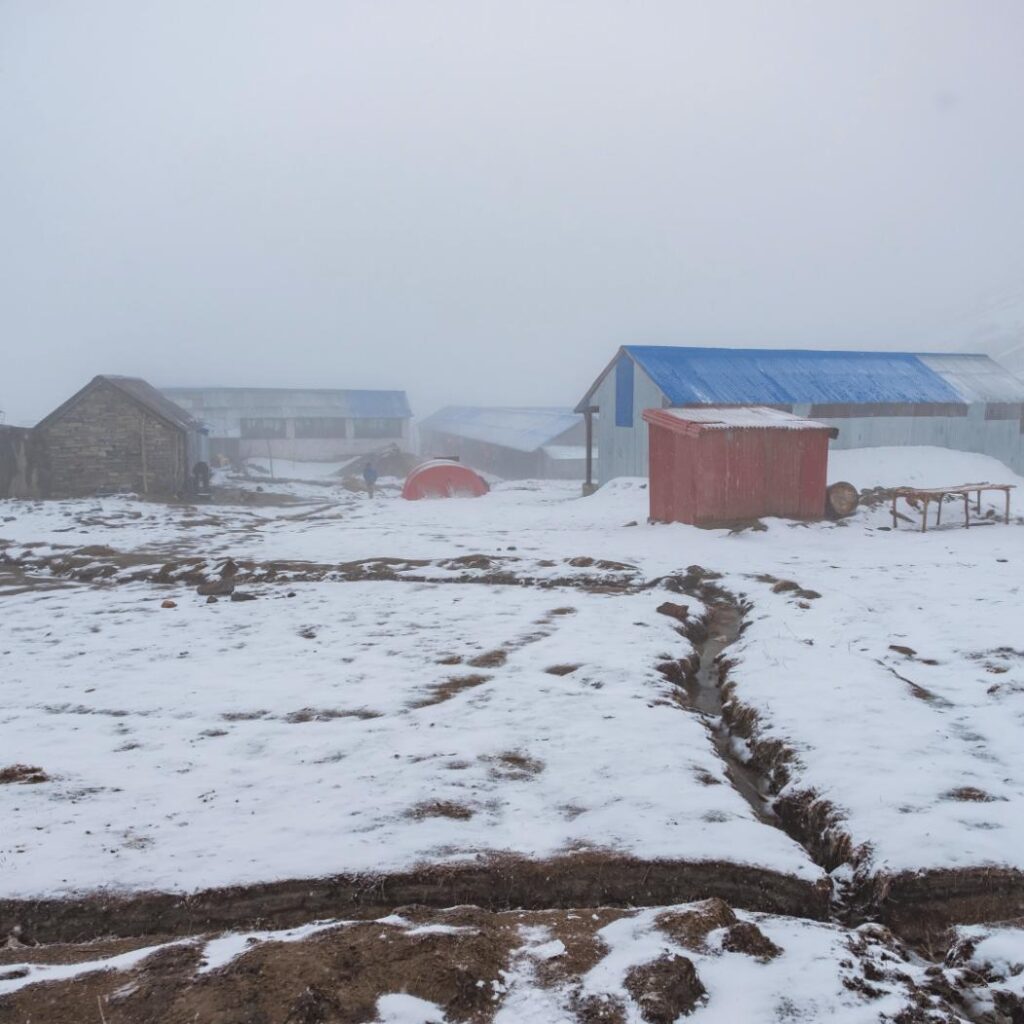
As the chill sets in and snow blankets the majestic landscapes, Nepal transforms into a winter wonderland from December to February. This season offers a unique charm with its snow-capped mountains, serene valleys, and a host of cultural experiences that make it an enticing time to visit the country.
- Snow-Capped Majesty
During the winter months, Nepal’s majestic peaks, like the famous Himalayas, are covered in a beautiful white snow blanket. The sight of these snow-capped mountains is absolutely stunning and draws in adventurers and nature lovers from all over. The air is fresh and clear, making it the perfect time for thrilling treks and mountain expeditions with amazing views.
- Tranquil Valleys
The winter season brings a serene calm to Nepal’s valleys. The usually bustling landscapes take on a peaceful ambiance, offering a different perspective for those seeking a tranquil escape.
Whether you are exploring the Kathmandu Valley or the picturesque Pokhara, the snow-covered scenery adds an extra layer of beauty to these cultural hubs.
- Festive Celebrations
December to February is not only a time of natural beauty but also cultural vibrancy. Nepal celebrates various festivals during this period, including Maghe Sankranti and Losar (Tibetan New Year).
Understand and enjoy the local traditions, witness colorful processions, and participate in age-old rituals that showcase the rich cultural tapestry of the region.
- Winter Treks and Adventures
While some higher-altitude treks may be challenging due to snowfall, there are numerous winter trekking options for all levels of adventurers.
Explore trails with a backdrop of snow-covered pines and rhododendron forests, offering a different kind of trekking experience compared to other seasons.
- Photographers’ Paradise
In winter, the clear skies and soft, gentle light make Nepal a paradise for photographers. You can capture the beautiful contrast of snowy landscapes against the blue sky and the unique winter scenes that show off Nepal’s natural beauty in a whole new way.
Conclusion: Finding Your Perfect Time to Explore Nepal
In conclusion, Nepal is a great place to visit all year round, with each season offering different experiences. After looking at the details of each season, it’s clear that the best time to go depends on what you’re looking for and what kind of adventure you want.
Whether you are into the bright colors of spring, the greenery of summer, the lively culture of autumn, or the peaceful snowy scenes of winter, Nepal is ready to show you its wonders all year long.
Use this guide to plan your trip and let Nepal work its magic on your travel memories with us at Himalayan Trekking and Tours, the best trekking agency in Nepal .
Send an Enquiry
© 2024 - Himalayan Trekking and Tours (P) Ltd. All Rights Reserved.
- Best time to visit Nepal
Book your individual trip , stress-free with local travel experts
Select Month
- roughguides.com
- Travel guide
- Itineraries
- Local Experts
- Travel Advice
- Accommodation
Plan your tailor-made trip with a local expert
Book securely with money-back guarantee
Travel stress-free with local assistance and 24/7 support
We chose this trip specifically as we are regular hill walkers and had always wanted to hike in the Everest region of Nepal, but had been put off by tales ...
Nepal attracts visitors keen to explore its diverse scenery – from jungles to high mountain peaks, to discover its fascinating wildlife and delve into its rich cultural heritage.
Weather in Nepal
When is the monsoon in nepal, when is the best time to visit nepal, when is the best time to visit kathmandu, when to go trekking in nepal, festivals and holidays in nepal, nepal festival calendar, dance and culture shows, travel ideas for nepal, created by local experts.

Exclusive Everest
Trek in the Everest region of Nepal's Himalayas, absorbing spectacular views at every step, including Everest rising above the Nuptse Ridge, Lhotse, the iconic peak of Ama Dablam and other Himalayan giants too. Top this off with a shot of warm Nepalese culture for an experience of a lifetime.
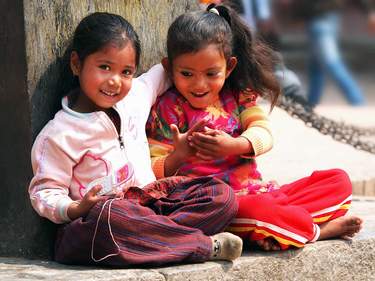
Himalayan Family Adventure
Experience Nepal's hill villages and jungle lowlands as you embark on a family-friendly adventure of a lifetime. Expect mini mountain treks, overnight camps, river rafting and wildlife safaris. Come here for action, stunning mountain scenery and a look around bustling Kathmandu too.

The UNESCO World Heritage Sites of Nepal
Set in the heart of the Himalayas, the landlocked South-Asian country of Nepal is home to a wealth of UNESCO World Heritage Sites. From wild jungles to ancient civilisations, Nepal offers a combination of history, culture and nature; perfect for the most well-seasoned of travellers.
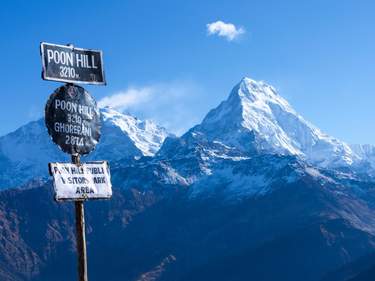
A Taste of Annapurna
Experience the great Nepalese outdoors in all its glory with this moderate trek: pass through picturesque mountain villages like Ghorepani; soak up a stunning sunrise from Poon Hill; marvel at the snow-capped peaks of the Himalayas, all with this unique adventure trek!

Himalayan Trilogy: Nepal, Bhutan, Tibet Unveiled
Discover the majestic kingdoms of the Himalayas on the "Best of Nepal, Bhutan, and Tibet" trip. This journey offers an unparalleled blend of towering peaks, ancient monasteries, and vibrant cultures.

Silver Triangle Nepal Tour
Embark on an unforgettable journey through Nepal's Silver Triangle! Explore the serene beauty of Pokhara, the wilderness of Chitwan National Park, and the ancient wonders of Kathmandu.
The country has much to offer all year round. Differences in the seasons determine where’s good to go at any given time of year – meaning the best time to go to Nepal goes hand-in-hand with the activities on your wishlist.
Nepal is broadly temperate, with four main seasons centred around the summer monsoon from June to September. The build up to the monsoon is stiflingly hot with afternoon clouds and rain showers. The subsequent monsoon brings relief with a drop in temperatures and the heavy rains bring the countryside into bloom.
While winter is mostly clear and stable it can also be seriously cold in trekking areas. Spring sees warm weather, while the months of autumn are clear, dry and fresh after the recent rains.
Each season has its charms and each offers something different to travellers exploring this wonderful Himalayan country.
Nepalis welcome the monsoon, the timing of which may vary by a few weeks every year, but typically begins in mid-June and peters out in the last weeks of September.
During these months, expect to see heavy rains every day, especially in July and August. During June and September, rain is considerably lighter. The good news is that monsoon rains usually only last for a couple of hours and their timing is quite predictable. So it’s still possible to enjoy a great trip to Nepal during the monsoon – all you need to do is choose your destination and itinerary carefully, especially if trekking is top of the list.
The monsoon doesn’t affect all of Nepal equally. Areas in the Himalayan rain shadow, such as Dolpo and Humla in western Nepal and the Mustang region north of Annapurna , are spared the drenching other areas receive. The area of Pokhara is the wettest part of Nepal during monsoon.
The main thing to remember about the monsoon season is that you need to be flexible with your travel plans. In some areas, flights may be delayed or cancelled due to heavy rains. Landslides can happen, causing road closures. Always check with your hotel or guest house before heading on a road trip during monsoon season. They should be able to find the most up-to-date information about road conditions. Bring appropriate waterproof clothing and keep your electronics in waterproof bags if you’re out and about.
And bear in mind, when the rain stops it will still be hot and sunny, so you can still get out and discover the country during the monsoon season.
The best time to visit Nepal depends on what you plan to do while in the country. Fall/autumn and spring are the most popular times to visit for hikers, climbers and mountaineers. At this time, clear skies and pleasant temperatures create the ideal conditions for adventures in the mountains.
Low season (which coincides with the monsoon season) can be an option if you’re on a budget. Firstly, you’re likely to find discounts on accommodation and tours – plus, you won’t have to deal with crowds. Secondly, if you don’t plan on hitting the Himalayas , monsoon season can be a great time to visit.
Spring is a good time to visit Nepal’s valleys and forests. March marks the start of the blooming season in many parts of the country and large areas are covered in bright pink rhododendrons – Nepal’s national flower. This is also a great time to explore centres of Buddhist culture and architecture, such as Tengboche monastery.
You can have a fabulous travel experience in Nepal during the winter. Low humidity and minimal chances of rain make this season great for travel photography and low-altitude hikes.
When to visit Nepal in winter
Winter in Nepal is cold, but cold temperatures are balanced by brilliant sunshine and clear blue skies. It can be a wonderful time for the more experienced trekker to tackle the mountains. Winter weather in Nepal is also perfect for taking photos that capture the country’s stunning natural beauty.
Visiting Nepal in December – February
In terms of the weather, winter is the perfect time to visit Chitwan National Park , a great destination for jungle walks and safari expeditions. The park is home to Bengal tigers, elephants, rhinos, and more than 500 bird species. For the best chances of spotting wildlife, plan your trip around January or February. It’s worth noting, however, that this is one of Nepal’s most popular destinations, so unless you opt for the rainy season for a trip to Chitwan, you’ll be rhino spotting with a whole lot of other visitors. Bardia National Park , northwest of Nepalgunj, is a quieter alternative and offers the best chance to see tigers in Nepal.
The cold season is also a good time to spend a few days exploring Bandipur . This charming town will catch your eye with its traditional wooden architecture, busy markets, and scenic trails. The town is a five-hour drive from Kathmandu , which makes it a convenient getaway if you get tired of the capital’s hectic pace.
Speaking of Kathmandu, winter is a great time to layer up and explore the old city. Low temperatures are the perfect excuse to sit at a café in Thamel and enjoy a glass of Nepali tea, which comes in many varieties, or a cup of Nepal’s own-grown coffee.
The winter months are generally dry and settled, so it can be a good time for trekking – although it is inevitably colder. There can be snow at 2500m – sometimes lower, while conditions can mean passes over 4000m are uncrossable. You’ll also need appropriate gear for cold temperatures and heavy snowfall if trekking at high altitudes. Challenging conditions aside, if you’re an experienced trekker this can be a wonderful time to be on the mountains, with far fewer trekkers venturing out. At lower altitudes it can feel more like spring already.
When to visit Nepal in spring
Spring is one of the most popular seasons to visit Nepal. Snowfall begins to die down around March and makes it easier to move along hiking trails, so this is a fairly busy time in Nepal’s high-altitude destinations, although not as busy as in autumn/fall. But hiking and climbing are not the only things to do in the spring. In general, this is a great time to discover nature in Nepal.
Visiting Nepal in March – May
April is peak time for travellers heading to Everest base camp and the Annapurna circuit . These months are also a popular time to do short treks in the Nepalese countryside, for example at Ghorepani and Poon Hill or Mardi Himal.
But the options don’t end there: you can also explore lesser-visited destinations, such as the tea plantations in Ilam , in eastern Nepal. There’s also Panch Pokhari, a remote high-altitude wetland area home to five glacial lakes. Mountain scenery could also be your stunning backdrop at one of Nepal’s yoga retreats .
By May it is getting hotter and hazier and the weather is somewhat unsettled, with afternoon storms quite common. Go high if you’re trekking and expect rain, especially in the known wetter regions, such as Annapurna and the far eastern parts of the country.
When to visit Nepal in summer
Summer brings the monsoon rains to most of Nepal. At this time of the year, Nepal's climate is hot and humid, so the rains bring a refreshing break from the heat. But although Nepal is generally wet, the mornings are often clear and the countryside is bursting with colour – vivid green forests and rice terraces and bright wildflowers.
What’s more, summer is a pleasant time to go to Nepal if you want to avoid big crowds and peak season prices.
Visiting Nepal in June – August
Early summer is a fantastic time of year to discover Kathmandu’s historical heritage, without the crowds. And if you get caught in the monsoon rain (mid-June to early Sept), you can always wait for it to pass at one of the many cafés and tea houses.
If you’re into landscape or wildlife photography, early June is the time to see the spectacular landscapes at Shey Poksundo (She-Phoksundo) National Park. This is the country’s biggest national park, and as such, it’s home to hundreds of animal and plant species. You may even be able to spot endangered species here, such as Himalayan black bears, snow leopards and blue sheep.
Most people who visit Nepal for its superb trekking opportunities avoid the monsoon. Downpours can render trekking paths too slippery and muddy – plus, there are leeches to contend with! Mountain views may be obscured and general travelling around can prove problematic.
That said, you don’t need to rule out trekking altogether. Avoid wet areas, such as Annapurna and the far east of Nepal and stick to parts where the monsoon is weaker instead. The far west and areas in the Himalayan rain shadow are relatively sheltered. These include Dolpo, Humla and the mystical Mustang region north of Annapurna.
Mustang, home to Kali Gandaki Gorge, which at 8,270 feet (2,520 metres) is the deepest gorge in the world. Other must-sees in the area include villages such as Marpha (also known as the Apple Capital of Nepal) and Kagbeni.
Just remember, if you are travelling to Nepal for trekking expeditions, allow for sudden changes to your itinerary. The rain can affect transport, with delays and cancellations possible. Check road conditions before you venture out and bring waterproof clothing.
It’s as well to bear in mind, when the rain stops it will still be hot and sunny, so you can still get out and discover the country during the monsoon season.
When to visit Nepal in fall/autumn
Fall or autumn is one of the best seasons to travel to Nepal. From October it’s generally dry and skies are clear, which is why climbers and hikers love this season.
Daytime temperatures during the day at high altitudes are pleasantly cool for walking, whereas it’s hotter lower down. At night it’s getting colder high up but it’s unlikely to be too severe.
You’ll also have the chance to enjoy some of Nepal’s biggest festivals , such as Dashain (Desain, or Dashera) and Tihar (Tihaar), important Hindu festivals.
Visiting Nepal in September – November
The period after the monsoon, around September to early October can be unpredictable. If the rains have finished you’ll be blessed with mild temperatures and clear skies, which is why fall or autumn can be one of the best seasons to travel to Nepal. Trekking trails are also quiet – a joy for hikers and mountaineers. If you’re unlucky though, the monsoon may not have quite tailed off yet. In that case it could be hot and sticky and you may get caught in heavy showers – or even snow. Also those stunning mountain views could be shrouded in clouds.
Mid-October to mid-November is the best time for serious climbing and mountaineering in Nepal. But this also means that from September it’s the busiest time in the Himalayas. If you’d rather avoid the crowds, consider less popular destinations and activities:
- Nagarkot is one of the most photogenic places in Nepal. Temperatures may be chilly in the early morning and late evening, but visibility is great and you’ll enjoy panoramic mountain views.
- A multi-day rafting or kayaking trip along Sun Kosi (Sun Koshi) River or Ghaghara River. These trips are a great way of seeing the country and staying active at the same time.
- The Gokyo Lakes trek, where you’ll enjoy dramatic views of some of the world’s highest mountains.
- Cycling in the Kathmandu Valley and southern Nepal. The Terai lowlands are a fantastic destination for a two-wheel holiday. And they’re suitable for cycling beginners too.
Generally speaking, September to November is the best time to visit the city. At this time of the year, you’ll find dry weather, clear skies, and plenty of cultural events. But in fact, there’s no wrong time to visit the city.
Kathmandu weather is relatively mild compared to other parts of the country. The average annual temperature in Nepal’s capital city is a pleasant 18°C. January is the coldest month in Kathmandu (average 9°C). The hottest month is June with average temperatures of 23°C, and the wettest is July with more than 15 days of rain in the month. If you want to avoid rainy weather, November is your best bet.
The Kathmandu Valley is not as affected by monsoon rains as other parts of the country. Some flooding may happen here and there, but it shouldn’t affect your sightseeing plans. Remember that monsoon rains only last a few hours. Plan your activities around this, and you should have no problem visiting Kathmandu during the rainy season.
If you’re interested in high-altitude treks, it’s best to avoid the coldest winter months unless you’re experienced with cold weather conditions and have the necessary gear. Between December and February, heavy snowfall can make some trails and roads dangerous or impossible to cross.
On the other hand, spring – and the period before winter, bring dry and warm weather. These seasons are the best for high-altitude expeditions such as those to Annapurna , Everest , or Langtang .
Trekking in Nepal doesn’t always have to involve great heights. There are many short and lower-altitude hikes you can do around the Kathmandu Valley. A trek on the forested mountain of Phulchowki (Phulchoki) will take you from subtropical vegetation through Nepal chestnut, evergreen oaks and, of course, rhododendron. The unspoiled forest is one of the best places in Nepal for butterfly-spotting and birdwatching.
Or you can choose the Champadevi trek and go on a discovery journey of Tibetan monasteries.
These treks can be done all year round, except for the rainy season. For safety always go with a group when going on walks in the Phulchowki forest, as there have been robberies in recent years. And stick to the trails – anti-personnel mines were laid during the conflict in this region and you can't be 100% sure that they've all been removed.
Read more on trekking : where to go and when, accommodation, remote and restricted areas, organised treks and trekking independently, equipment, safety – and more.
The weather is not the only factor when thinking about when to go to Nepal. This Himalayan nation has a rich history, which can be discovered through its festivals. Nepal’s festival calendar fills every month of the year with colourful celebrations that offer interesting insights into the local culture. Here are some things you should know about festivals in Nepal:
- The exact date varies from year to year. This is because it is calculated based on the lunar calendar.
- Many Nepali festivals last several days. For example, Holi can last for a whole week, and Dashain runs for 15 days.
- Although there are festivals all year round, September to November is considered “festival season”. If you’re interested in the local culture, this is the best time to visit Nepal.
- Nepal’s five biggest festivals are Dashain (Sept/October), Holi (early spring), Nepalese New Year (which usually falls in April), Tihar (November), and Teej (Tij), a women-only celebration usually held in late summer.
- The majority of festivals have spiritual or religious origins. As a visitor, you’re welcome to observe – just remember to be respectful.
- Nepal is a multicultural nation. Some festivals are celebrated all over the country, but others are only observed by certain ethnic groups. Also, the rituals and celebrations can vary from community to community.
- Festivals are a great opportunity to try traditional Nepalese food . Sweet treats are everywhere during the Tihar festival. If you’re around for Holi, you’ll want to try dahi balla , or lentil fritters topped with yogurt and chutney. They’re addictive! Some of these delicacies are only prepared once a year, so don’t miss your chance.
Stumbling onto a local festival may prove to be the highlight of your travels in Nepal – and given the sheer number of them, you’d be unlucky not to. Though most are religious in nature, merrymaking, not solemnity, is the order of the day, and onlookers are always welcome. Festivals may be Hindu, Buddhist, animist or a hybrid of all three.
Hindu events can take the form of huge pilgrimages and fairs ( mela ), or more introspective gatherings such as ritual bathings at sacred confluences ( tribeni ) or special acts of worship ( puja ) at temples. Many see animal sacrifices followed by family feasts, with priests and musicians usually on hand. Parades and processions ( jaatra ) are common, especially in the Kathmandu Valley.
Buddhist festivals are no less colourful, typically bringing together maroon-robed clergy and lay pilgrims to walk and prostrate themselves around stupas (dome-shaped monuments, usually repainted specially for the occasion).
Many of Nepal’s animist peoples follow the Hindu calendar, but local nature-worshipping rites take place across the hills throughout the year. Shamanic rites usually take place at home, at the request of a particular family, although shamans themselves have their own calendar of fairs ( mela ) at which they converge on a particular holy spot. You’ll have to travel widely and sensitively to have the chance to witness a shaman in action.
Jubilant Nepali weddings are always scheduled on astrologically auspicious days, which fall in the greatest numbers during the months of Magh, Phaagun and Baisaakh. The approach of a wedding party is often heralded by a hired band baajaa or brass band and open-air feasts go on until the early hours. The bride usually wears red, and for the rest of her married life she will colour the parting of her hair with red sindur .
Funeral processions should be left in peace. The body is normally carried to the cremation site within hours of death by white-shrouded friends and relatives; white is the colour of mourning for Hindus, and the eldest son is expected to shave his head and wear white for a year following the death of a parent. Many of the hill tribes conduct special shamanic rites to guide the deceased’s soul to the land of the dead.
Knowing when and where festivals are held will not only enliven your time in Nepal, but should also help you avoid annoyances such as closed offices and booked-up buses. Unfortunately, as most are governed by the lunar calendar, festival dates vary annually, and determining them more than a year in advance is a highly complicated business best left to astrologers. Each lunar cycle is divided into “bright” (waning) and “dark” (waxing) halves, which are in turn divided into fourteen lunar “days”. Each of these days has a name – purnima is the full moon, astami the eighth day, aunshi the new moon, and so on. Thus lunar festivals are always observed on a given day of either the bright or dark half of a given Nepali month. The following list details Nepal’s most widely observed festivals, plus a few notable smaller events. For upcoming festival dates, check one of the online Nepali calendars (try visitnepal.com or nepalhomepage.com ).
Magh (Jan–Feb)
Magh (or Makar) Sankranti Marking a rare solar (rather than lunar) event in the Nepali calendar – the day the sun is farthest from the earth – the first day of Magh (Jan 14 or 15) is an occasion for ritual bathing at sacred river confluences, especially at Devghat and Sankhu. The day also begins a month-long period during which families do daily readings of the Swasthani, a compilation of Hindu myths, and many women emulate Parvati’s fast for Shiva, one of the Swasthani stories. For more information, see The Devghat Pilgrimage.
Basanta Panchami This one-day spring festival is celebrated on the fifth day after the new moon in most Hindu hill areas. The day is also known as Saraswati Puja, after the goddess of learning, and Shri Panchami, after the Buddhist saint Manjushri. School playgrounds are decorated with streamers and children have their books and pens blessed; high-caste boys may undergo a special rite of passage.
Phaagun (Feb–March)
Losar Tibetan New Year falls on the new moon of either Magh or Phaagun, and is preceded by three days of drinking, dancing and feasting. The day itself is celebrated most avidly at Boudha, where morning rituals culminate with horn blasts and the hurling of tsampa . Losar is a time for families, and is the highlight of the calendar in Buddhist highland areas, as well as in Tibetan settlements near Kathmandu and Pokhara.
Shivaraatri Falling on the new moon of Phaagun, “Shiva’s Night” is marked by bonfires and evening vigils in all Hindu areas, but most spectacularly at Pashupatinath , where tens of thousands of pilgrims and sadhus from all over the subcontinent gather for Nepal’s best-known mela . Fervent worship and bizarre yogic demonstrations can be seen throughout the Pashupatinath complex. Children collect firewood money by holding pieces of string across the road to block passers-by. Nepalis say the festival is usually followed by a final few days of winter weather, which is Shiva’s way of encouraging the Indian sadhus to go home.
Holi Nepal’s version of the springtime water festival, common to many Asian countries, lasts about a week, and commemorates a myth in which the god Krishna, when still a boy, outsmarted the demoness Holika. During this period, anyone is a fair target for water balloons and coloured powder. It culminates in a general free-for-all on Phaagun Purnima, the full-moon day of Phaagun.
Chait (March–April)
Chait Dasain Like its autumn namesake, the “little Dasain”, observed on the eighth day after the new moon, involves lots of animal sacrifices. The goriest action takes place at goddess temples, such as the one at Gorkha, and in the Kot courtyard near Kathmandu’s Durbar Square, where the army’s top brass come to witness the beheading of numerous buffalo and goats.
Ram Nawami The birthday of Lord Ram is observed on the ninth day after the full moon at all temples dedicated to Vishnu in his incarnation as the hero of the Ramayana, one of the great Hindu epics. By far the biggest and most colourful celebrations take place in Janakpur, where thousands of pilgrims flock to the Ram temple.
Seto Machhendranath Jaatra Kathmandu’s answer to Patan’s Machhendranath Rath Jaatra (see below), this sees a lumbering wooden chariot containing the white mask of the god Machhendranath pulled through the narrow lanes of the old city for four days, starting on Chait Dasain.
Baisaakh (April–May)
Nawa Barsa Nepali New Year, which always falls on the first day of Baisaakh (April 13 or 14), is observed with localized parades. Culminating on Nawa Barsa, Bhaktapur’s five-day celebration, known as Bisket or Biska, is the most colourful, combining religious processions with a rowdy tug-of-war (see Bishanku Narayan ); the nearby settlements of Thimi and Bode host similarly wild scenes.
Machhendranath Rath Jaatra Nepal’s most spectacular festival: thousands gather to watch as the image of Machhendranath, the Kathmandu Valley’s rain-bringing deity, is pulled around the streets of Patan in a swaying, 18m-high chariot. It moves only on astrologically auspicious days, taking four weeks or more to complete its journey. For more information, see Raato Machhendranath’s big ride .
Buddha Jayanti The anniversary of the Buddha’s birth. Enlightenment and death is celebrated on the full-moon day of Baisaakh at all Buddhist temples, but most visibly at Swayambhu, where the stupa is decorated with thousands of lights, and ritual dances are performed by priests dressed as the five aspects of Buddhahood. Processions are also held at the Boudha stupa and in Patan. Curiously, observances at the Buddha’s birthplace, Lumbini, are rather sparse.
Saaun (July–Aug)
Janai Purnima The annual changing of the sacred thread ( janai ) worn by high-caste Hindu men takes place at holy bathing sites throughout the country on the full-moon day of Saaun. Men and women of any caste may also receive a yellow-and-orange “protective band” ( raksha bandhan ) around one wrist, which is then worn until Tihaar, when it’s supposed to be tied onto the tail of a cow. Mass observances are held at Gosainkund, a holy lake high in the mountains north of Kathmandu; Pashupatinath; and most prominently Patan’s Kumbeshwar temple, where priests tie strings and bestow tikas , and jhankri (hill shamans) perform sacred dances.
Gaai Jaatra Newari tradition has it that Yamraj, the god of death, opens the gates of judgement on the day of the full moon, allowing departed souls to enter. Falling on the day after the full moon, Gaai Jaatra honours cows ( gaai ), who are supposed to lead departed souls to Yamraj’s abode. Processions in Kathmandu, Bhaktapur and other Newari towns are both solemn and whimsical: an occasion for families to honour loved ones who have died in the past year, but also for young boys to dress up in fanciful cow costumes or masquerade as sadhus. In Bhaktapur, where the festival is known as Gunhi Punhi and starts a day earlier (coinciding with Janai Purnima), men parade around town in humorous costumes. Satirical street performances are less common nowadays than they once were, but newspapers and magazines publish caustic Gaai Jaatra specials.
Nag Panchami On the fifth day after the new moon, Kathmandu Valley residents quietly propitiate the nag (snake spirits), who are traditionally held to control the monsoon rains and earthquakes, by pasting pictures of nag over their doorways with cow dung and offering milk, rice and other favourite nag foods to the images. Wells are cleaned only on this day, when the nag are believed to be away worshipping their ancestral deities.
Ghanta Karna On the fourteenth day after the full moon, residents of Kathmandu Valley towns celebrate the victory of the gods over the demon Ghanta Karna (“Bell Ears”) by erecting effigies and then burning or tearing them down.
Bhadau (Aug–Sept)
Krishna Astami (also called Krishna Jayanti or Krishna Janmastahmi) Krishna temples such as Patan’s Krishna Mandir throng with thousands of worshippers celebrating the god’s birth on the seventh day after the full moon. Vigils are also held the night before.
Tij The three-day “Women’s Festival”, which starts on the third day after the new moon, sees groups of women clad in red singing and dancing through the streets. Letting their families fend for themselves for once, they start with a girls’ night out, feasting until midnight when they begin a day-long fast. On the second day they queue up to worship Shiva at the Pashupatinath temple outside of Kathmandu, and break the fast and ritually bathe to remove their sins on the final day.
Indra Jaatra A wild week of chariot processions and masked-dance performances in Kathmandu, held around the full moon of Bhadau. On the last day, which is also known as Kumari Jaatra, beer flows from the mouth of an idol in Durbar Square. For more information, see Indra Jaatra: eight days of pomp and partying .
Yartung A swashbuckling fair held at Muktinath, in the Annapurna trekking region, centred around the full-moon day and featuring horse racing, dancing, drinking and gambling.
Asoj (Sept–Oct)
Dasain (or Dashera) Although Hindu in origin, Nepal’s longest and greatest festival is enthusiastically embraced by members of almost all religious and ethnic groups. It stretches over fifteen days, from the new moon to the full moon of Asoj, with the liveliest action taking place on the seventh, ninth and tenth days. Normally falling just after the summer rice harvest is in, Dasain is a time for families to gather (buses get extremely crowded with homeward-bound passengers), children to be indulged (with kites, makeshift swings and miniature ferris wheels), and animals to be sacrificed (roads and markets all over the country are filled with doomed goats). On the first day, known as Ghatasthapana, people plant jamura (barley) in a kalash (sanctified vessel), representing Durga, Dasain’s honoured goddess; the seedlings will be picked and worn in the hair on the tenth day. Devotees congregate at local goddess temples throughout the next nine nights. A separate festival, Panchali Bhairab Jaatra, features late-night processions between the Bhairab’s shrine and the Kumari Ghar in Kathmandu, and coincides with the fourth and fifth days of Dasain. On the seventh day, Fulpati, a bouquet of sacred flowers ( fulpati ) is carried in a procession from Rani Pokhari to the Hanuman Dhoka Palace in Kathmandu. The ninth day, Navami, begins at midnight with tantric buffalo sacrifices inside the forbidden Taleju (a form of Durga) temples of the Kathmandu Valley; throughout the day, animals are ritually beheaded publicly in the Kot Courtyard near Kathmandu’s Durbar Square and in every village and city of Nepal; their blood is sprinkled on tools, vehicles and even aircraft to impart Durga’s shakti (power). These rituals commemorate Durga’s slaying of the demon Mahisasur, and more generally, the triumph of good over evil. Bijaya Dasami, the “Victorious Tenth Day”, celebrates Ram’s victory over the demon Ravana – with Durga’s help. Various processions and masked dance troupes ply the streets and families visit their elders to receive blessings and tika .
Kaattik (Oct–Nov)
Tihaar (Diwali near India) Lasting for five days, starting two days before the new moon, the “Festival of Lights” is associated with Yamraj, the god of death, and Lakshmi, the goddess of wealth and good fortune. On the first day, Nepalis set out food on leaf plates for crows, regarded as Yamraj’s messengers; on the second, they honour dogs as Yamraj’s gatekeepers, giving them tika , flower garlands and special foods; and on the third they garland cows both as the symbol of Lakshmi and as the soul’s guide to Yamarj’s underworld. The festival’s most picturesque event, Lakshmi Puja, comes on the evening of the third day, when families throughout Nepal ring their homes with oil lamps, candles or electric lights to guide Lakshmi to their homes so she can bless them with prosperity for the year. Trusting in her, many Nepalis gamble on street corners, and student groups make the rounds singing “Diusire”, a form of musical fundraising. Firecrackers have also become a big part of the fun for kids. To Newars, the fourth day is known as Mha Puja (“Self-Worship”), an occasion for private rituals, and also their New Year’s Day, marked by banners, well-wishing and motorcycle parades in the Kathmandu Valley’s three main cities. On the fifth day, Bhaai Tika, sisters recall the myth of Jamuna, who tricked Yamraj into postponing her brother’s death indefinitely, by blessing their younger brothers and giving them flower garlands, tika and sweetmeats.
Chhath Coinciding with the third day of Tihaar, this festival honours Surya, the sun god, and is one of the most important for the Maithili-speaking people of the eastern Terai. Chhath is celebrated most ardently in Janakpur, where women gather by ponds and rivers to greet the sun’s first rays with prayers, offerings and ritual baths.
Mani Rimdu Held at Tengboche and Chiwong monasteries in the Everest region around the full moon of the ninth Tibetan month (usually Oct/Nov), this colourful Sherpa masked dance dramatizes Buddhism’s victory over the ancient Bon religion in eighth-century Tibet. A similar event is held in May or June at Thami.
Mangsir (Nov–Dec)
Ram-Sita Biwaha Panchami As many as 100,000 pilgrims converge on Janakpur for this five-day gathering, beginning on the new moon of Mangsir. The highlight is the re-enactment of the wedding of Ram and Sita, the divine, star-crossed lovers of the Ramayana, one of the great Hindu epics. Janakpur’s stature as a holy city rests on its having been the location of the original wedding.
Nepali music is inseparable from dance , especially at festivals. Nepali dance is an unaffected folk art – neither wildly athletic nor subtle, it depicts everyday activities such as work and courtship. Each region and ethnic group has its own traditions, and during your travels you should get a chance to join a local hoedown or two, if not a full-blown festival extravaganza. Look out, too, for the stick dance of the lowland Tharus, performed regularly at lodges around Chitwan National Park. Staged culture shows in Kathmandu and Pokhara are a long way from the real thing, but they do provide a taste of folk and religious dances. Most troupes perform such standards as the dance of the jhankri (shaman-exorcists still consulted by many hill-dwelling Nepalis); the sleeve-twirling dance of the Sherpas; the flirting dance of the hill-dwelling Tamangs; perhaps a formal priestly dance, to the accompaniment of a classical raga (musical piece); and at least one of the dances of the Kathmandu Valley’s Newars.
Folk music ( git lok ) is an important aspect of life in Nepal, particularly during festivals and holidays. The maadal double-ended drum plays a focal role, often accompanied by the harmonium, murali (bamboo piccolo) or bansuri (flute). A group member will strike up a familiar verse, and everyone joins in on the chorus.
Folk music traditions vary among the country’s many ethnic groups, but the true sound of Nepal can be said to be the soft, melodic and complex music of the hills. Jhyaure , the maadal -based music of the western hills, is the most popular. Selo , the music of the Tamangs, has also been adopted by many other communities. Meanwhile, the music of the Jyapu (Newari farmers) has a lively rhythm, though the singing has a nasal quality.
The improvised, flirtatiously duelling duets known as dohori , traditionally performed by young men and women of the hill tribes, have become the soundtrack of modern Nepal. You’ll hear them on personal radios, mobile ringtones and bus music systems, as well as in the dedicated rodi ghars (nightlife restaurants), and will soon come to recognize the repetitive back-and-forth, him-then-her structure, with wailing flutes and unison choruses punctuating each verse.
While folk music is by definition an amateur pursuit, there are two traditional castes of professional musicians : wandering minstrels ( gaaine or gandarbha ) who play the sarangi (a four-stringed fiddle), and damai , members of the tailor caste who serve as wedding musicians.
The Rough Guides to Nepal and related travel guides
In-depth, easy-to-use travel guides filled with expert advice.

Travel advice for Nepal
From travel safety to visa requirements, discover the best tips for traveling to Nepal
- Culture and Etiquette in Nepal
- Eating and drinking in Nepal
- Getting around Nepal: Transportation Tips
- Travel Health Nepal
- Travel Tips Nepal for planning and on the go
- How to get to Nepal
Find even more inspiration here

- Travel Tips
written by Rough Guides Editors
updated 17.05.2021
Ready to travel and discover Nepal?
Get support from our local experts for stress-free planning & worry-free travels.
- Where to stay
- Travel advice
Best time to visit Nepal: A comprehensive guide by a local
When is the best time to visit Nepal? As someone who lives in this breath-taking country, I often get asked this question by eager travellers looking to explore the wonders of Nepal. Well, you’re in luck! In this article, we’ll dive into the best time to visit Nepal and provide you with all the essential information you need to plan your trip.
As someone who has been living in Kathmandu for three years now, I have experienced all kinds of weather, all seasons and sadly also all levels of pollution . So, let’s embark on this journey together and discover when you should pack your bags and head to this Himalayan paradise. Trust me, as a local, I know a thing or two about the perfect time to visit!
Table of Contents
Travelling to Nepal?
- Read my guide on Kathmandu Airport and learn how to get from Kathmandu Airport to thamel.
- If you are trekking you will need good gear such as trekking shoes and sleeping bags .
- I would recommend booking an Everest flight ! They are absolutely amazing.
- Book a cooking class. I can personally recommend the cooking class by Kalpana . She is so sweet!
- Don’t forget to visit the UNESCO heritage sites when in Kathmandu!
Why is it important to understand the best time to visit Nepal?
Well, there are a few reasons. First and foremost, Nepal has a monsoon season that can make trekking dangerous and downright unpleasant. Secondly, there’s a pollution season which means life in the Kathmandu Valley isn’t much fun, and visibility is severely impacted. So, let’s break it down and find out when you can enjoy Nepal at its finest.
Monsoon Season: June to September
During the monsoon season, Nepal experiences heavy rainfall, making trekking trails slippery, muddy, and prone to landslides. While the rain brings life to the lush green landscapes, it also means that those epic mountain views are often hidden behind a veil of clouds. So, if you’re planning to conquer those Himalayan peaks or simply enjoy some scenic strolls, this might not be the best time to visit Nepal.
Pollution Season: December to February

As winter sets in, the Kathmandu Valley experiences a significant increase in air pollution. The combination of vehicle emissions, dust from construction sites, and smoke from burning wood and waste creates a thick smog that blankets the city. This not only affects the quality of life for locals but also impacts visibility for travellers looking to enjoy the stunning vistas. So, if you’re hoping for crystal-clear views and easy breathing, you might want to avoid visiting during these months.
Keep in mind that even during March, April and May you can experience heavy pollution in the Kathmandu Valley. Due to global warming, Nepal has had a pretty bad run of forest fires. In the three years that I have lived in Nepal, there have been two years where Kathmandu was the most polluted place on earth in April due to these forest fires.
The Best Time to Visit Nepal: October to November and March to May
Now that we’ve covered when not to visit, let’s talk about the best time to visit Nepal! The months of October to November and March to May offer the most favourable conditions for travellers. During these periods, the weather in Nepal is generally clear and stable, providing excellent visibility for those jaw-dropping mountain panoramas.
In October and November, you’ll experience pleasant temperatures and minimal rainfall – perfect for trekking and exploring Nepal’s diverse landscapes. Plus, the post-monsoon season means that the countryside is lush and vibrant, making for some truly stunning photo opportunities.
From March to May, the temperatures begin to rise, and the rhododendron forests burst into a riot of colour. This is also an ideal time for wildlife enthusiasts, as many of Nepal’s national parks come alive with activity during these months.
Visiting Nepal in different seasons
So, when is the best time to visit Nepal? The answer ultimately depends on your preferences and what you want to experience during your trip. Each season offers its own unique charm and challenges, but as a local, I can confidently say that October to November and March to May are the most favourable times to explore this enchanting country. Whether you’re an avid trekker, a culture enthusiast, or a wildlife lover, visiting Nepal in different seasons will undoubtedly leave you with unforgettable memories and a deep appreciation for this Himalayan gem. So, pack your bags, and let’s embark on this adventure together!
Spring in Nepal (March-May): A Blooming Adventure
Spring in Nepal (March-May) is hands down the best time to visit Nepal for trekking . The weather is pleasant, the skies are clear, and the landscapes are bursting with vibrant colours. So, if you’re looking to embark on an unforgettable trekking adventure, look no further than springtime in Nepal. Let’s dive into the specifics of what makes this season so special.
Best trekking trails during spring:
Spring in Nepal offers a plethora of trekking options for both seasoned trekkers and beginners alike. Some of the best trekking trails during spring include:
- Everest Base Camp Trek
- Annapurna Circuit Trek
- Langtang Valley Trek
- Manaslu Circuit Trek
- Upper Mustang Trek
Weather conditions and temperatures during spring in Nepal:
During spring in Nepal, the weather is generally stable, with daytime temperatures ranging from 15°C to 25°C (59°F to 77°F) at lower altitudes. As you ascend higher, the temperatures can drop to below freezing at night, so it’s essential to pack warm layers for those chilly evenings.
Popular attractions and activities:
Aside from trekking, spring in Nepal offers a variety of attractions and activities for travellers to enjoy:
- Witness the spectacular rhododendron blooms in the forests
- Explore the ancient cities of Kathmandu, Bhaktapur, and Patan
- Visit the UNESCO World Heritage Sites , such as Pashupatinath Temple and Boudhanath Stupa
- Experience the vibrant Holi Festival (Festival of Colours) in March
- Go on a wildlife safari in Chitwan National Park or Bardia National Park
Spring in Nepal is undoubtedly the best time to visit Nepal for trekking and exploring the UNESCO sites in this incredible country. With its pleasant weather, clear skies, and an abundance of trekking trails, there’s no better time to lace up your hiking boots and embark on the adventure of a lifetime.
Summer in Nepal (June – August): Embracing the Monsoon Magic
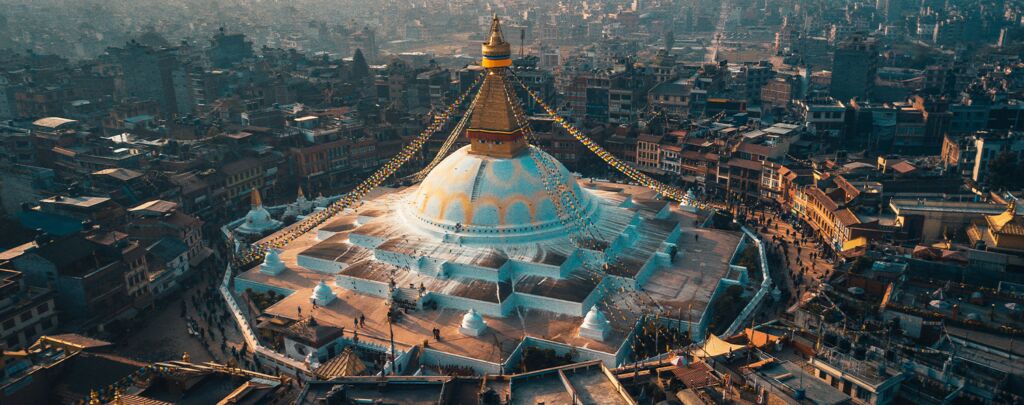
Summer in Nepal is a time when the monsoon rains take centre stage and transform the country into a lush, green paradise. While the monsoon season may not be the ideal time for trekking, it does offer its own unique charm and opportunities for exploration. So, let’s dive into what makes summer in Nepal worth considering for your next adventure.
Best places to visit in Nepal during summer:
Despite the monsoon rains, there are still plenty of amazing places to visit in Nepal during summer. Some of these include:
- Mustang and Dolpo regions : These areas lie in the rain shadow of the Himalayas, making them ideal destinations for trekking during the monsoon season.
- Pokhara : This picturesque lakeside city offers a more relaxed atmosphere and is perfect for enjoying leisurely boat rides on Phewa Lake.
- Lumbini : The birthplace of Lord Buddha, Lumbini is a significant pilgrimage site and offers a peaceful retreat from the bustling cities.
- Chitwan National Park : The monsoon season is an excellent time for wildlife spotting, as many animals are more active during this time.
Best treks in Nepal during monsoon:
While many trekking trails may be off-limits due to the rains, there are still some fantastic treks to consider during the monsoon season:
- Lower Dolpo Trek
- Nar Phu Valley Trek
Advantages and challenges of visiting during monsoon season:
Visiting Nepal during the monsoon season comes with its own set of pros and cons. Here are some advantages and challenges to consider:
Advantages:
- Fewer tourists, meaning less crowded trails and attractions
- Lush, green landscapes
- More affordable accommodation and travel options
Challenges:
- Unpredictable weather conditions
- Slippery and muddy trekking trails
- Travel within Nepal by bus can take twice to three times as long due to mudslides
- Limited visibility for mountain views
Monsoon time in Nepal:
The monsoon season in Nepal typically lasts from June to August (sometimes as late as September), with the heaviest rainfall occurring in July.
Weather conditions and temperatures:
During the monsoon season, expect hot and humid conditions with temperatures ranging from 20°C to 30°C (68°F to 86°F) in the Valley. Heavy rainfall is common, particularly in the afternoons and evenings .
While summer in Nepal may not be the most popular time to visit due to the monsoon rains, it still offers plenty of opportunities for exploration and adventure . With fewer tourists, lush landscapes, and unique trekking options , summer in Nepal is definitely worth considering for those who don’t mind embracing the monsoon magic. Just don’t forget to bring your raincoat!
Autumn in Nepal (September-November): A Himalayan Haven

Autumn in Nepal (September-November) is hands down the best time to visit Nepal for trekking and exploring the majestic Nepal Himalayas . With clear skies, pleasant temperatures, and stunning landscapes, it’s no wonder that autumn is a favourite among travellers. So, let’s dive into the specifics of what makes this season so special.
Best trekking trails during autumn:
Autumn in Nepal offers a plethora of trekking options for both seasoned trekkers and beginners alike. Some of the best trekking trails during autumn include:
Weather conditions and temperatures during autumn in Nepal:
During autumn in Nepal, the weather is generally stable, with daytime temperatures ranging from 15°C to 25°C (59°F to 77°F) at lower altitudes. As you ascend higher, the temperatures can drop to below freezing at night, so it’s essential to pack warm layers for those chilly evenings.
Aside from trekking, autumn in Nepal offers a variety of attractions and activities for travellers to enjoy:
- Explore the ancient cities of Kathmandu , Bhaktapur , and Patan
- Experience the vibrant Dashain and Tihar festivals, celebrated throughout the country
- Enjoy paragliding , mountain biking , or white-water rafting in Pokhara
Autumn in Nepal is undoubtedly the best time to visit Nepal for trekking and exploring the incredible Nepal Himalayas . With its pleasant weather, clear skies, and an abundance of trekking trails, there’s no better time to lace up your hiking boots and embark on the adventure of a lifetime.
Winter in Nepal (December-February): A Chilly Adventure
Winter in Nepal may not be the most popular time to visit, but it certainly has its charms. With fewer tourists, you can enjoy a more peaceful and authentic experience. Plus, the crisp, clear skies (once you make your way out of the Kathmandu valley and into the mountains) offer some of the best mountain views you’ll ever witness. So, let’s explore what winter in Nepal has to offer.
Mustang Nepal in winter
The Mustang region, also known as the “Forbidden Kingdom,” is a hidden gem that’s perfect for winter exploration. Unlike other parts of Nepal, Mustang is located in the rain shadow of the Himalayas, meaning it receives significantly less precipitation and pollution. This makes it an ideal destination for trekking during the winter months when other trails may be snowbound or inaccessible.
Best places to visit in Nepal during winter
While some areas may be off-limits due to snow and cold temperatures, there are still plenty of amazing destinations to explore during winter in Nepal. Some of the best places to visit include:
- Pokhara : A lakeside city with stunning mountain views and a plethora of adventure activities
- Chitwan National Park : A wildlife haven where you can spot rhinos, elephants, and even Bengal tigers
- Lumbini : The birthplace of Lord Buddha and a UNESCO World Heritage Site
- Nagarkot : A hill station with some amazing hotels nearby offering panoramic views of the Himalayas, including Mount Everest
Winter trekking trails
While some trails may be closed due to snow, there are still several fantastic winter trekking trails available for those looking for a chilly adventure. Some popular options include:
- Ghorepani Poon Hill Trek
- Tamang Heritage Trail
- Everest Panorama Trek
Winter in Nepal temperatures
During winter in Nepal, temperatures can vary greatly depending on your altitude. In lower regions like Kathmandu and Pokhara, daytime temperatures can range from 9°C to 12°C (48°F to 54°F), while night-time temperatures can drop to near freezing. In higher altitudes, temperatures can plummet well below freezing, so it’s essential to pack appropriate clothing and gear .
While winter in Nepal may not be the most popular time to visit due to temperatures and pollution in Kathmandu valley, it offers a unique and peaceful experience for those willing to brave the colder temperatures. With stunning mountain views once outside Kathmandu, fewer tourists, and a variety of trekking trails and destinations to explore, winter in Nepal is a season worth considering for your next adventure.
Visiting Nepal from India and Tibet

If you’re planning a trip to Nepal from India or Tibet, you might be wondering when the best time to visit is. Well, worry not, my fellow adventurers! I’ve got you covered. In this section, we’ll explore the best time to visit Nepal from India and Tibet, so you can make the most of your journey.
Best time to visit Nepal from India
When it comes to visiting Nepal from India, the ideal time is during the months of October to November and March to May . These periods offer the most favourable weather conditions, making it perfect for exploring Nepal’s diverse landscapes and engaging in various outdoor activities.
Here’s a quick breakdown of what you can expect during these months:
- October to November: Clear skies, pleasant temperatures, and minimal rainfall make this an excellent time for trekking and sightseeing. The post-monsoon season also means that the countryside is lush and vibrant – perfect for photography enthusiasts.
- March to May: This period offers stable weather conditions and excellent visibility for those awe-inspiring mountain views. The temperatures are also pleasant, making it comfortable for trekking and other outdoor activities.
Best time to visit Nepal from Tibet
If you’re planning a trip to Nepal from Tibet, the best time to visit is also during the months of October to November and March to May . These months offer clear skies, stable weather conditions, and pleasant temperatures – ideal for trekking, sightseeing, and immersing yourself in Nepal’s rich culture.
The best time to visit Nepal from India and Tibet is during the months of October to November and March to May. These periods offer the most favourable weather conditions, allowing you to fully experience the beauty and charm of this Himalayan paradise.
Best time to visit Tibet from Nepal
So, you’ve decided to embark on an epic adventure to the mystical lands of Tibet and Nepal. But when is the best time to visit these enchanting destinations? Fear not, intrepid traveller! I’m here to help you navigate the ins and outs of planning your trip, ensuring you experience the very best that Tibet and Nepal have to offer.
When planning your journey from Nepal to Tibet, timing is everything. The ideal months to visit Tibet are from April to October, with two distinct periods offering unique experiences:
- April to June: Springtime in Tibet is a sight to behold. With blooming flowers, lush greenery, and comfortable temperatures, this is an excellent time for sightseeing and exploring the region’s stunning landscapes. Plus, you’ll have the chance to witness the Saga Dawa Festival, a significant Buddhist event held in May or June.
- September to October: As the monsoon season comes to an end, Tibet’s skies clear up, offering breath-taking views of the majestic Himalayas. This period is perfect for trekking and photography, as well as attending the lively Shoton Festival in September.
However, it’s worth noting that July and August can be quite rainy in Tibet, so it’s best to avoid these months if you’re not a fan of getting drenched.
Celebrating Nepalese Festivals

Nepalese festivals are a vibrant and colourful showcase of the rich culture and traditions of this beautiful country. If you’re lucky enough to visit Nepal during one of these celebrations, you’re in for a treat! So, without further ado, let’s dive into the world of Nepalese festivals and discover when they’re usually celebrated.
• Dashain : This is the most significant and longest festival in Nepal, usually celebrated in September or October. It’s a time for family reunions, feasting, and blessings from elders.
• Tihar : Also known as the Festival of Lights, Tihar is often celebrated in October or November. The five-day festival honours various animals and the goddess of wealth, Laxmi. Look out for Kukur Tihar (the festival of dogs) and Laxmi Puja.
• Holi : The Festival of Colours is a fun-filled event celebrated in March. People throw coloured powders and water at each other to mark the victory of good over evil.
• Teej : This women-centric festival takes place in August or September. Women fast, pray for marital bliss, and dance in their finest red attire.
• Janai Purnima : Celebrated in August, this Hindu festival involves changing the sacred thread worn by Brahmin men and offering prayers to Lord Shiva.
• Buddha Jayanti : This significant Buddhist festival commemorates the birth, enlightenment, and death of Lord Buddha. It’s celebrated in April or May.
• Shivaratri : Dedicated to Lord Shiva, this festival takes place in February or March. Devotees fast, pray, and visit Shiva temples throughout the night.
• Gai Jatra : The Cow Festival is held in August or September to honour deceased family members. Colourful processions featuring cows or cow effigies fill the streets. Look out for the dancing demons and the cute kids with cow masks!
• Indra Jatra : This eight-day festival in September honours the god of rain, Indra. It features chariot processions, masked dances, and the Kumari – Nepal’s living goddess. Head out to Indra Chowk on the first day!
• Bisket Jatra : Celebrated in April, this New Year festival in Bhaktapur involves chariot processions, tug-of-war contests, throwing around orange powder, and plenty of feasting.
• Maghe Sankranti : This January festival marks the start of warmer days and longer daylight hours. People take ritual baths, visit temples, and enjoy festive foods.
• Chhath Puja : Dedicated to the sun god, this November festival involves fasting, offering prayers at sunrise and sunset, and taking ritual baths in rivers or ponds.
• Lhosar : The Tibetan New Year is celebrated in February or March with colourful decorations, traditional dances, and family gatherings.
• Ghode Jatra : The Horse Racing Festival takes place in March or April, featuring horse races, acrobatics, and other exciting performances.
• Maha Shivaratri Jatra : This grand procession in February or March honours Lord Shiva with chariots, music, and dance performances.
Mani Rimdu : This Buddhist festival in October or November showcases colourful masked dances and rituals performed by monks.
- Nag Panchami: Nag Panchami is a Hindu festival dedicated to the worship of snakes that is celebrated in July or August. During this festival, devotees offer milk and honey to live snakes and worship them as they believe that snakes are protectors of their family and livestock. Look out for the drawings being sold on the street and in markets for a few rupees. People normally hang these on their door!
Visiting Popular Nepalese Destinations
Embarking on a journey to the breath-taking country of Nepal? Lucky you! With its stunning landscapes, rich culture, and warm-hearted locals, Nepal is truly a traveller’s paradise. But when is the best time to visit certain popular destinations in Nepal? Fret not, dear wanderer, for I am here to guide you through the ins and outs of planning your trip to popular Nepalese destinations.
Best time to visit Kathmandu, Nepal
Kathmandu is the vibrant capital city of Nepal! When is the best time of year to visit Kathmandu Nepal, you ask? Well, the ideal months to explore this bustling city are from October to November and March to May . These periods offer:
- Pleasant temperatures
- Clear skies
- Minimal rainfall
Perfect for sightseeing, shopping, and indulging in the city’s rich culture and history.
Best time to visit Muktinath Temple, Nepal
Muktinath Temple, a sacred pilgrimage site for both Hindus and Buddhists, is best visited during the months of May to June and September to November . During these times, you can expect:
- Stable weather conditions
- Clear visibility
- Comfortable temperatures
Ideal for trekking and soaking in the spiritual atmosphere of this revered temple.
Best time to visit Mustang, Nepal
The enchanting region of Mustang is best explored during the months of May to September . This period offers:
- Dry weather conditions
- Warm temperatures
Perfect for trekking, exploring ancient monasteries, and immersing yourself in the unique culture of this remote area.
Best time to visit Annapurna Base Camp (ABC), Nepal
For those seeking adventure at Annapurna Base Camp, the best time to visit ABC Nepal is during the months of October to November and March to April . These months provide:
- Clear mountain views
Ideal for trekking and capturing those awe-inspiring panoramas.
Best time to visit Pokhara in Nepal
The picturesque city of Pokhara is best visited during the months of October to November and March to May . During these times, you can expect:
- Pleasant weather
- Stunning views of the Annapurna range
Perfect for boating on Phewa Lake, paragliding, and exploring the city’s many attractions.
Best time to visit Everest Base Camp in Nepal
For those daring souls venturing to Everest Base Camp, the best time to visit Everest Base Camp Nepal is during the months of April to May and September to November . These periods offer:
- Manageable temperatures
Ideal for trekking and experiencing the thrill of being at the foot of the world’s highest peak.
Best time to visit Mardi Himal in Nepal
Mardi Himal, a hidden gem in the Annapurna region, is best explored during the months of March to May and September to November . During these times, you can expect:
- Lush landscapes
Perfect for trekking, photography, and enjoying the serene beauty of this off-the-beaten-path destination.
In conclusion, the best times to visit Nepal are:
- October to November: Ideal for trekking, sightseeing, and photography, thanks to clear skies, pleasant temperatures, and minimal rainfall.
- March to May: Perfect for enjoying stable weather conditions, excellent visibility, and comfortable temperatures for outdoor activities.
Now that you’re armed with the knowledge of the best times to visit Nepal , it’s time to embark on your unforgettable journey! Whether you’re trekking through the breath-taking Himalayas, exploring ancient temples, or immersing yourself in the rich culture and traditions, there’s no doubt that Nepal has something for everyone.
So, don’t hesitate – pack your bags, grab your camera, and get ready to discover the diverse beauty of Nepal throughout the year. Happy travels!
Best time to visit Nepal FAQ
What is the cheapest time of year to go to nepal.
The cheapest time to visit Nepal is during the off-season, from June to September, as hotels and airlines offer discounts due to the rainy season.
How many days in Nepal is enough?
You can experience the best of Nepal in 14-21 days, including time in Kathmandu, Pokhara, and trekking in the mountains.
What is the hottest month in Nepal?
The hottest month in Nepal is May, with an average temperature of 28°C in the lowlands and 16°C in the mountains.
What is the off season of Nepal?
The off season in Nepal is from June to September, during the monsoon season, when heavy rains and landslides make travel difficult.
Which season is best for Pokhara?
The best time to visit Pokhara is from September to November, when the skies are clear and the weather is dry, making it perfect for trekking and outdoor activities.
Which is the coolest month in Nepal?
The coolest month in Nepal is January, with an average temperature of 9°C in the lowlands and -4°C in the mountains.
Which month rains a lot in Nepal?
Nepal receives the most rainfall from June to August, during the monsoon season, with an average of 1,000-1,500 mm of rain.
Which is colder, Kathmandu or Pokhara?
Pokhara is slightly warmer than Kathmandu, with average temperatures ranging in kathmandu from 11-23°C, while Pokhara’s temperatures range from 16-27°C.
Can you see snow in Pokhara?
Snowfall is rare in Pokhara, but you can see snow-capped mountains in the distance, including the Annapurna range.
What is the coldest city in Nepal?
The coldest city in Nepal is Jumla, located in the western Himalayan region, with average temperatures around -3°C in January.
Which is the hottest city in Nepal?
The hottest city in Nepal is Biratnagar, located in the southern Terai region, with temperatures reaching up to 40°C in May and June.
Is there snowfall in Muktinath?
Yes, there is snowfall in Muktinath, particularly during the winter months from December to February.
Which month is best for Muktinath?
The best time to visit Muktinath is from September to November, when the skies are clear, and the weather is dry, making it easier to trek to the temple.
Which places in Nepal is best for snowfall?
The high-altitude regions of the Himalayas, including Everest Base Camp, Annapurna Circuit, and Langtang, receive heavy snowfall during the winter months.
Leave a Comment Cancel Reply
You must be logged in to post a comment.
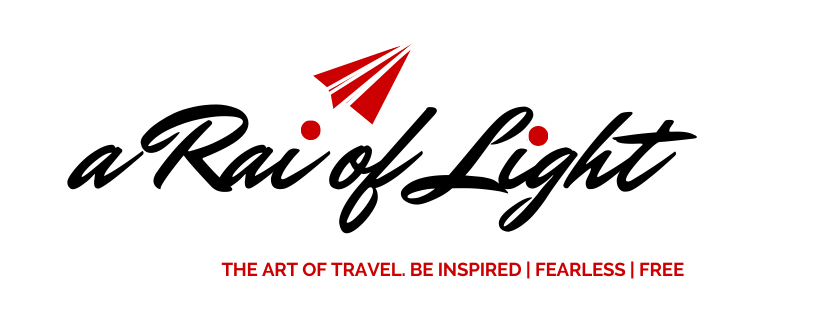
- Adventure Travel / Asia / Ask RAI / Travel tips
The Best Time to Visit Nepal in 2024 | Everything You NEED to Consider
Published September 27, 2023 · Updated September 27, 2023
Oh Nepal! The beauty of this country and its people capture the imaginations and invites the intrepid adventurer the world over. If you’re planning a visit (you should be) and wondering when is the best time to visit Nepal , continue reading ↓
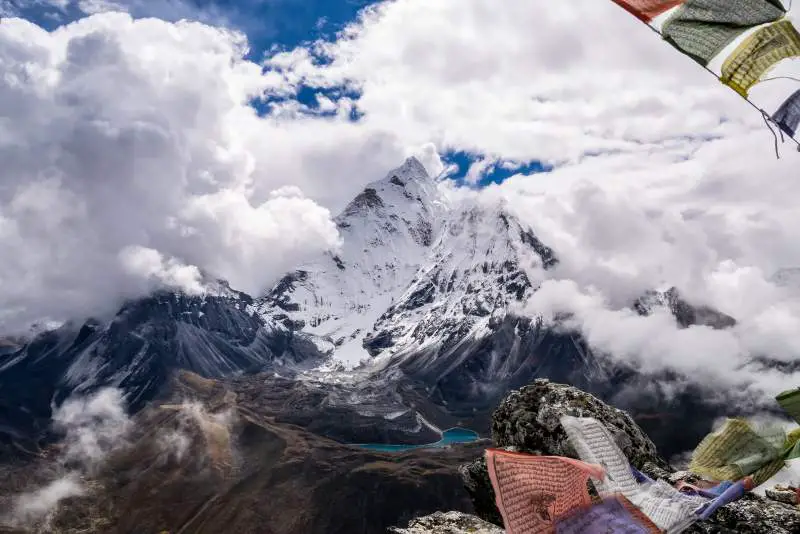
I elaborate on everything you need to consider when deciding on the best time to go to Nepal FOR YOU.
The major aspects that affect your decision when planning a trip to Nepal and the best time to go include :
- when does the country experience the best weather for both sightseeing and trekking in Nepal.
- when is the monsoon season and what to avoid
- how to avoid the haze for epic mountain views and best photos
- when is peak tourist season and the best way to avoid the crowds
Oh, one more thing
… despite being a small country, Nepal has an array of elevations and climates , ranging from the subtropical jungle in the south to the world’s highest peaks in the north.
Which means that it is not accurate to make a generic statement about the weather in Nepal during a particular season, as the regional differences can make conditions vary drastically between different regions within the same season.
It is useful to understand the seasonal variations so that you can choose to visit at the optimum time for the activities you intend to do.
The reason for your visit to this beautiful country will play a large role in choosing when to go.
>> Related reading:
- Your guide to the best short treks in Nepal
- The most delicious traditional Nepalese food to try
- The overall best treks in Nepal
- 101 epic climbing mountain quotes to inspire the adventurer within
- Everything you need to know about visiting Bhaktapur
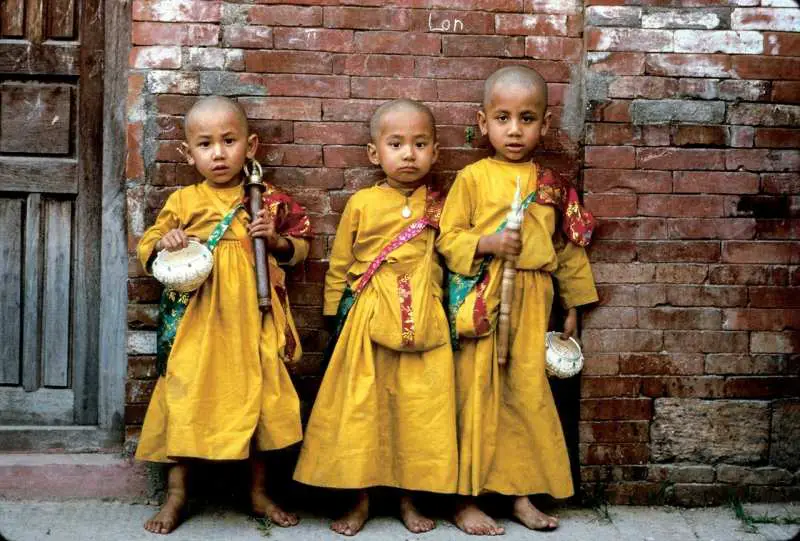
What is your main reason for travelling to Nepal?
Let’s get into it, shall we…
THE BEST TIME TO VISIT NEPAL
Low season in Nepal: June – Early September
High season in Nepal: October – November
Shoulder season in Nepal: March – May
Monsoon season in Nepal: Mid June – Mid September
Does Nepal have seasons?
Nepal has four distinct climatic seasons:
Let’s discuss each season in detail
… and see if we can find the best time to travel to Nepal for you .
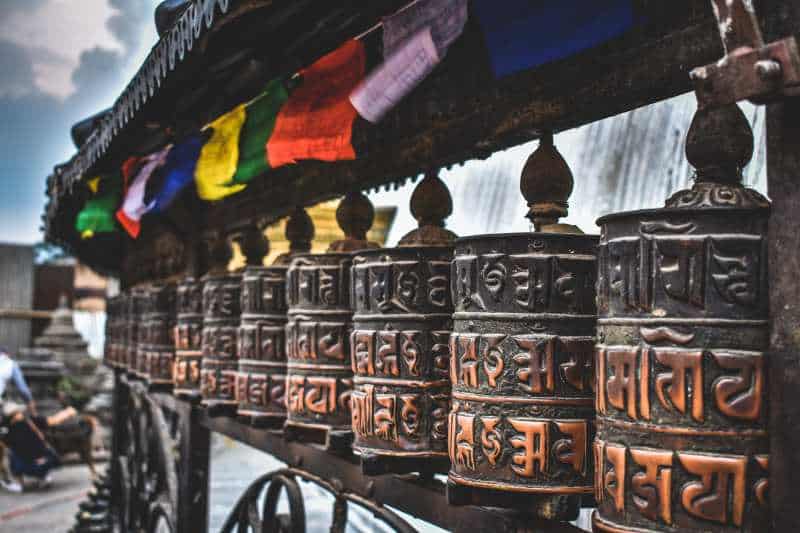
our first season is…
Autumn | Late-September to November
Late September, October and November, which also happens to be autumn (fall), is the best time to visit Nepal in terms of weather.
The temperature begins to fall to a comfortable level, the monsoon dissipates and the sky generally remains clear with crisp air, providing incredible views all around.
This is particularly welcomed when hiking or trekking in the Nepalese Himalayas.
So much so that
… this period is the most popular trekking season in Nepal.
Thousands of people hit the trails of Nepal during this time, including the Everest and Annapurna regions.
This is a particular disadvantage of travelling in this season as the crowds can become a nuisance and take away from the experience of being one with nature. Accommodation gets booked up and prices peak in these months.
If you want to avoid the crowds and experience solitary, my advice would be to choose an off the beaten path trek such as Langtang, Helambu, or the Manaslu Circuit.
Is September a good time to visit Nepal?
Nestled between the end of the monsoon and the peak season starting in October, mid-September is an excellent period to visit if you want to avoid the peak tourist season whilst enjoying great weather at the same time.
And November? Good time to go to Nepal?
The weather in late November is typically stable with little cloud and precipitation. Humidity levels are low and the views are wonderful. The numbers of visitors and trekkers starts to reduce from mid-November and is certainly fewer than during the peak in October peak.
The perception that winter is too cold and the thought of too much snow keeps the numbers low.
Advantages of visiting Nepal in autumn:
- best mountain visibility
- clear and dry
- perfect time for trekking in Nepal
- ideal for photography
- festivals of Dashain and Tihar
Disadvantages of going to Nepal in autumn:
- trekking trails are crowded
- higher costs as this is peak season meaning higher demand
- need to plan months in advance to secure decent accommodation, tours and overall availability.
- September may still have some rain as the monsoon season recedes
When in Nepal you cannot leave without going to Bhaktapur. Check out everything you need to know about visiting visiting Bhaktapur here .
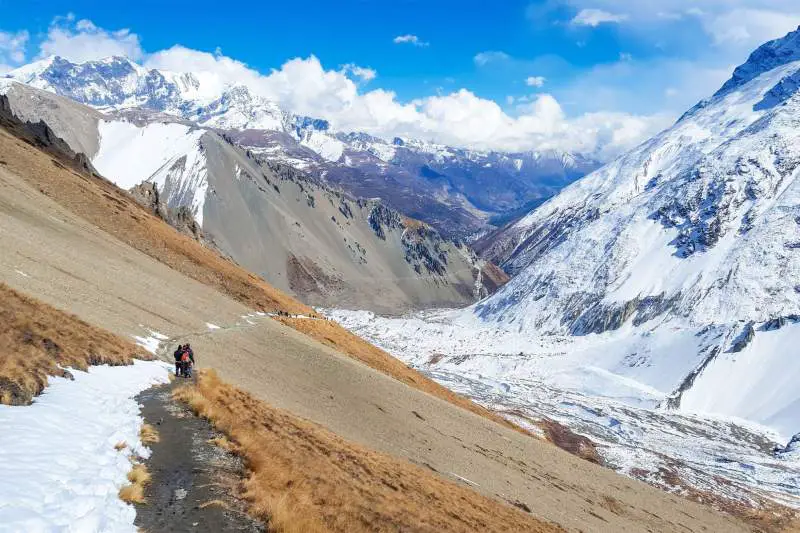
Winter | December to late February
Is winter the best time to visit Nepal? December, January, and February are the winter months with January and February being the coldest two months of the year in Nepal.
Does it snow in Nepal?
Winter in Nepal brings cold and dry weather conditions . Often pleasant days, but caution needs to be taken when in the mountains, particularly at night .
Many hotels, teahouses and lodges are closed for this period while others offer blankets and fireplaces as a respite from the cold. Occasional snowfalls is to be expected at higher elevations.
Expect crystal clear skies and unobstructed views of the >8000 metre Himalayan peaks.
However, trekking in the high mountain areas can be risky and is not recommended to the novice hiker. Many of the higher passes and valleys are sometimes closed or unreachable due to snowfall. It is best to focus on Himalayan treks that are in the lower Himalayan foothills and middle hills <3000 metres high.
The pleasant aspect about the months of December – February is fewer visitors.
Fewer tourists around mean quieter Nepal trekking trails and quieter cities. You will often have incredible views all to yourself.
The winter season is a good time to trek around the many short treks in Nepal that surround the Kathmandu valley, the shorter treks near Pokhara, and treks in the lower Solo area south of Everest.
It is also good for wildlife viewing in the jungles of Chitwan and Bardia in the south of Nepal as these lowlands experience moderate temperatures.
The advantage of travelling in Nepal in the winter months are:
- crystal clear skies
- dry weather with no rain
- less crowds and fewer tourists
- not having to book much in advance
- lower costs of accommodation, food, tours, treks, etc
The disadvantages of travelling in the winter season are:
- cold at higher elevations
- nights can be uncomfortable
- many lodges are shut for the winter
- expensive international flight prices particularly in December
>> Related reading: Is Nepal on this list of countries with the best flags
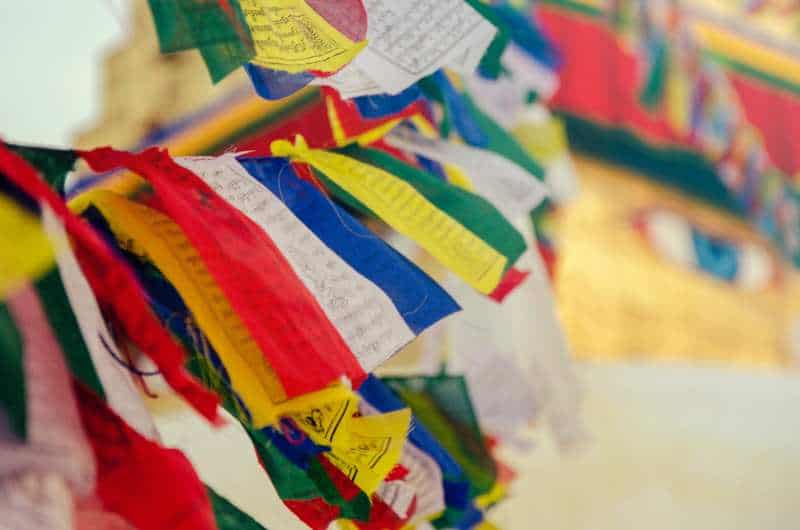
Could your favourite season be…
Spring | March to May
March marks the beginning of spring. Is spring the best time to visit Nepal?
The months of late spring, March until early May, are another good time to travel in Nepal when the weather starts to warm up and the plants and forests come alive with new growth.
Rhododendron season brings about a change in the colour and look of the surrounding landscape.
Did you know: Rhododendron is the national flower of Nepal.
This period is the second most popular time to go trekking in Himalayan region of Nepal, as temperatures and weather tends to be more stable, which is optimal for classic treks in Nepal’s Himalayan regions. This is a wonderful time to trek as days are longer, despite cool temperatures at night.
The spring season is a good time to trek to high viewpoints of Nepal the likes of Kala Pattar and Gokyo Ri in the Everest region. It is also an ideal time to cross high passes like Kongma La on the Three passes Trek and Thorung La on the Annapurna Circuit Trek .
To avoid the crowds choose to visit in early or late spring , avoiding the middle peak period.
The month of March is also when the festival of Holi takes place across many cities and smaller towns in Nepal. The Nepalese new year and its festivities happen in April.
The downside of visiting Nepal in Spring is that sometimes the mountain views can be obstructed with haze and low cloud . Additionally, the number of visitors to Nepal start to pick up meaning a busy trekking season and a busier trek.
Advantages of visiting Nepal in Spring:
- stable days
- warm weather
- longer days with more sunlight
- rhododendrons are in bloom
- good time for wildlife viewing
- festivities of Nepalese New Year and Holi
Disadvantages of travelling in Spring:
- prices start to rise
- haze can obscure the mountains from lower elevations
>> Read next: Test your knowledge of the world in this geography quiz
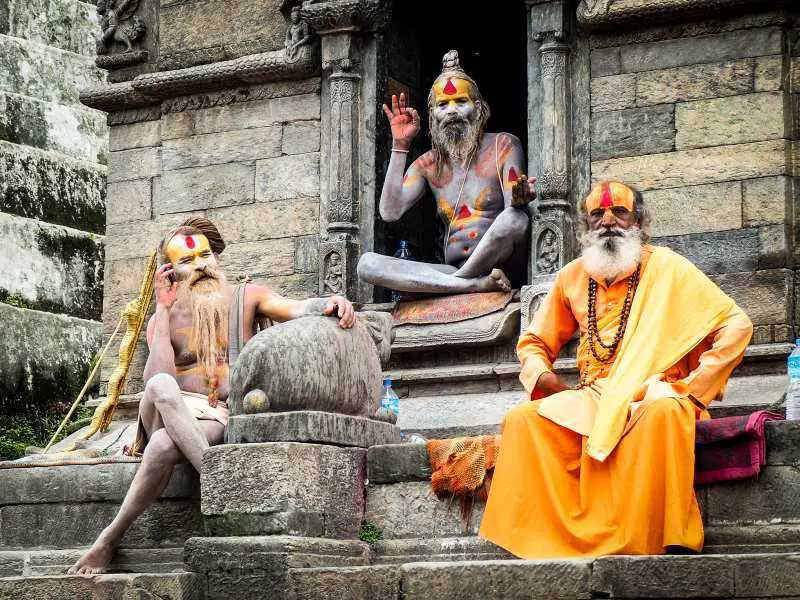
Summer | Monsoon season | June to Mid-September
Which month is the rainy season in Nepal?
Summer and the subsequent heat arrives in late May or early June .
The humidity levels increase and so does the arrival of the monsoon rains. The foothills are lush and wildflowers are in full bloom.
Days are hot and rain is common.
This is an important consideration when planning on trekking in Nepal as the rain would add to the trek difficulty. Not only that, but also the clouds obstruct the epic mountain views.
Note that monsoon season in Nepal is somewhat different to the typical monsoon associated with Asia.
Rain usually occurs overnight leaving clear skies in the morning revealing spectacular mountain views until the clouds begin to gather once again through the day.
If you choose to trek at high altitudes — the air is clearer and temperatures are more comfortable.
However, the heavy rains bring frequent landslides and very muddy trails. Leeches are common along the mid-elevation trekking routes and mountain views are still a rare occurrence.
Transport logistics become more difficult during the monsoon season where roads are occasionally closed. Flights in and out of the Himalayan regions are often canceled or delayed.
❗ During this period: Flexibility in your itinerary is recommended
If you’re a budget-friendly traveller….
This is a great season for you. Large discounts and a drop in prices overall is common during the low season.
Where to go in summer in Nepal
If the summer months are your only option to visit Nepal for a trek, focus on those regions that are in the rain-shadow of the Himalaya at this time of the year, meaning they don’t suffer from monsoon rains like the rest of Nepal. These areas include Manang, Upper Mustang, Dolpo, Limi Valley, and Nar Phu.
Many interesting festivals take place in the summer season:
- The Yarthung Horse festival also takes place in June in Manang.
- Dancing with Shamans during the August Full Moon
- The Rice planting festival of Ropain in June
- The cycling challenge of Kora in July, with thousands of mountain bikers in Kathmandu
City sightseeing is still possible at this time of the year making quick getaways to Pokhara, Kathmandu and the surrounding regions (including many short treks) a welcome possibility.
That said, summer is not the best time to visit Nepal. However….
The advantage of travelling in the summer months are:
- long days of sunlight
- the fields are alive with gushing water
- fresh produce of fruit and vegetables are abundant
The disadvantages of travelling in the summer season are:
- monsoon rains
- not great for epic mountain views
- not great for photography
- leeches come out to play along the mid-elevation trekking routes
- roads and paths may be blocked by landslides
- larger possibility of light delays and cancellations from cloudy weather
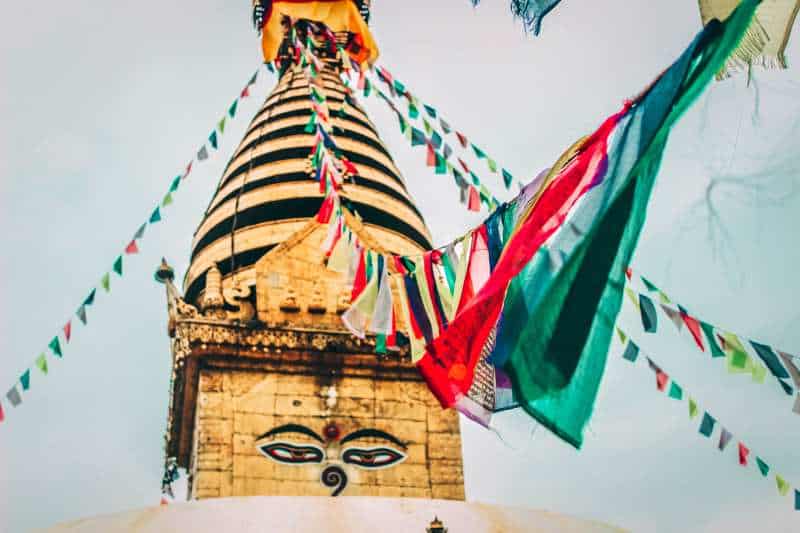
Let’s take a look at some numbers…
Weather and max temperature in the major regions of Nepal
Precipitation in the major regions of nepal per month.
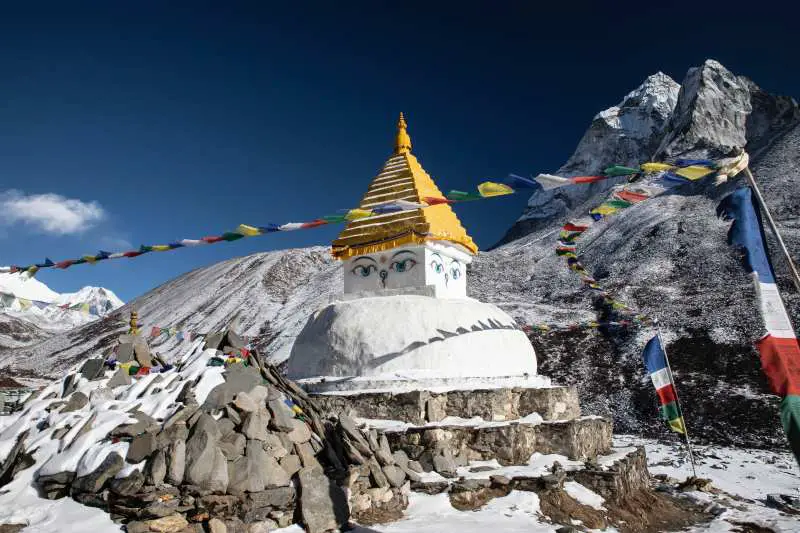
What are you travelling to Nepal for?
The reason for your visit to this beautiful country will play a large role in choosing the best time and when to go to Nepal.
A few more considerations…
The best time to visit Nepal for photography
Late September to early December. The air is crisp and clean. Skies are clear with no expectation of rain and spectacular views of the mountains.
In addition to clear, crisp views the fresh-looking landscape after the rains makes for a beautiful sight.
The best time to go to Nepal for wildlife viewing
Chitwan National Park and Bardia National Park are two of the most famous national parks in Nepal.
A good time to visit the Terai region and go wildlife spotting is during the dry season of October – April.
The dry conditions see animals congregate around limited water sources and the reduced vegetation makes the animals like the one-horned rhino, and Bengal tigers easier to spot.
Temperatures start to cool to a comfortable 25°C in the Terai region with virtually non-existent rainfall. The cooler temperatures are ideal for walking in the park, while encouraging animals to wander around rather than hiding away from the summer sun .
The absolute best time for spotting wildlife in Chitwan Park is from late-January, when the locals cut the tall elephant grass making it much easier to spot animals from a distance.
September to November and February to April are great for bird watching as migrations occur during these months.
During the monsoon season, jeep safaris become almost impossible as the roads through Chitwan become impassable.
Best time to travel to Nepal for festivals and cultural integration
Visiting Nepal during its traditional festivals is a good opportunity to discover the essence of Nepalese culture. The months of October and November see the largest festivals taking place.
It is difficult to predict the exact dates of these festivals as it changes every year depending on certain conditions.
The 15-day celebration of Dashain takes place across Nepal in late September or early October. Temple offerings and animal sacrifices are common as people celebrate the triumph of good over evil through music , food, and dance. Spending time with family and friends is an important part of the celebrations.
The festival of Light , Tihar is marked in October/November. Houses are beautifully decorated with oil lamps and candles. Cows, crows, and dogs are thanked for their loyalty to humans with flower garlands and food .
The Mani Rimdu festival in Tenboche Namche in the Everest region takes place in November.
Later during October or November the festival of lights , Diwali, is also celebrated in Nepal.
The best time to visit Nepal for adventure activities
For paragliding, a popular activity in Pokhara, the best time would be September – November and February – March. Since Paragliding is highly dependent on weather conditions, these months provide the best possibility and conditions, although is is also possible to paraglide outside this period too.
Rafting is wonderful in Nepal and you want to arrive after the monsoon rains for the best heart-pumping experience. This would most likely be the months of September and October.
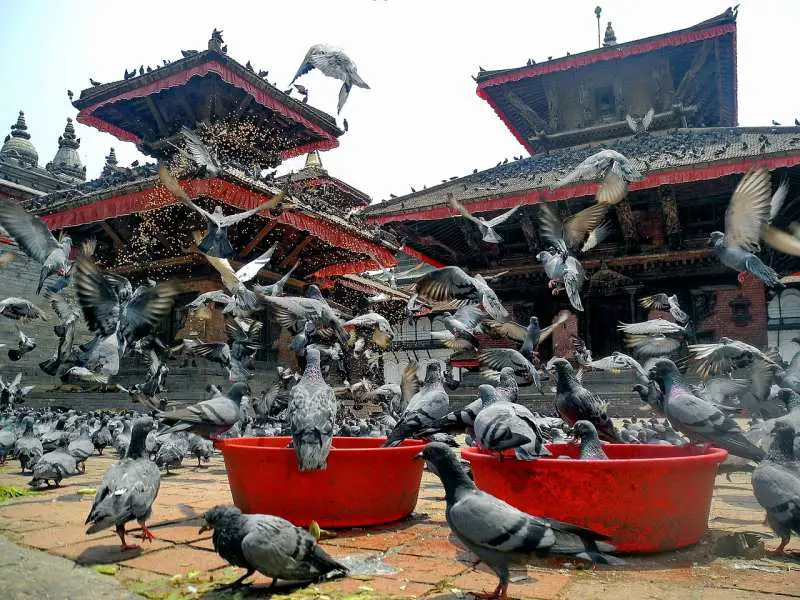
The best time to visit Kathmandu
Nepal’s capital city can be visited throughout the drier months of September until May.
The ideal time to travel is from September to November. The number of festivals taking place in this time gives the city an intriguing atmosphere with the weather clear, bright and sunny .
This is also peak season, meaning more tourists also trying to see the city’s attractions.
The best time to go to Everest Base Camp
The autumn months of October and November are again the best and most popular months to attempt a trek to Everest Base camp. The ideal weather conditions with minimal rainfall and clear mountain views during this period play an important role in this decision. April comes in as a close second place for when considering when to go.
A large percentage of mountaineers choose to make their attempt to summit the world’s highest peak, Everest during March and April. During this period Everest Base Camp is particularly busy.
The effect of the summer monsoon season in the Everest region is massive with heavy rainfall effectively closing down the area. Trails can become extremely difficult, with slippery conditions and the outbreaks of leaches. A large proportion of accommodation close for these months.
Trekking in and around Everest is not recommended during this period.
When is the best time to visit Lumbini
For the most part, Lumbini can be visited at any time of the year. However, the Summer months of June to August sees high temperatures.
April and May is the best time to visit Lumbini. In addition to comfortably warm weather, the festivities of the birth of Buddha happens during this time, attracting thousands of pilgrims in celebration.
What’s the best time to go to Pokhara
Nepal’s second city, Pokhara sees a lot of rain in the monsoon season making the months of June to August an unfavourable time to visit.
For the best conditions, visit in the autumn months of September to November. Expect pleasant days with clear skies and temperate days.
This is also peak tourist season in Pokhara, so do be prepared for the higher prices and larger crowds.
If you’ve found this helpful, be sure to save + share it 🙂
Any other questions ? I’ll be happy to assist .
There you have it. A whooooooole lot of info to help your decision on the best time to visit Nepal.
I am sure that no matter when you go, you are bound to have a wonderful time. Remember to always travel responsibly .
Dhanyawaad,
Tags: Nepal Travel Tips
You may also like...
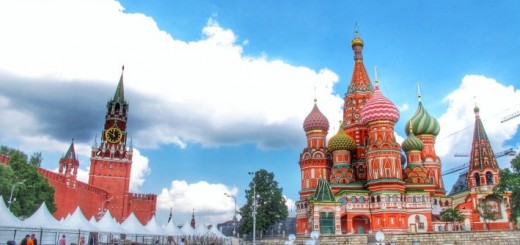
The Day I Got Trapped in Russia! Forever?
February 13, 2020
by Raihaan · Published February 13, 2020 · Last modified September 6, 2021
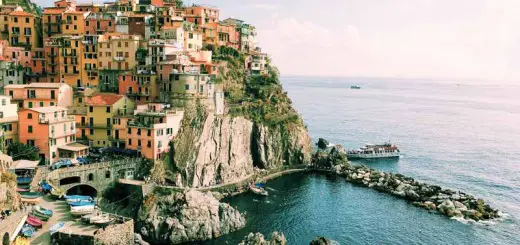
Cinque Terre Italy — Quick Travel Guide
June 28, 2023
by Raihaan · Published June 28, 2023

What It’s Like Being a Travel Writer: The Pros and Cons
September 22, 2022
by Raihaan · Published September 22, 2022 · Last modified April 15, 2023
Leave a Reply Cancel reply
Your email address will not be published. Required fields are marked *
- Next story Hidden Gems: 10 Best Secret Views in Paris!
- Previous story My Stay at the Hyatt Centric Juhu Mumbai: Hotel Review
WHO IS ARAIOFLIGHT ✈
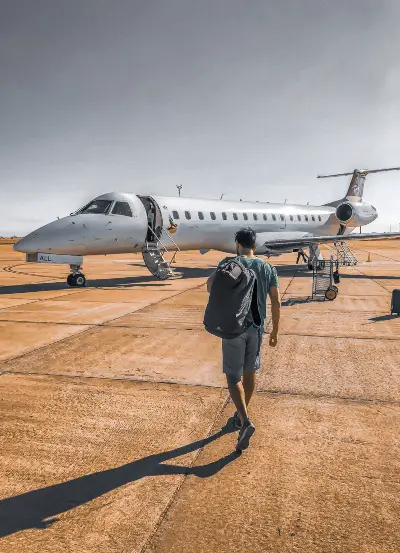
Welcome to A Rai of Light!
A home for extraordinary people around the world. If you've ever felt like there must be more to life, this site is for you.
Out of a love for travel, writing, photography, sharing stories and a desire to inspire others , I created this space to connect with other like-minded individuals.
Along the way, I share my journey and strategies on Travel , Art and Life . Enjoy!
DISCOVER MORE: POPULAR ✈
- Recent Posts
- Popular Posts

Where To Stay in Chicago FIRST TIME → Best Areas + Hotels

Living in Costa Rica → Honest Pros and Cons To Know BEFORE Choosing That Pura Vida Life

The 13 Best Cádiz Beaches, Andalusia Spain

100+ Ways To Say FRIEND in Different Languages of the World

ᐅ Top 100 Mexican Songs About Mexico To Add to Your Playlist ♫

10 Best Croatian Islands To Visit in 2024

Important Reasons to Use a VPN While Traveling and What to Know About Using a VPN While Abroad

Ranked: 15 Most Beautiful Flags in the World in 2024
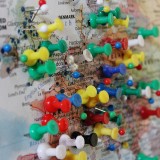
List: Which Countries Can You Visit on a Schengen Visa in 2024

WEIRD Food around the world | 35 World Travelers reveal the strangest food they’ve ever eaten

First Trip to Egypt? My Ultimate Guide of Insider Tips To Know BEFORE You Go

Flying Tips: 13 Things NOT To Do on an Airplane

Aruba Flamingo Beach: Worth $130? + How To Visit in 2024
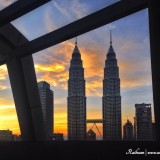
The 5 Best Views In Kuala Lumpur Malaysia
FOLLOW THE ADVENTURE ✈
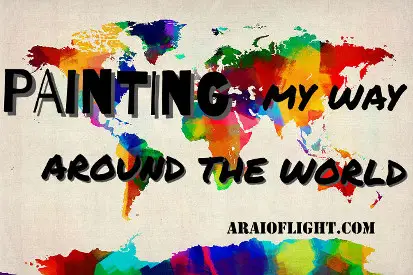
- Skip to content
- Skip to primary sidebar
This Rare Earth
A travel resource for the adventurous and often-solo female
Seasons in Nepal & The Best Time To Visit
Nepal , Asia , Blog / August 3, 2023 by Monica / Leave a Comment
Need to know about the seasons in Nepal so you can plan your trip? Here we will cover the best time to visit Nepal, monsoon season in Nepal, the trekking season in Nepal, and much more!
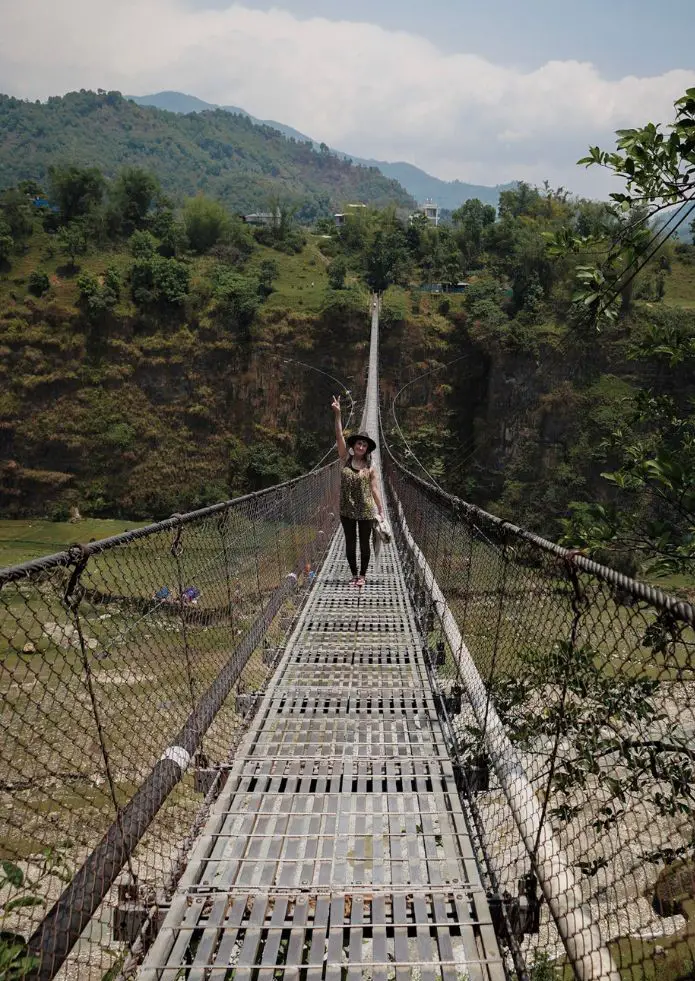
When I was planning my own trip, I had a hard time getting any clear information on what to expect during different seasons in Nepal.
So many sites had conflicting information on when was the best time to visit Nepal, and that made it tough to map out my perfect Nepal itinerary .
Little did I know, there was a good reason for this.
Nepal has six major climatic zones within its small borders. Here you’ll find tropical, subtropical, temperate, subalpine, alpine, and tundra climates. These range from the southern Tarai plain surrounding Chitwan National Park to the northern high and trans-Himalaya regions, the famous Nepal trekking region.
Having this many climates zones in such a small place means that the best time to visit Nepal depends entirely on what you plan on doing.
Here I will unpack what to expect during each season in Nepal, so that you can determine what is the best month for you to visit!
Nepal Quick Links
- Best Kathmandu Hotel : The Kumari Boutique Hotel in Thamel.
- Best Kathmandu Tour : Book the UNESCO World Heritage Sites in Kathmandu to see many of the top-rated sights around the city!
- Best Nepal Tour : If you want to see it all, this 10-day Adventure Tour visits three of my favorite areas in Nepal: Kathmandu, Pokhara, and Chitwan.
- Book your transfer from Kathmandu’s international airport before you travel!
- Book a Rental Car in Kathmandu if you have more time to explore Nepal.
- 5 Nepal Travel Essentials : a lightweight scarf ; a wide brim hat ; a reusable water bottle ; a plug converter ; a pair of loose palazzo pants .
Table of Contents

Seasons in Nepal: What To Expect
Here is exactly what to expect in each of these Nepal seasons.
Spring (March-May)
The Spring season in Nepal begins in March and lasts until May.
This is the season for colorful blooms. You will see a wide variety of flowers blooming, such as Nepal’s national flower, the Rhododendron. Look for magnolias and vibrant wildflowers growing across the whole country.
The Spring months of March and April are considered to be pretty good choices for trekking – the second-best season, to be exact. In these months, the mountain views are clear and sweeping. And, the high passes are typically snow-free.
The Spring season is a great time to consider visiting Nepal. The warm days and nights are overall comfortable, with warm days and nights.
Note that in May, some areas of the country will start to heat up. The Chitwan jungle and surrounding areas will be getting toasty. And yet, Kathmandu can still be quite chilly.
Spring in Nepal is also known as the “pre-monsoon season” as locals know that wet days are soon to come.
Pro Tip: Check out my post on What To Wear in Nepal for my best packing tips for different elevations, seasons, and temperatures. Hint: layering is your best friend!
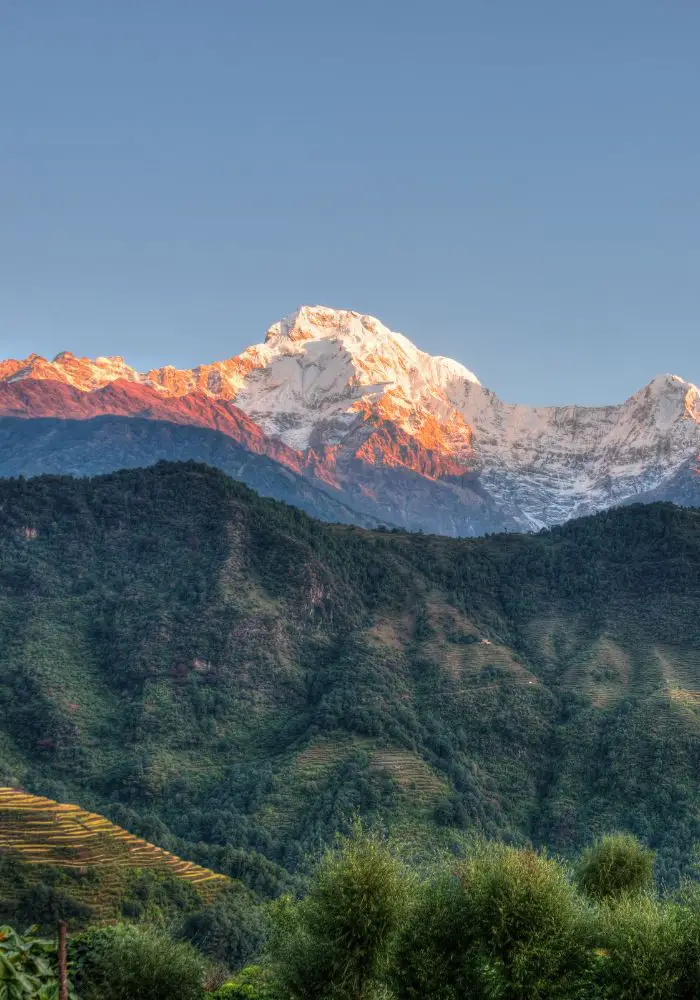
Summer (June-August)
Nepal’s summer months span from June to August. Throughout this period, rainfall becomes a daily occurrence, sometimes accompanied by thunderstorms.
The frequent storms and heavy rainfall may cause landslides in some areas of Nepal. Be aware that roads can close and some areas experience flooding.
The summer temperatures may dip as low as 68°F and up to 95°F. However, the Terai and hilly regions experience much hotter temperatures because of the scorching sun.
Pro Tip: In the summer months, you should pack: a wide brim hat for built in shade, a reusable water bottle (that one keeps your drinks cool even in the heat!), and a lightweight scarf to cover your shoulders in the sun or your head when it rains.
Autumn (September-November)
September, October, and November are Nepal’s Autumn season. During this time, the rain has ended, and the climate is temperate and cool.
Autumn is a very pleasant time in Nepal. The clear skies, pleasant weather, and cooling temperatures attract a large number of tourists, making it also a pricier time to visit.
Note that the Autumn season in Nepal brings about the two major festivals of Dashain and Tihar.
Winter (December-February)
From December to February, Nepal welcomes the winter season with cold temperatures but sunny skies. Expect snowfall at higher altitudes in the winter months.
The temperature will drop to freezing in some areas, such as hilly regions which usually experience rough weather and heavy snow.
Even the hills surrounding Kathmandu can see snow, so be sure to come prepared if you fly into the capital city.
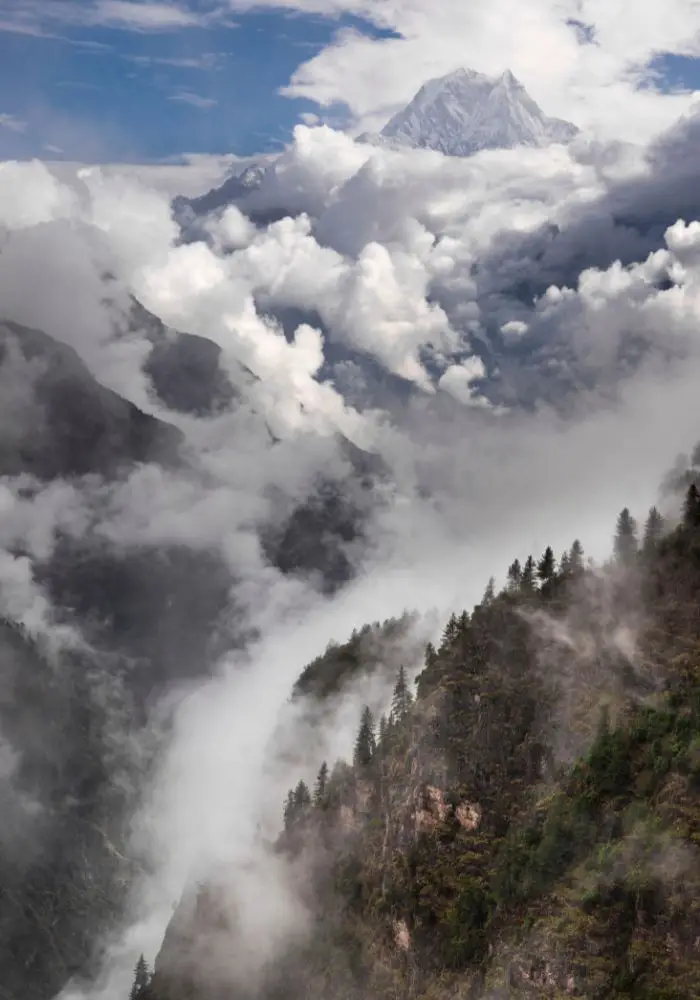
Monsoon Season in Nepal
Nepal’s annual monsoon season takes place between June and August each year, during the summer months.
Large rain clouds form in the south of India and sweep north, where they collide with the cooler air of the Himalayas. This causes torrential rainfall and harsh downpours.
Most regions around the country experience these sudden downpours, although some mountainous areas remain fairly dry year-round. this is because they are essentially sheltered from the rain by the Himalayas.
The Upper Mustang region and sections of the Annapurna circuit, a popular place for trekking in Nepal , receives very little rain even through August. However, the Pokhara Valley is often absolutely drenched.
Note that even in peak monsoon season, the rain rarely lasts for long periods of time. If you do visit during monsoon season, you will have the cultural sights of Kathmandu and Pokhara mostly to yourself.
You May Also Like: Is Nepal Safe for Solo Female Travel?
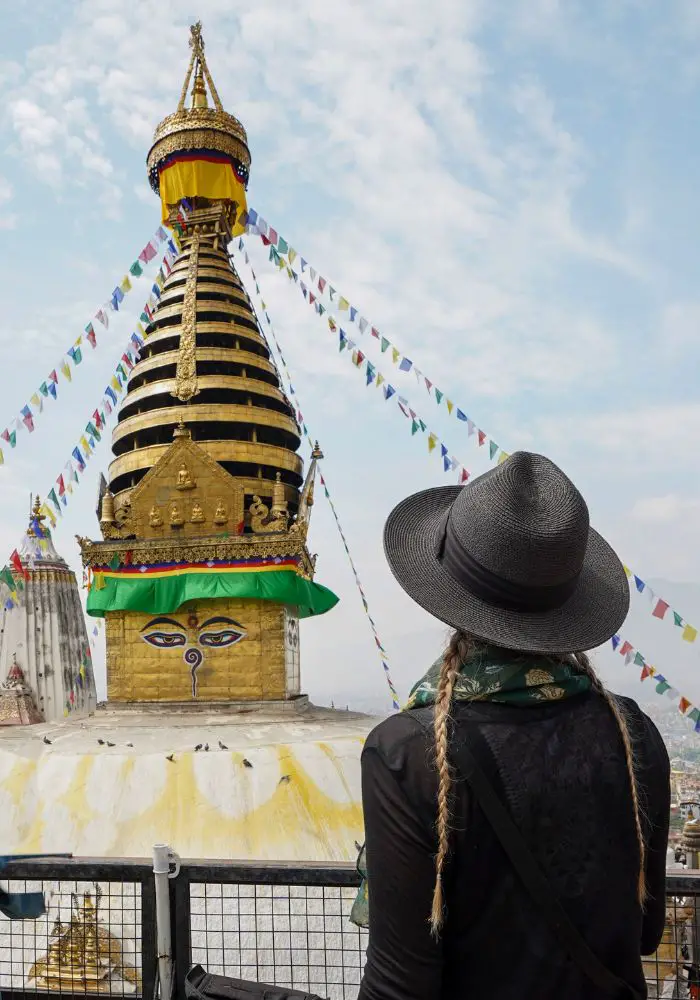
The Best Time To Visit Nepal
I think Nepal is worth visiting in different seasons for different reasons. But let’s break down some of the main reasons you may choose one season over another.
The best time to visit Nepal to see the wildlife in Chitwan National Park is in April and May.
The most popular time to visit Nepal for trekking is in October and November.
The Best Time To Visit Kathmandu
The best time to visit Kathmandu based on weather is from September to December. During this time, the city experiences cool but dry temperatures.
For lower prices, you can often find better deals in Kathmandu during the monsoon season, in the summer months.
Be sure to read about the best things to do in Kathmandu to plan your visit!
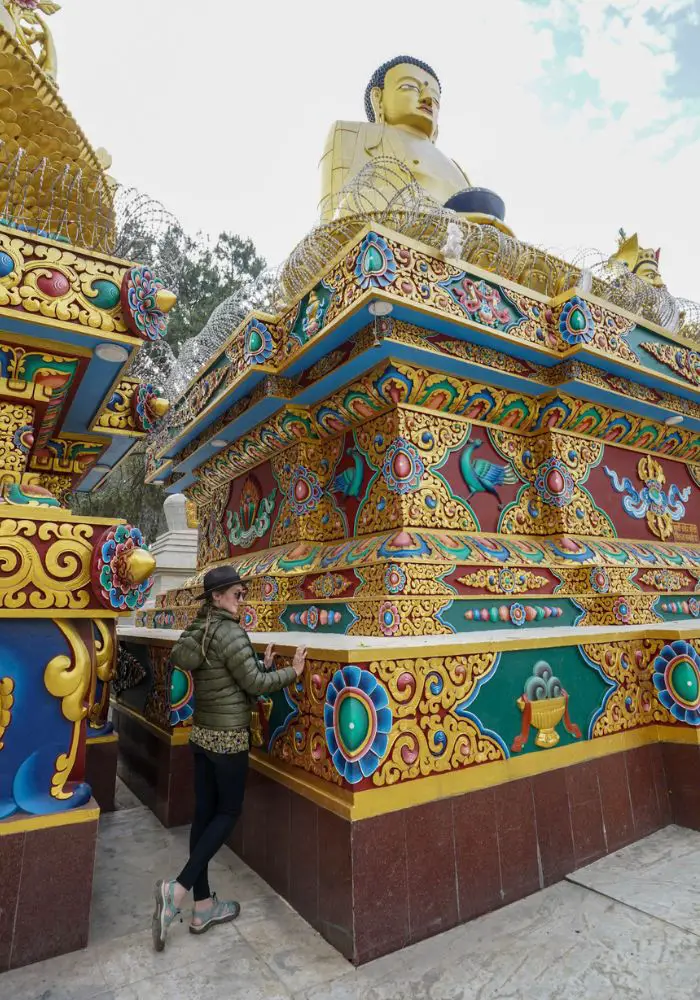
Swipe My 10 Day Nepal Itinerary!
✅ See cultural sights in Kathmandu and Pokhara.
✅ Experience adrenaline pumping adventures in Pokhara.
✅ See wild and endangered animals in Chitwan.
✅ And much, much more!
BOOK YOUR TEN DAY NEPAL TOUR HERE!
When did I choose to visit Nepal?
I had a long list of sights and activities I wanted to see on my first visit to Nepal!
I wanted to see the colorful cultural sites and temples in Kathmandu and Pokhara.
Additionally, I wanted the best chance of seeing the wild animals on safari in Chitwan National Park .
And I also wanted agreeable enough weather that my adventure activities , like bungee jumping and paragliding , would not be canceled.
Because of this adventurous bundle of things to do across multiple regions and elevations, I determined the best time for me would be the month of May.
After the fact, I have no complaints. I saw every animal that I wanted to see in Chitwan, and then some! Not one single adrenaline activity was canceled or postponed.
And, despite a few colder than predicted days in Kathmandu, the weather was exactly what I expected.
If you follow the same route that I did, I highly recommend booking in May. While there may be no season that every separate elevation is 100% what you desire, that is just part of traveling!
Pro Tip: Read more about my trip on my Nepal Itinerary page. Or, swipe my exact route with this 10 Day Nepal Adventure Tour ! It hits every region I named in this section!
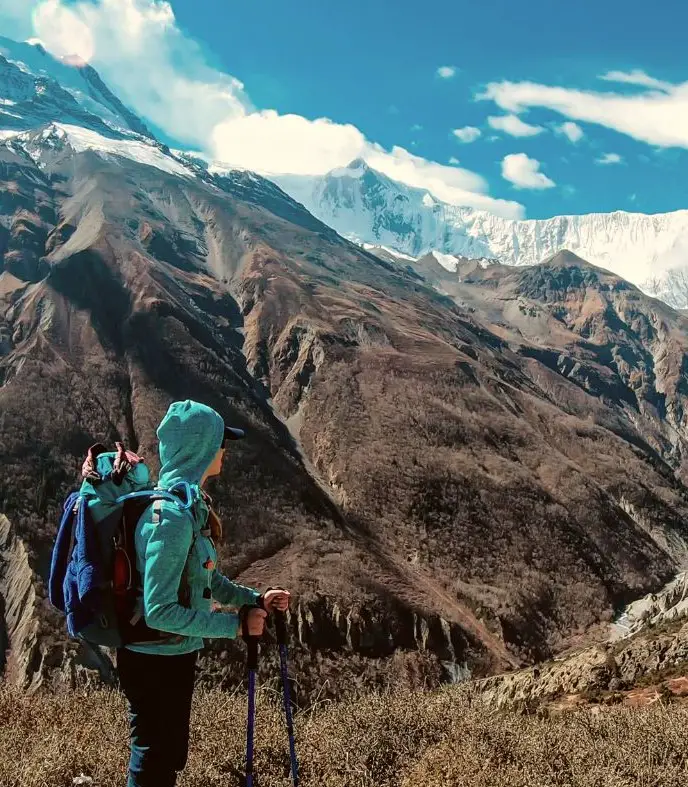
Nepal Trekking Season
Nepal is one of the most popular destinations in the world for adventurous travelers looking to trek the rugged terrain with spectacular views.
With eight of the top ten highest summits in the world, trekking here is one of the most unique and breathtaking experiences in the country.
The best time to trek in Nepal is after the summer monsoon season.
The most popular Nepal trekking season runs through October and November. This applies to not only in the mega-popular regions of Everest and the Annapurnas, but also in greater Nepal.
These Autumn months have pleasant daytime temperatures, good visibility and long stretches of comfortable weather.
Note that trekking takes place across all seasons and months in Nepal. So, regardless of when you go, it is more than possible to join a trek.
Pro Tip: Don’t head out for a trek without reading my Nepal Trekking Packing List ! It has everything you need to stay safe, dry, warm, or cool, depending on your route.
Nepali Seasons
Locally, the seasons in Nepal are split into six distinct season, each lasting for two months. Here are the Nepali names for these six seasons in Nepal.
- Basanta Ritu (mid-March to mid-May)
What we know as Spring in the USA is called Basanta in traditional Nepali.
The season spans from Mid-March to Mid-May and brings largely favorable temperatures throughout Nepal. This is a fairly good season for trekking as the weather is generally good. However, high winds and light rainfall occur in some regions.
Nepal is especially beautiful this time of the year, due to the colorful flower blossom.
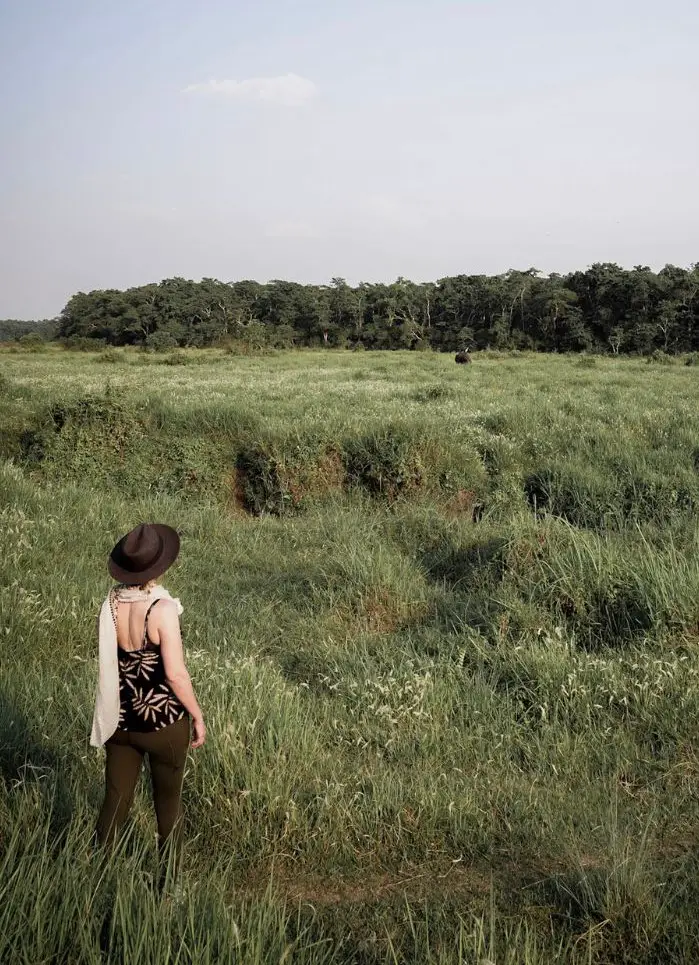
- Grishma Ritu (mid-May to mid-July)
Grishma is the hottest season in Nepal in most areas. Temperature rise in all parts of Nepal except for the Northern areas, which are spared from the high heat due to the mountains.
- Barsha Ritu (mid-July to mid-September)
“Barsha” translates to rain in English, and this is essentially the monsoon season in Nepal.
Lasting from mid-July to September, most of the regions in Nepal experience heavy rainfall daily. One exception to this is the Trans Himalayan Region, such as Upper Mustang, Nar Phu Valley, and Limi Himal, for example.
- Sharad Ritu (mid-September to mid-November)
The fourth of the Nepali seasons is called Sharad, or, Autumn. This season sees plentiful festivals like Teej, Kartik Naach, Dashain and Tihar.
Travelers who want to experience the cultural energy of Nepal might consider visiting during this time.
This season is also regarded as a great time for adventure activities in Nepal . The skies remain clear, the temperatures remain moderate, and the cool breeze keeps things comfortable.
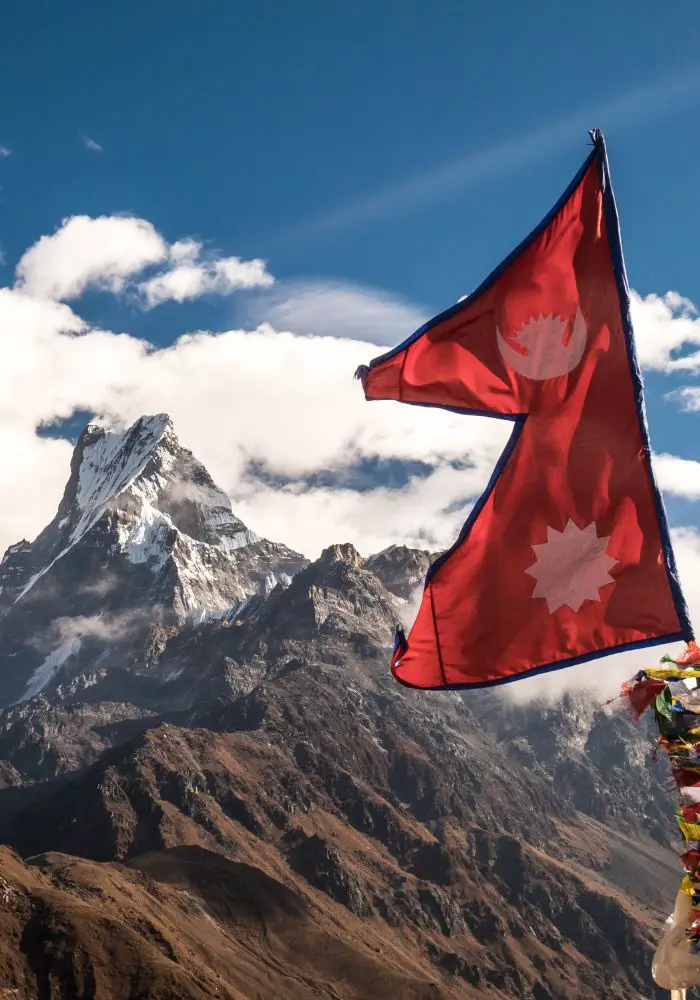
- Hemanta Ritu (mid-November to mid-January)
In Nepal, winter is divided into two parts, with Hemanta being the “pre-winter season” so to speak.
These months see a gradual decrease in average temperatures around Nepal. It is considered a good season for trekking in Ghorepani Poonhill, Manang Gosaikunda, Manjushree Trail and more.
For the farmers in Nepal, pre-winter is the harvesting season. Crops are collected and stored for the upcoming winter.
- Shishir Ritu (mid-January to mid-April)
These months are the “true” winter months. But, note that winters in Nepal have a large variation depending on the region.
The Southern plains of Nepal remain fairly warm while the mountainous regions often see heavy snowfall.
A Summary of Nepali Seasons
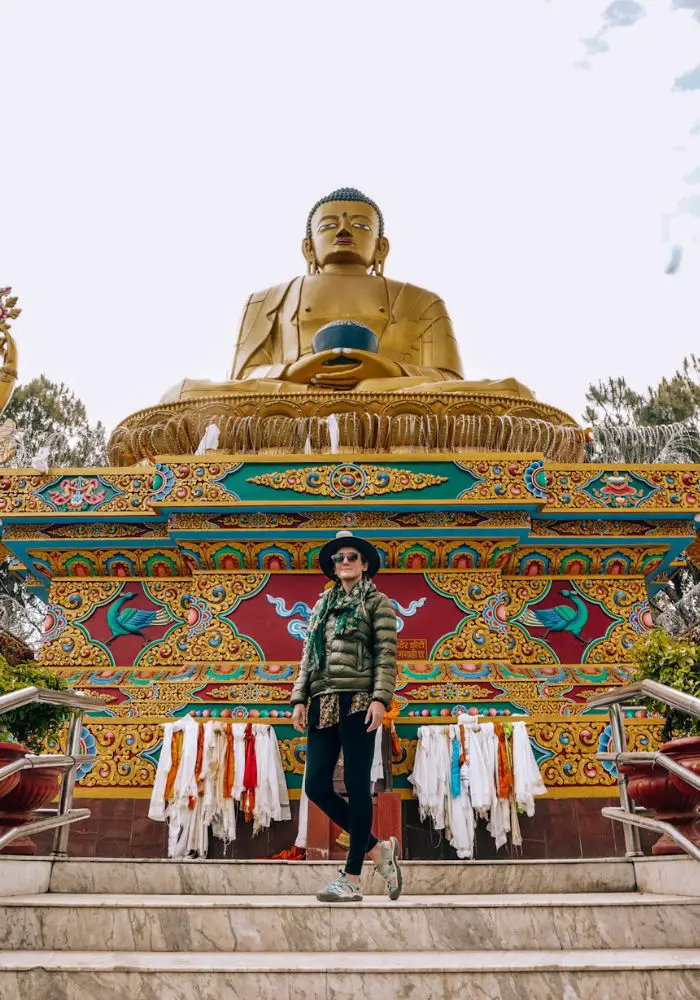
FAQs on Seasons in Nepal
Let’s tackle some of the most common questions about Nepal’s seasons and
Is there autumn in Nepal?
Yes, Nepal does have Autumn. The Autumn season starts in the middle of September and goes to the end of November. The weather will remain humid, warm, and sunny.
Which month is most hot in Kathmandu?
June is the hottest month in Kathmandu with a temperature of 73°F on average. The skies are generally clear and sunny.
Which is the coldest month in Nepal?
January is the coldest month in Nepal, with temperatures sitting around 52 °F on average.
Ready for Adventure? Subscribe Today.
Unsubscribe at anytime.
Is there snowfall in Nepal?
Yes, there is often snowfall in Nepal! In December, the winter season begins, and snow can fall as earl as the fall months and up through February.
Which season is best for Nepal?
There is no singular best time of year to visit Nepal. Rather, it depends on what activities you wish to do. For wildlife in Chitwan, visit in late Spring. For pleasant trekking, visit in the Autumn months. And, for dry weather in the capital, visit in the winter.
Which season is best for Chitwan National Park?
If you want to see the most wildlife, visit in April and May. This is the end of the dry season. While it can be toasty, this is when wildlife gathers at waterholes in search of a drink.
If you are more after pleasant temperatures than wildlife, then October to early March is the best time to visit.
Which country has six seasons?
Nepal is the country that has six seasons. Nepal does not use the western “four seasons” structure. Instead, they have six seasons made up of two months each.
The name and range of these six seasons can be seen below.
What are the 6 seasons in Nepal?
Final thoughts on the seasons in nepal.
The month you choose to visit Nepal should be based on what activities you plan to take part in. There is no one perfect timeframe within the Nepal seasons that works for every activity and elevation.
Personally, I think any season could be a great time to visit Nepal. However, they each have their own pros and cons to consider.
Remember to plan ahead with either my What To Wear in Nepal post or my Nepal Trekking Packing List . What will ensure a comfortable (and dry!) trip!
Need More Nepal Travel Inspiration? Check Out These Resources.
- Is Nepal Safe for Solo Female Travel?
- What To Wear in Nepal for Women
- 17 Best Places To Visit in Kathmandu, Nepal
- A Chitwan Jungle Safari Travel Guide & Review
- A Complete Nepal Trekking Packing List
- 11 Things I Wish I Knew Before Visiting Nepal
- Paragliding in Pokhara – A Can’t Miss Adventure
- Seasons in Nepal & the Best Time to Visit
- Is Nepal Worth Visiting? 10 Reasons To Go
- A Nepal Travel Guide
Pin Me for Later!
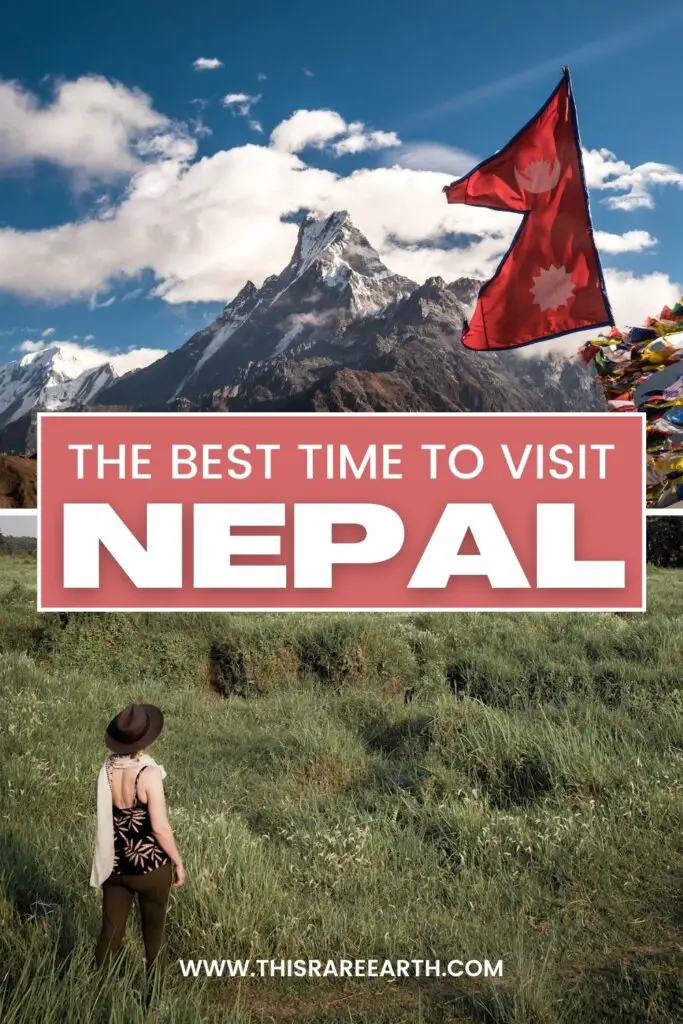
- 12 Best Things To Do in Kuwait in 2024
- Is Kuwait Safe for Tourists in 2024?
- A Kuwait Travel Guide for First Time Visitors
- Cabo San Lucas vs San Jose del Cabo Travel: Which Is Better?
- Cancun vs Cabo: Which is Better, Los Cabos or Cancun?
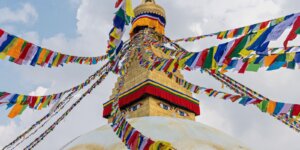
About Monica
Monica has been a solo female world traveler for over 15 years. She is an expert on outdoor adventures, solo female travel, and off the beaten path destinations. She is the founder of This Rare Earth and is a firm believer that the world is not as scary as the media might have you think! Learn more about her here . Connect with her on Instagram .
Reader Interactions
Leave a reply cancel reply.
Your email address will not be published. Required fields are marked *

Best Time To Visit Nepal
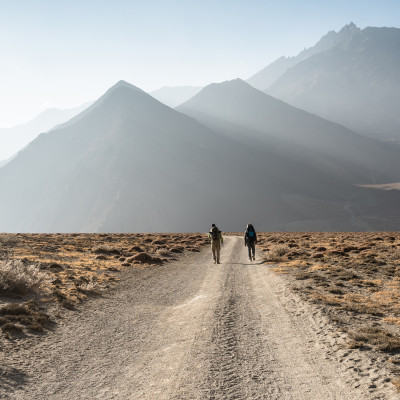
Nepal through the seasons
The best time to visit Nepal is during the months of October and November. The monsoon is over, which means magnificent, green, lush vegetation as well as clean air – the perfect time to explore the country in all its beauty, especially given the mild temperatures. This is also the time the views of the peaks of the Himalayas are nearly picture perfect.
May is considered low season and we recommend not visiting the country from June to mid September.
Best Time To Visit
We recommend.
- The mountain views are the best in winter so you could opt for a short trek at low altitudes
- Visit Chitwan National Park and try and spot the big five – the one-horned rhino, the Royal Bengal tiger, the Asian elephant, leopard and the Himalayan Sloth bear
- Witness the colorful Maha Shivratri celebrations (A Hindu festival worshipping Lord Shiva) at the Pashupatinath Temple
- Head out to one of the popular trekking trails in the Everest or Annapurna. But book early as these are usually in high demand!
- Get the adrenalin flowing with a white water rafting trip
- Fly and get up close and personal with the Everest, as you soak in stunning aerial views of the Tibetan Plateau’s lakes and glaciers
- Enjoy the festivities around the Nepali New Year
- Get the adrenalin flowing with a short kayaking trip given the weather will be warm
- Spend time at the several restaurants across Kathmandu sampling Nepalese cuisine, or participate in a cooking class at a local’s home
- As the Mustang region falls in the rain shadow area of the Himalayas, it is relatively dry during this time, which means you can trek in the upper and lower Mustang region
- Nepal’s rice fields will be a lush green at this time, so why not capture stunning photographs of the panoramic landscape?
- Enjoy the various trekking trails around Pokhara, with its crystal clear lakes, turbulent rivers, deep gorges, and picturesque valleys
- Be part of the Dashain, the most auspicious religious celebration in the country, which usually begins end September and head into October
- Visit the small town of Nagarkot to savor panoramic views of the Himalayas and get a taste of village life
- Stroll through Kathmandu’s backstreets, catching glimpses of art and daily lives
- Kathmandu Valley is a World Heritage Site so make sure you visit the Durbar Squares, Patan and Bhaktapur, the Buddhist stupas and the Hindu temples
- Attempt one of the most popular long treks (21 days), the Annapurna trek, which takes you along the edge of the Tibetan Plateau and through the Thorung La Pass (5,400 meters)
- To catch a glimpse of Nepali village life, stop off at the quaint Newari village of Bandipur, en route to Pokhara or the high-altitude Sherpa village of Namche Bazaar in the Everest region
- Tihar or the festival of lights is usually celebrated in Nepal in November and is the country’s second-biggest religious festival
- Visit the town of Dhulikhel with its panoramic views of the Himalayan range, enchanting temples, and exquisite local handicrafts
- Indulge in a spot of mountain biking
Best Time to Visit Nepal by Season
The weather patterns are largely predictable. There are four seasons in Nepal:
- Spring from March to May
- Summer from June to August
- Autumn from September to November
- Winter from December to February. The monsoon season lasts from late June to mid-September, while it is relatively dry the rest of the year.

What to Pack for Nepal
There are largely no clothing restrictions in Nepal and you can wear what is most comfortable and weather appropriate. Choosing to be formal or casual is entirely up to you. Traveling in mountainous regions means experiencing a wide range of temperatures across 24 hours. During the day it can be quite warm, whereas at night temperatures can drop dramatically. Crossing over a pass requires an extra layer of clothing just for an hour or two. Lightweight and tropical clothes with umbrellas are advised from June to August. Between October and March, lightweight clothes with a coat for the evenings and warm clothing for the mountainous areas are recommended.
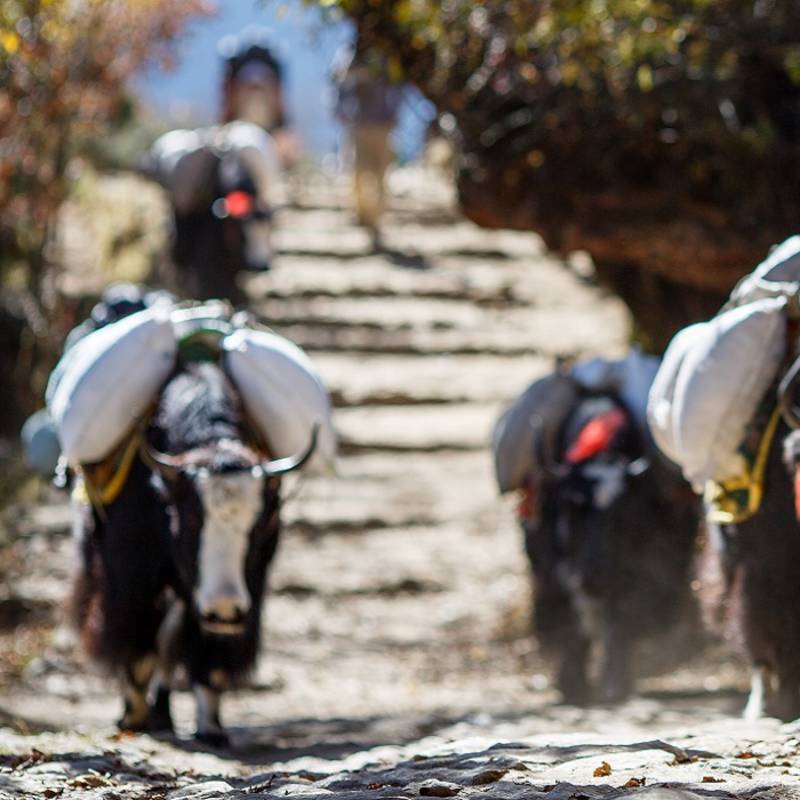
Popular Trips to Nepal
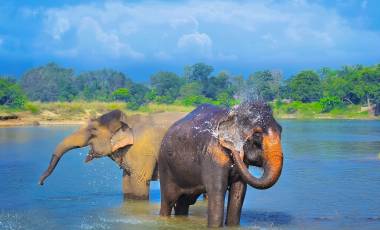
Nepal & Bhutan: Highlights
Discover the Himalayan kingdoms of Bhutan and Nepal on this 16-day tour. Start your journey in Kathmandu, the capital of Nepal, and take in its magnificent UNESCO World Heritage sites. Go on an exciting safari at the Royal Chitwan National Park and bask in panoramic mountain views in the scenic town of Dhulikhel. Continue your…
![nepal visit season Enchanting Travels Nepal Tours Women in sari standing on the boat,Phewa lake,Pokhara city ]](https://res.cloudinary.com/enchanting/q_70,f_auto,w_380,h_230,c_fill,g_face/enchanting-web/2023/09/Enchanting-Travels-Nepal-Tours-Women-in-sari-standing-on-the-boatPhewa-lakePokhara-city-.jpg)
Undiscovered Nepal: Lower Mustang, Kathmandu and Pokhara
Take an unforgettable journey into Nepal’s unexplored destinations where few tread! This private Nepal tour introduces you to the Lower Mustang region where you will explore hidden gems such as Kagbeni, part of the Annapurna Circuit Trek and the windiest city in Nepal! At Jomson, you have the chance the discover one of the world’s…

Classic Nepal for Beginners
From its lofty mountains to its warm people, Nepal is yours to discover! Home to enchanting UNESCO World Heritage sites, give in to Kathmandu’s mesmeric charm before you tackle lofty heights at Pokhara. In Chitwan, befriend a herd of elephants or laze by the Rapti, and soak in the undiscovered, tranquil charm of Dhulikhel. Your…
Best Places To Visit

Kathmandu is a Himalayan valley kingdom, cradled within the foothills of mighty peaks. The city is home to seven UNESCO World Heritage sites and several other attractions, such a carved rose-brick pilgrimage sites, artistic workshops, and cafes and courtyards brimming with friendly local families.

Pokhara has it all – a picturesque valley nestled amid majestic mountains, glorious adventure trails and delicious cuisine! Originally envisioned as a center of commerce, the city’s roots can be traced back to the 17th century, when it featured on the trade route between India and China.
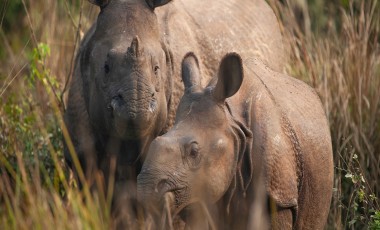
Chitwan: A wholly different experience! Chitwan is home to one of Asia’s finest National parks and one of the most traditional and conservative indigenous people of Nepal – the Chepangs.

Dhulikhel: Undiscovered gem Dhulikhel is a scenic and ancient town located east of Kathmandu with panoramic views of the Himalayan range, enchanting temples, exquisite local handicrafts, and friendly and intriguing culture.

The second highest point on the valley rim at an elevation of 7,200 feet, Nagarkot boasts panoramic views of the Himalayas and is ‘so near yet so far’ from the maddening crowd of a bustling city.
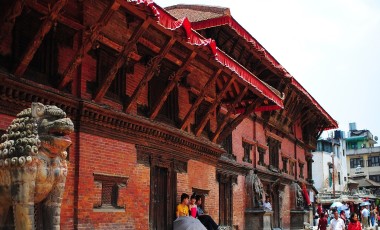
Patan is one of three royal cities in the Kathmandu Valley, located on the southern side of the Bagmati River and about half a mile south of Kathmandu.
Things To Do
From towering mountain peaks to incredible hiking opportunities and cultural delights – Nepal holidays are a joy! Our destination experts share their personal favorite highlights.
Travel Guide
Discover the most essential details before you travel to Nepal, from visa formalities to combating altitude sickness in the Himalayas, and everyday traditions, in our Nepal travel guide.
From the Blog
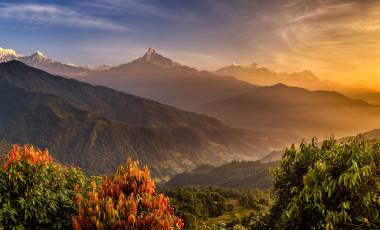
Climb every mountain: Why you need to plan a Nepal holiday
On your Nepal holiday, find spiritual bliss in the ancient temples of Kathmandu, many of them UNESCO World Heritage Sites, bathe elephants at Chitwan National Park, or challenge yourself with treks in the Himalayas.
What Our Guests Say

The Enchanting Difference
Authentic & unique.
Our award-winning, licensed local guides provide incredible insights and exclusive experiences for you.
Personalized & Private
Our experts completely customize your private tour to match your interests and preferences.
High-Quality Experiences
All our accommodations and services are personally tested by our team.
Fully Supported Travel
You’ll have a personal and dedicated trip coordinator, backed by 24/7 support in case of emergencies while you’re traveling.
Financial Protection & Flexibility
Your booking is flexible and completely secure with us.
Safe & Secure
Your safety and well-being are our top priorities.
Do you have a vacation in mind? Personalize your itinerary with our Trip Builder.

- Best Time And Season To Visit Nepal | Trek Me Nepal
Nepal, a landlocked country nestled in the heart of the Himalayas, is a paradise. Nature enthusiasts, adventure seekers, and cultural aficionados choose Nepal. Nepal offers a unique and captivating experience throughout the year. Its diverse landscapes, rich cultural heritage, and vibrant traditions attract everyone. Choosing the best time to visit Nepal is crucial to maximizing your experience and witnessing its beauty. Spanning a wide range of altitudes, Nepal experiences distinct seasons, each offering unique opportunities for adventure, cultural exploration, and natural wonders. However, choosing the best time to visit Nepal is crucial to fully appreciate its beauty and activities.
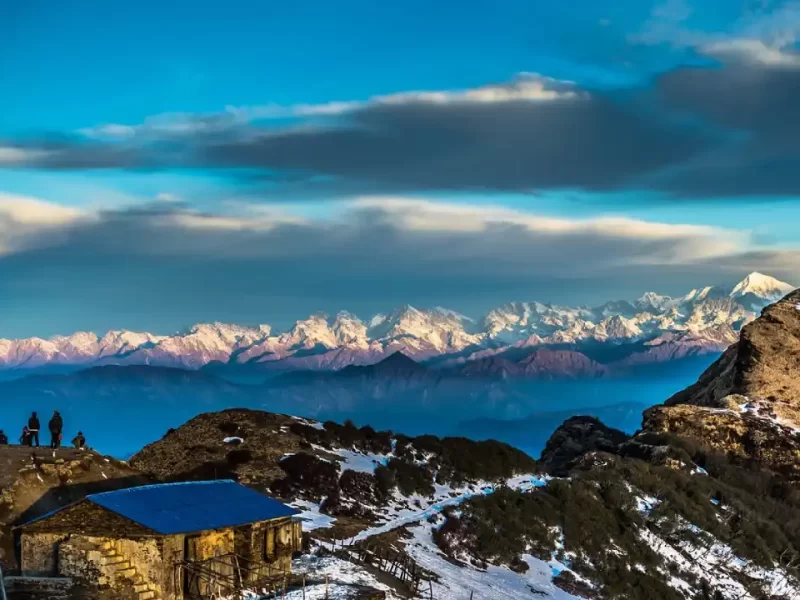
Spring season (March to May):
In Nepal, the months of March to May mark the spring season. This period boasts mild temperatures, blooming rhododendrons, and clear skies, providing ideal conditions for trekking and mountaineering. The lush greenery and vibrant flowers add a touch of magic to the landscapes, making it a photographer’s paradise.
Additionally, spring is the peak season for climbing expeditions, attracting mountaineers from around the globe to conquer the world’s highest peaks, including Mount Everest. This season is one of the best times to visit Nepal, offering an ideal climate for trekking, mountaineering, and sightseeing.
Spring is the peak season for climbing expeditions, attracting mountaineers from around the globe to conquer the world’s highest peaks, including Mount Everest. The renowned Everest Base Camp and Annapurna Circuit are at their best during the spring. The moderate temperatures create comfortable conditions for long hikes, and the clear visibility allows trekkers to view the breathtaking scenes of the Himalayan peaks. The vibrant flora and fauna add a touch of magic to the journey, making it a paradise for photographers.
Moreover, spring is the peak climbing season. The towering peaks of the Himalayas attract adventurers from around the world to climb them. Mount Everest is the highest point on earth, which offers an unparalleled experience for mountaineering enthusiasts
Culturally, Springtime in Nepal is also a time of celebration. People celebrate the festival of Holi, known as the Festival of Colors, with great enthusiasm. Travelers have the opportunity to immerse themselves in the vibrant atmosphere, witnessing locals joyfully throwing colored powders and water at each other.
Autumn Season (September to November)
In Nepal, the months of September to November mark the season of autumn. Autumn provides the perfect backdrop for trekking, sightseeing, and cultural exploration with clear skies, moderate temperatures, and stunning visibility. Trekkers particularly popularize this season because the trails are well-defined, and the views of the Himalayan peaks are breathtaking.
People consider this season another prime time to explore the country, especially for trekkers and cultural enthusiasts. The weather is neither too hot nor too cold, making it comfortable for extended hikes. Trekkers can embark on journeys like the Annapurna Circuit , Langtang Valley , and the famous Everest Base Camp trek, reveling in the beauty of the landscapes and cultural interactions.
The autumn season is also an ideal time for cultural exploration. Festivals like Dashain and Tihar also occur during the autumn, offering travelers a unique opportunity to witness and participate in traditional celebrations. The festivals provide travelers with a unique insight into Nepalese customs and traditions.
Clear skies and the perfect backdrop offer photographers and nature enthusiasts the opportunity to capture the essence of Nepal’s rich cultural heritage against the majestic backdrop of the Himalayas.
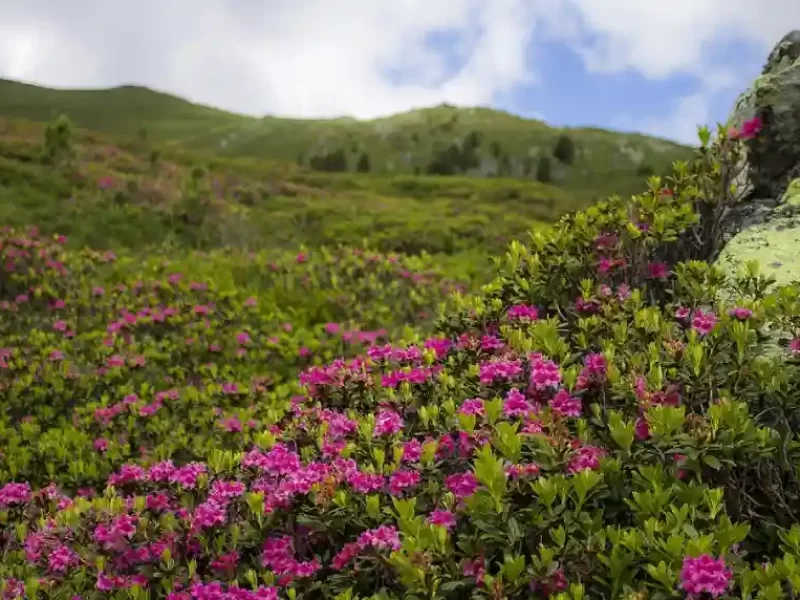
Monsoon Season (June to August):
In Nepal, the months of June to August mark the monsoon season. Nepal experiences the monsoon season, bringing heavy rainfall and a lush, green transformation to the landscapes. This season poses challenges for trekkers due to slippery trails and potential landslides, but it also offers a distinct charm for those seeking a different perspective.
Due to heavy rainfall, it is an excellent time to explore the lush, green landscapes and witness the country’s agricultural abundance, but it also brings potential challenges for trekking. The monsoon creates a refreshing and vibrant environment. Travelers interested in a quieter experience off the beaten path can visit during this time, keeping in mind that some regions may be inaccessible due to landslides and flooding.
The monsoon season is an excellent time to witness the country’s agricultural abundance, with terraced fields flourishing with crops. The rivers swell, creating impressive waterfalls and adding to the overall scenic beauty. Travelers who enjoy a quieter experience away from the crowds can explore the cultural and natural wonders of Nepal during this period.
However, it’s important to note that some regions may be inaccessible due to the risk of landslides and flooding. Popular trekking destinations like the Annapurna and Langtang regions may experience difficulties, so travelers should plan their itineraries accordingly.
Winter season (December to February):
The winter season, from December to February, offers a unique charm for those seeking a different perspective on Nepal. Higher altitudes can be quite cold, especially in the mountainous regions, While temperatures in the lowlands are mild. This season offers a different yet equally captivating experience for those who appreciate a serene and quieter atmosphere.
Winter is an excellent time for cultural exploration, as the skies are often clear, and the views of the snow-capped peaks are spectacular. Travelers can indulge in cultural festivals, visit ancient temples and monasteries, and experience the warmth of Nepalese hospitality.
Due to colder temperatures and the possibility of snowfall, trekking in high-altitude regions may be challenging. Other options available include lower-altitude trekking. During winter. The city of Pokhara, surrounded by the Annapurna and Machapuchare mountain ranges, is a popular destination. It offers a mild climate and stunning views.
Conclusion:
The best time to visit Nepal depends on individual preferences, interests, and the type of experience one seeks. Each season in Nepal offers a unique charm. Whether it’s the vibrant colors of spring, the clear skies of autumn, the lush landscapes of the monsoon, or the serene winter. Travelers can tailor their journey to make the most of their time in this enchanting Himalayan nation. Whether you are an avid trekker, a cultural enthusiast, or someone seeking tranquility amidst breathtaking landscapes, Nepal has something to offer year-round.
Trek Me Nepal
Comment (0), leave a reply cancel reply.
Your email address will not be published. Required fields are marked *
- Queens Digital: Digital Marketing Agency in Nepal
or continue with
Enter the e-mail address associated with the account. We'll e-mail a link to reset your password.

When to go to Nepal
You can come to Nepal whenever you like of course, we’ll always be happy to see you, but it’s worth knowing a little about our seasons so that you can plan and pack accordingly. Knowing when to go trekking in Nepal is especially important, as many trails close in the off-season.
In terms of temperatures, Nepal weather follows a similar pattern to much of Europe and North America – hottest in the summer months of June-August , and coldest in the winter months December-February . We also have a rainy season though, which generally runs over the summer months June-August .
There are regional differences too, of course, caused by huge changes in altitude across the country.

Confused? Don’t worry, here’s a summary of each season, along with tips on what you can do during these months
Month-by-month guide to travelling in nepal.
Seen by some as the best time to visit Nepal. The monsoon season comes to an end in September, leaving clear skies, lush green landscapes and slightly cooler temperatures. These months are ideal for trekking.

- Trekking and mountaineering!
- Photography
- Wildlife spotting in the national parks
- Festivals (Dashain and Tihar)
Although these are Nepal’s coldest months, you’ll generally find that the days are fairly pleasant – you’ll just need to pack your warmest clothes for the night time, which can get very cold! The weather remains dry at this time of year, and fewer tourists means a quieter experience at some of the country’s main highlights and trekking routes.

- Sightseeing, and exploring Nepal’s towns and cities
- Trekking (but pack warm!)
As we enter the Spring season, temperatures begin to creep back up and the days become longer, making it a great time for trekking. May sees the first small signs of the rainy season, although it is usually more cloud and showers than torrential downpours.
These months also see a number of festivals taking place, as well as the blooming of the rhododendrons, making it the most colourful time to visit Nepal.

- Trekking and mountaineering
- Festivals (including Holi festival and Nepali New Year)
- Photography (it’s Rhododendron season, after all!)
- Wildlife spotting
Nepalese summer brings rising temperatures, humidity and the start of the monsoon. Although trekking can still be pleasant in early June, we don’t generally recommend taking on major routes during the monsoon season. You can still enjoy sightseeing around Nepal, however, and will find that many tourist attractions and hotels will have lower rates and a quieter experience. A number of festivals also take place during these months.

- Sightseeing

Internet in Nepal

Nepal Visas and Arrival

Nepal Treks for Beginners and Families

How to be a Responsible Tourist

QUICK LINKS
- Travel Advice
- Stories of Nepal
Connect With Us
© copyright 2021 travel nepal & royal mountain travel. all rights reserved., privacy overview, please fill in the form below with as much information as you can provide, and one of our nepal travel advisors will get back to you within 48 hours.
- 1800-123-5555
- Travel Agent? Join Us
Get Travel Triangle in your pocket.
Get your app via sms
- Honeymoon Packages
- Family Packages
- Holiday Packages
- Holiday Deals
- Luxury Holidays
- Destination Guides
- Holiday Themes
- Plan My Holiday
Indian Destinations
- Uttarakhand
International Destinations
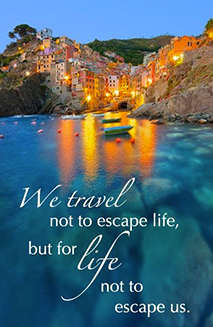
- Switzerland
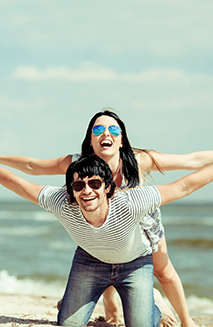
- Sikkim - Gangtok - Darjeeling
- South Africa

Seasonal Packages
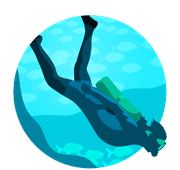
Water Activities
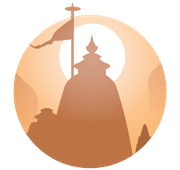
Best Time to Visit Nepal
The fluttering prayer flags beckoning to mountains, best time to visit.
- How to reach
- Places to visit
- Things to do
- Essential Information
Get Free Quotes
- Best Time To Visit
Rated 4.50 / 5 ( based on 676 reviews )
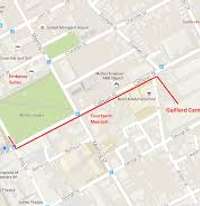
Quick Information
Ideal duration, starting from, http://welcomenepal.com/, best time to visit nepal.
Plan your trip during best season to experience the best of this stunning destination
The best time to visit Nepal is during the autumn season in the months of October, November, and December when the temperature ranges between 26 degrees Celsius and 4 degrees. Nepal sees the highest number of travelers during the autumn season during this time, the rainy season is gone and the weather becomes extremely pleasant. This weather in Nepal is perfect for outdoor sightseeing, trekking, and adventure sports like paragliding or bungee jumping and for photography sessions as well. The visibility allows transportation between cities across mountainous terrains much easier too, and the risks of landslides recede significantly, making it an ideal time to visit Nepal . Also, the popular Kathmandu International Mountain Film Festival takes place in Nepal during the month of December. Monsoon season in Nepal begins from June till September. The peak month for rainfall is July, which should be avoided. Trekking can be enjoyed in August and September as the weather opens up after the heavy rainfall in July and becomes pleasant. For nature-lovers, the best time to visit Nepal is during the months of March and April because during this season, rhododendrons are in full bloom and the entire valley looks absolutely stunning.
March-May (24 °C to 12 °C) :
From March to May, Nepal experiences spring in its air. And, as the spring rolls into summer, the temperature in the plains and the valleys get really hot. The chill goes away one day at a time. However, in the lowlands of the Kathmandu valley , the weather in May is mildly warm. And, as one goes up the mountains, the heat is replaced by colder winds.
As the hills are covered with rhododendrons, orchids, and other flowers during the spring season, this is the best time of the year to cherish nature along with wildlife.
June-August (27 °C to 18 °C) :
June to August is the monsoon season in Nepal . This is not a very good time to visit Nepal as the temperature is filled with humidity. Accompanied by everyday rains and occasional thunderstorms in the valley, sightseeing tours are washed away in the rain, and trekking and hiking routes are too dangerous to travel on.
September-November (25 °C to 9 °C):
From September to November, Nepal experiences the autumn season with an average temperature of 15-degree Celsius. The rains leave the valleys lush green and the skies brilliant blue. As a result, the landscape of Nepal gets a complete makeover after being roasted in the summer heat. This is the best season to visit Nepal , not only for the weather but for festivities as well.
Get on an excursion to Chitwan and Bardia to explore the wildlife of Nepal during this period.
December-February (18 °C to 2 °C ):
From December to February, there is winter in Nepal. At the higher altitudes, it is really cold. The temperature in the lower plains is comfortably cooler. If you are visiting the lower points in Nepal, then winter too is perfect for visiting. Short, low elevation treks can be done without any problem.
Best Time to Visit Nepal for Festivals:
September-October: These are already the best months to visit Nepal because of climatic conditions. As an added bonus, Nepal celebrates Durga Puja during this time. The tenth day, known as Vijaya Dashami in Bengal, Dussehra in the rest of India and Dashain in Nepal is a huge festival over there. The festival of Diwali or Tihar follows closely behind, making the month of autumn very auspicious in the whole country.
These months are best to explore the wildlife of Nepal, as the weather is dry and offers perfect conditions for wildlife sightings comprising elephants, monkeys, birds, and rhinos. Plan a visit to Chitwan and Bardia to see the beautiful national parks.
March-May : During these months Holi is celebrated with much enthusiasm. Holi the festival of colors is basically an Indian festival but is celebrated across all the major cities in Nepal. Also, these are the months when the rhododendron bloom in full swing making Nepal’s landscape appealing.
Climate in Nepal
Summer season in nepal.
Summer begins in the lower altitudes as mild and pleasant, with a temperature of around 22-25°C. But as days pass, it keeps getting hotter. Nepal weather in April is the last when it stays ideal for a visit. After that one should consider visiting in the autumn only.
Monsoon Season in Nepal
In Nepal, monsoon follows the hot summer months as a respite to the residents but is a source of worry to the travellers. From June to August and early September, clouds hover over the valley and bring rainfall in heavy showers all over.
Winter Season in Nepal
Up above in the high mountains, Nepal weather in December and January is about snowfall and occasional blizzards. But down in the valley, the trip can be enjoyed with some heavy jackets and scarves.
Popular Packages
Unlimited Choices. Trusted Agents. Best Prices. Happy Memories.
Pleasing Pokhara Honeymoon Package
Starting from:
Exciting Pokhara Sightseeing Tour Packages
Enchanting nepal tour.
- kathmandu (2D)
- Changunarayan
Discover The Ancient Nepal Tour
Captivating kathmandu tour package.
- kathmandu (4D)
Surreal Kathmandu Honeymoon Package
Splendid kathmandu tour package, amazing kathmandu tour package, engaging kathmandu tour package, exhilarating kathmandu tour package, nepal sporting events tour package.
- kathmandu (5D)
Idyllic Kathmandu Honeymoon Package
Nepal 3 days trip package.
- kathmandu (3D)
An Adventurous Yet Relaxing Pokhara Tour Package
Revitalising nepal tour package, nepal shopping tour package, nepal 6 days trip package, splendid nepal tour package, stupendous nepal honeymoon package, romantic nepal honeymoon package.
Our experts would love to create a package just for you!
Fill in your requirements here >
Your Preferences
Where do you want to go?
Fastest Growing Holiday Marketplace
Verified Agents
Happy Travellers
Destinations
Easy, Secure & Reliable
Traveltriangle
Quality Control
Nepal Tour Packages
Read on to find out why our customers love us!
Prateeekbhatia
Prateeekbhatia's 6 days trip to Nepal
Sooraj Shingari
Sooraj's 6 days trip to Nepal
Sol's 7 days trip to nepal.
Adarsh Pathak
Bhubaneswar
Adarsh's 3 days trip to Nepal
Lal's 5 days trip to nepal, rbna's 4 days trip to nepal.
Anjali Akware
Anjali's 4 days trip to Nepal
Cbs's 6 days trip to nepal.
Sandeshbhatkal
Sandeshbhatkal's 5 days trip to Nepal
Shrushaspatil
Shrushaspatil's 7 days trip to Nepal
Want best packages handpicked just for you?
Fill the form and get a callback from our holiday experts
How It Works
Personalise This Package
Make changes as per your travel plan & submit the request.
Get Multiple Quotes
Connect with top 3 agents, compare quotes & customize further.
Book The Best Deal
Pay in easy installments & get ready to enjoy your holiday.
- We are hiring!
- Testimonial
- Travelogues
- Terms and Conditions
- Privacy Policy
Corporate Office:
Holiday Triangle Travel Private Limited
Address: Plot No - 52 , 3rd Floor,
Batra House , Sector 32,
Gurugram - 122001 ,Haryana
Landline: 1800 123 5555
Connect with us on :

All rights reserved © 2024
seasons Nepal has four climatic seasons.
Spring (between March – May): The temperature is mildly warm in low lands while moderate in higher altitudes with plenty of opportunities to have tryst with the mountain views. It is also the time for flowers to blossom and the national flower of Nepal – rhododendron sweeps the ascending altitudes with its magnanimous color and beauty.
Summer (between June – August): This is also the monsoon season in Nepal. The weather is hot and wet at times. It rains almost everyday with occasional thunderstorms in the evening. The rain spreads the pleasantness around with lush green vegetation.
Autumn (between September – November): This is the best tourist season in Nepal with the summer gone by and the winter to set in. The weather is highly pleasant so are the mountain views. This is the peak season for trekking as mountain views are guaranteed so better book your flight in advance. This is also the season of festivities as Nepal celebrates the biggest Hindu festivals Dashain followed by Tihar.
Winter (between December – February): The weather is cool and the sky is clear with occasional snowfalls at higher elevations. This season is good for trekking in lower elevations. The morning and night is cold and the days are warm when sunny.
t emperature & rainfall Nepal is the country of extremes. The low-land plains of the Terai can have tropical temperatures and also the mosquitoes. The Himalayas can get to sub-zero temperatures, but the sun blaze can bring some warmth during the day, even in the mountains. The temperature of Kathmandu goes below 1 Degree Celsius (34 Degree Fahrenheit) in winter and rises to an average of 25 Degree Celsius (77 Degree Fahrenheit) in summer.
The average temperature in Kathmandu during the four seasons:
* Spring season ranges between 16-23 Degree Celsius (61-73 Degree Fahrenheit) * Summer season ranges between 23-25 Degree Celsius (73-77 Degree Fahrenheit) * Autumn season ranges between 15-24 Degree Celsius (59-75 Degree Fahrenheit) * Winter season ranges between 9-12 Degree Celsius (48-54 Degree Fahrenheit)
During the rainy monsoon season between June to August, it rains to an average between 200-375 millimeters in Kathmandu. There is occasional rainfall during the other seasons too. In an average, 1300 millimeters of rain falls in Kathmandu every year.
Check out VisitNepal.com sponsors site to prepare yourself to come to Nepal in every season with all the good reasons stored for you.
Best Time to Visit Kathmandu: A Detailed Season & Month Guide

Nestled in the heart of Nepal , Kathmandu stands as a vibrant testament to the confluence of ancient traditions and modern aspirations. A harmonious blend of history, spirituality, culture, and nature crafts the city’s unique essence. As the calendar pages turn, each season cloaks Kathmandu in a distinct aura, offering travelers an array of unparalleled experiences.
From the brisk embrace of winter to the warm touch of summer, the choice of when to immerse oneself in Kathmandu’s wonders is truly personal. Join us as we journey through the city’s rhythmic seasonal dance and explore the myriad shades of each month.
Table of Contents
Spring (March-May): An Overture of Colors and Climates
Spring in Kathmandu, spanning March to May, unfolds as a vibrant symphony of blossoming flora and temperate weather. As winter’s grip relaxes, the city bursts into a riot of colors, with clear skies framing the majestic Himalayan backdrop. It’s a period of rejuvenation, inviting exploration and admiration.
March in Kathmandu:
- Weather Vignette: Winter’s chill bows out, making way for tepid days and crisp evenings.
- Sights & Sounds: Witness the first blooms, especially the enchanting rhododendrons.
- Celebrations : Holi, the carnival of colors, paints the town.
- Reasons to Visit: The gentle climate makes it prime for valley trekking.
- Traveler’s Tip: Keep an umbrella handy for unexpected sprinkles.
April in Kathmandu:
- Weather Vignette: Temperatures start to nudge upwards, and clear skies dominate.
- Sights & Sounds: Snow-capped mountains peer clearly at the horizon.
- Celebrations: Revel in the Bisket Jatra and Seto Machhendranath festivals.
- Reasons to Visit: Best month for photography with azure skies as a backdrop.
- Traveler’s Tip: Start your day early to maximize daylight explorations.
May in Kathmandu:
- Weather Vignette: Warm days with occasional cool breezes.
- Sights & Sounds: Kathmandu’s alleys bustle with life as summer nears.
- Reasons to Visit: Extended daylight hours for temple hopping.
- Traveler’s Tip: Wear light, breathable clothing.
- 9 Nights 10 Days Nepal Trip
- Ghorepani Poon Hill Trek 9 Days
- 6 Days Nepal Tour Package
- Nepal 5 Days Trip Itinerary
- Kathmandu Daman Dhulikhel Tour
- 10 Days Nepal Adventure Travel
- 6 Days Kathmandu & Pokhara Trip
- Click Nepal More Packages
Summer (June – August): Echos of Rain & Resonance
Summer in Kathmandu, from June to August, sings a melody of warm days punctuated by rhythmic monsoon showers. The city, bathed in freshness, resonates with the echoes of raindrops and glistening streets, creating a serene yet spirited ambiance perfect for introspective journeys and cultural immersions.
June in Kathmandu:
- Weather Vignette: Warm days heralding the whispers of upcoming rains.
- Sights & Sounds: Greenery flourishes, lending a fresh look to the city.
- Reasons to Visit: Quieter tourist spots, and unique rain-soaked experiences.
- Traveler’s Tip: Waterproof your belongings.
July in Kathmandu:
- Weather Vignette: Rains dance in full gusto, painting the town wet.
- Sights & Sounds: Listen to the rhythm of raindrops on ancient temple roofs.
- Reasons to Visit: Experience monsoon meditations and indoor retreats.
- Traveler’s Tip: Good footwear is a must.
August in Kathmandu:
- Weather Vignette: Receding rains but the wet symphony continues.
- Celebrations: Janai Purnima knots the city in cultural fervor.
- Reasons to Visit: Blend of warmth and wet, fresh post-rain atmosphere.
- Traveler’s Tip: Local tea, ‘chiya’, is a must-try.
Autumn (September – November): A Tapestry of Gold & Festive Tales
Autumn in Kathmandu, between September and November, weaves a golden tapestry of crisp air and amber foliage. The city, draped in festive fervor, celebrates its rich heritage against a backdrop of clear Himalayan vistas. It’s a season of reflection, tradition, and mesmerizing beauty.
September in Kathmandu:
- Weather Vignette: Mild days, chilly nights, and nature’s palette on display.
- Sights & Sounds: Fall foliage paints the landscape in hues of gold and amber.
- Reasons to Visit: Ideal trekking conditions and post-monsoon clarity.
- Traveler’s Tip: Layer up for varying temperatures.
October in Kathmandu:
- Weather Vignette: Cool, refreshing breezes.
- Celebrations: Dashain vibes electrify the streets.
- Reasons to Visit: Cultural immersion at its peak.
- Traveler’s Tip: Book accommodations in advance.
November in Kathmandu:
- Weather Vignette: Wintry whispers begin, with a gentle chill in the air.
- Celebrations: The city illuminates with Tihar celebrations.
- Reasons to Visit: Less crowd but similar autumn charm.
- Traveler’s Tip: Warm shawls or jackets are a must for evenings.
Winter (December – February): The Timeless Tranquility
Winter in Kathmandu, spanning December to February, wraps the city in a serene blanket of chill and quietude. As snow graces the distant peaks, the urban bustle slows, offering moments of timeless tranquility amidst ancient temples and frost-kissed mornings. It’s a season of introspection and cozy retreats.
December in Kathmandu:
- Weather Vignette: Cold days and colder nights.
- Sights & Sounds: Snow-kissed peaks frame the city’s skyline.
- Reasons to Visit: Quiet contemplation, less touristy hustle.
- Traveler’s Tip: Pack heavy woolens.
January in Kathmandu:
- Weather Vignette: The pinnacle of winter’s embrace.
- Sights & Sounds: Hear the crunch of frost underfoot in early mornings.
- Reasons to Visit: Experience Himalayan winter in its raw beauty.
- Traveler’s Tip: Keep moisturizers handy.
February in Kathmandu:
- Weather Vignette: Transitioning period, as winter starts to relent.
- Sights & Sounds: The first buds of spring tease the senses.
- Reasons to Visit: Ideal for those wanting a mix of winter and spring.
- Traveler’s Tip: Layer up to adjust to fluctuating temperatures.
- 10 Days India Nepal Trip Itinerary
- 12 Days India Nepal Buddhist Travel
- India Nepal Wildlife Tour 15 Days
- 13 Days North India with Nepal Trip
Why You Should Visit Kathmandu?
Nestled amidst Nepal’s cultural tapestry, Kathmandu is not merely a stepping stone to the towering Himalayas. This pulsating heart of Nepal is awash with ancient temples, vibrant markets, and captivating museums. For those with wanderlust in their veins, Kathmandu offers an unparalleled odyssey into history and heritage. Dive in as we spotlight the city’s unmissable landmarks.
1. Swayambhunath Stupa (Monkey Temple):

Perched atop a hill, this ancient stupa is among the oldest religious sites in Nepal. As you ascend its stone steps, playful monkeys might greet you, hence its colloquial name. Once atop, panoramic views of the valley and the mesmerizing eyes of the Buddha painted on the stupa’s dome await.
2. Pashupatinath Temple:

Designated a UNESCO World Heritage Site, Pashupatinath Temple stands as a revered sanctuary for devotees of Lord Shiva. Gracefully poised on the Bagmati River’s banks, it serves as both a sanctum of spirituality and a sacred cremation ground. The evening aarti, a luminous ceremonial prayer by the river, is a profound testament to its spiritual ambiance.
3. Boudhanath Stupa:

Another UNESCO site, this enormous stupa is among the largest in the world. It’s a significant pilgrimage site for Buddhists and features the omnipresent Buddha eyes and fluttering prayer flags, offering a serene ambiance.
4. Kathmandu Durbar Square:

The historic seat of royalty, this square is a collection of temples, courtyards, and palaces. Although parts were damaged in the 2015 earthquake, restoration efforts are underway, and the area remains a testament to Nepal’s architectural and cultural prowess.

Thamel pulsates as the epicenter of Kathmandu’s vibrant tourism landscape. A maze of winding lanes, it’s alive with eclectic shops, cozy eateries, quaint hotels, and seasoned travel agencies. Whether you’re craving authentic Nepalese flavors or seeking reliable trekking essentials, Thamel promises a treasure trove of experiences.
6. Garden of Dreams:

Nestled within Kathmandu’s bustling core, the Garden of Dreams is a serene haven reminiscent of the colonial epoch. Adorned with European-style fountains, elegant pergolas, and reflective ponds, it offers a picturesque retreat for those seeking a moment of tranquility.
7. Patan Durbar Square:

Anchored in the central embrace of Lalitpur city, Patan Durbar Square proudly boasts its UNESCO World Heritage status. Encompassing the historic Patan palace and an array of exquisite temples, this square is a window into the city’s illustrious past and architectural splendor.
8. Bhaktapur Durbar Square:

Situated in the town of Bhaktapur , this square is a living museum of ancient art, culture, and medieval architecture. Highlights include the 55-Window Palace and the Vatsala Temple.
9. Narayanhiti Palace Museum:

Formerly the royal palace, it was transformed into a museum post-monarchy. The museum showcases the opulence of royal life and is also a testament to Nepal’s tumultuous political history.
10. Hanuman Dhoka:

This historical ensemble, encompassing the venerable Royal Palace, serene courtyards, and sacred temples, takes its name from the prominent stone effigy of Hanuman, the revered Hindu monkey deity, that guards its entrance. It’s a journey through time, echoing tales of regality and devotion.
Kathmandu transcends its iconic landmarks; it invites you to immerse in its living history, irrespective of your time of visit. Select your season, mark your calendar, and let the age-old narratives of Kathmandu envelop you. Here’s to timeless journeys and memorable sojourns!
Follow-up Articles
- Best Destinations to Visit in Nepal in July 2024
- Top 10 Places to See in Chitwan
- 10 Most Famous Waterfalls in Nepal
- Best Time to Visit for Annapurna Base Camp Trek
- 9 Famous Places to Visit in Bhaktapur
- Top 10 Tourist Places to See in Chitwan
- Things to Do in Bandipur, Nepal
- 10 Famous Places to Visit in Lumbini
- 7 Most Popular Haunted Places in Nepal
- Best Places to See in Nepal in 3 Days
- 13 Tourist Places to Visit in Nepal in June 2024
- How to Reach from Kathmandu to Chitwan National Park
About The Author
Satnam Singh
Related posts.

7 Best Religious Places to Visit in Nepal

The Currency of Nepal (Traveler tips for Money Exchange)
Leave a comment cancel reply.
Your email address will not be published. Required fields are marked *
Save my name, email, and website in this browser for the next time I comment.

2 Weeks in Nepal: 3 Itineraries
DISCLAIMER: This post might have links to travel services and products that we enjoy. We might make a commission from it at no extra cost to you.
Nepal is one of the most popular destinations located in the Himalayas mountain range . A chance to get close enough to the ceiling of the world. The home of the highest mountain, unique animals, and the home birth of Buddha and Gurkha elite fighters.
Being a landlocked country, Nepal’s tourism is driven by trekkers of Everest Mountain . Today, almost 80% of foreign visitors to Nepal come for the mountain. However, if you only have 14 days, can you even go on a trek? Is there something else worth seeing here?
This 2 weeks in Nepal itinerary will answer exactly that. This guide includes travel itineraries for Nepal, covering both trekkers and non-trekkers. I also listed below everything you need to know before you plan and book your trip to Nepal.
CHECK OUT: 2 weeks in India itinerary
THINGS TO KNOW BEFORE VISITING NEPAL
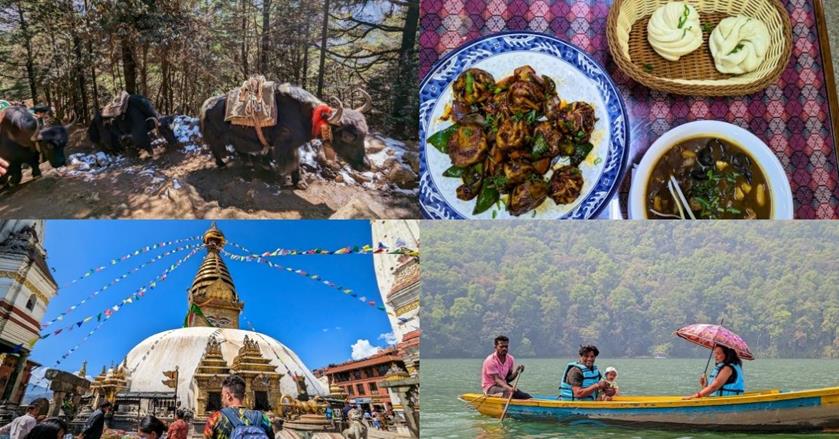
You don’t want to travel halfway across the world just to find out you’re visiting at the wrong time or planning a trip that’s too cramped. Below are answers to basic things you should remember about spending a vacation in Nepal.
When is the best time to go to Nepal
The best time to visit Nepal, particularly for the Everest Base Camp Trek, is during the pre-monsoon season (March to May) or post-monsoon season (late September to November). During these periods, the weather is usually clear, providing stunning views of the Himalayas, and temperatures are moderate, making it ideal for trekking.
It is advisable to avoid the monsoon season (June to early September) when heavy rainfall occurs. Additionally, Nepal doesn’t experience typhoons but the monsoon season brings heavy rain and potential landslides, which is not ideal for outdoor activities.
March to May is also the Everest Base Camp summit season , meaning the window time for people who want to climb Everest Mountain to come to Nepal. During this time, it’s very busy, and many teahouses in the Khumbu region are fully booked. Hence, planning is necessary.
If you plan to trek other trails, you should also know when the best season for that. For example, the summit season for the beautiful Ama Dablam is between October and November, but that’s not the right season to summit Everest Mountain.
Keep in mind that it is very cold in many areas of Nepal during the winter season. Not many hotels in Kathmandu or Pokhara have central heating.
Are 2 weeks enough for Nepal
Well, that depends on what you plan to do. For trekking at Everest Base Camp (EBC) or Annapurna Base Camp (AB), that’s definitely enough, but that’s all you can do. This means that If you plan to go to Chitwan or Pokhara after the EBC trek, that’s impossible.
But if you plan to trek ABC, which is only 7 days, you will have extra time to go to Chitwan and other parts of Nepal.
How to get around
Getting around Nepal can be tricky. Due to being a hilly country in general, flying always comes with a challenge, and it’s not the most affordable. On the other hand, taking the bus is long and very uncomfortable.
Nepal is a developing country, like literally. Many roads are under construction, making road travel super bumpy and taking longer. For example, our bus from Kathmandu to Pokhara was supposed to take 6-7 hours, but because the road was not finished, it took 10-12 hours.
Around the cities, you should install ridesharing and ride-hailing travel apps similar to Uber and Grab. The most popular transportation app in Nepal is Pathao, but you can also try Sahara.
You can pay in cash with these apps. However, it mostly works in Kathmandu only, although it won’t take too long until it’s available for Pokhara and other parts of the country.
Language and currency
Nepali (Nepalese) is the main language in Nepal. However, a large population of the country speaks English well. Around tourist areas such as Kathmandu and Pokhara, you wouldn’t have a hard time communicating with the locals.
The currency here is Nepalese Rupees (NPR). Most transactions are done in cash, but you can pay with your card at tour agencies, hotels, restaurants, and major stores. But it’s vital that you carry cash with you at all times.
There are many ATMs around the country, but most will only allow you to withdraw $70 to $100 (10,000 to 15,000 NPR). Go to the ATM of Nabil Bank, which allows you to withdraw up to 30,000 to 40,000 NPR ($230 to $300) per transaction. This will save you in ATM withdrawal fees.
Nepal has a very easy tourist visa. It’s one of the very few countries that allow almost all nationalities to enter and travel around Nepal for up to 90 days at a time. However, it’s not free unless you hold a passport from India.
The rest of the world must apply for an evisa before you arrive or get a visa on arrival. You can choose between 15, 30, and 90 days, which costs between $30 to $125. You can extend your visa for a minimum of 15 days for $45, and $3 for additional days after that.
I recommend you get the visa arranged in advance , meaning apply online versus getting it upon arrival.
This is because if you plan to get the visa on arrival, you will have to wait in a queue to use the “visa machine” where you fill in your information and usually, there are only 2-3 machines, which takes a long time.
If you already have one from the online application, you just proceed to the payment booth and be done. Make sure to bring:
- printed or digital copy of your evisa (printed might be better)
- cash in USD, GBP, or Euro (your change will be in NPR)
- no credit card payment
- a passport photo
What is the average cost for 2 weeks in Nepal
A great budget for 14 days in Nepal is around $1000 for a single person . Accommodation and food is cheap. Transportation could cost a bit more than its neighbouring country, but still good range.
If you plan to stay in hostels, you can save even further and bring the budget down to $800 for backpackers . For those planning to stay in high-end hotels, around $2,000 is a good idea for a luxury trip .
Keep in mind that this doesn’t cover your flights to and from Nepal, travel and medical insurance (which is required for treks 5,000 m and above). If you’re booking a trek, best to budget it at $100 per day just to be sure.
Other basic travel tips
Whenever you’re ready to plan your trip , below is a list of great sites to book your hotels, flights, and even insurance. I recommend that you book the hotels in advance. There are lots of accommodations, but the good ones get fully booked early and the mid-range hotels can be at a mediocre level.
PINNED MAP OF TOP THINGS TO SEE IN NEPAL
Click the icon on the top right to enlarge the map. Credit: map data: Google
2 WEEKS IN NEPAL ITINERARY
Nepal offers natural beauty and a rich culture. The country boasts eight of the world’s fourteen 8,000-meter peaks, including Mount Everest, making it a paradise for trekkers and mountaineers.
Temples, stupas, and ancient palaces abound, and festivals colour the streets year-round. The warmth and hospitality of the Nepali people add to the unforgettable experience. Below are the travel itineraries for Nepal, see which one suits you best.
When I decided to take a trip to Nepal, my main objective was to hike the famous Everest Base camp trek. That idea came to me before the pandemic, and I was not able to fulfil that goal until after the international borders had opened.
And once I got there, it was so much better than I imagined. The Nepalese people are super friendly and welcoming, the accommodation is affordable, and there are loads of things to do.
I started my trip in Kathmandu just like everyone else. In this list of itineraries for 2 weeks in Nepal, you can choose between including hiking or without hiking on your travel plan.
Itinerary #1: Trekking the EBC
This itinerary is suitable for those who plan to trek the famous Everest Base Camp. The actual trek actually takes only 11 days, but the 3 extra days are for preparing in Kathmandu at the beginning, a day for getting from Lukla (Khumbu region) back to Kathmandu, and an extra day to prepare for your departure from Kathmandu back home.
We have an in-depth guide for 14 days Everest Base Camp trek which will give you everything you need to know. This includes when to go, what to pack, doing a tour vs not, policies, what to expect, day-to-day expectations, how much to spend, and so much more.

Kathmandu before the trek
Spend a day in Kathmandu after you arrive to gather everything you need. Most people go to rental shops to rent sleeping bags and down jackets. Some people would buy hats, gloves, a duffle bag, and snow pants for the hike.
If you booked a tour, this is also the time you want to say hi to the tour company, get briefed on what time you’re leaving the next day for your flight to Lukla, and discuss what the trek will be like.
You’ll also meet your trekking guide , and if the tour company is generous enough, they will also give you a duffle bag for you to keep. You will meet your porters once you arrive in the Khumbu region (Lukla).
Porters prefer to carry a duffel bag over a hiking backpack. So, if your tour company is not providing one, it’s better to get a duffle bag. It will cost between $15 to $20. Spend this day to get cash as well. Plan around $30 a day if food and lodging are covered on the tour.
If not, it’s best to budget $100 which will cover your accommodation, food, drinks, and snacks. Not to mention payment for your independent tour guide and porter.
Leaving Lukla
Now that your trek is finished, your last day in the Khumbu region is about flying from Lukla and back to Kathmandu. Keep in mind that if you’re travelling during summit season, you might be flying to Manthali/Ramachep instead of Kathmandu due to busy air traffic.
If that’s the case, from Manthali, there’s another 6-hour drive from there to Kathmandu. If you’re on a booked tour, this will be arranged. If not, it’s very important that you arrange this beforehand because Manthali can be a rural area and arranging this last minute can be costly.
Kathmandu after the trek
Spend your last day in Nepal by returning your rented items and buying some souvenirs. This is also the time to arrange how you plan to get to the airport and get debriefed by the tour company.
If you have a few days extra, you should look into walking tours and/or day trips that you can book to maximise your time.
Itinerary #2: Trekking and More (Kathmandu, Chitwan, Pokhara, Annapurna)
This next 2 weeks in Nepal itinerary is perfect for people who want to do some trekking on the stunning Himalayas and also explore other parts of Nepal . For this trek, you will be conquering Anapurna Base Camp, also known as ABC.
Then, you will also get to spend time in Kathmandu, Chitwan National Park, and Pokhara. This itinerary is tight, but with good planning, it can definitely be done.
I also recommend you consider skipping Pokhara, you will be there to get to Annapurna, but expect that you might not have enough time to explore it.

Kathmandu for 2 days
Two days in Kathmandu is not a lot, but don’t worry, you’ll have an extra day at the end of this trip. For the first 2 days, plan to do a walking tour which will maximise your time here by visiting all the must-see spots in the capital city.
Chitwan for 2 days
After Kathmandu, it’s time to head to the famous Chitwan National Park where you can see wild animals such as elephants, Bengal tigers, and rhinoceros. Remember that you must go on a guided tour to Chitwan for your and the animal’s safety.
Avoid riding elephants in Chitwan. This is a common practice, but you have the power to not fuel this activity. Nepal’s neighbouring countries in Southeast Asia have started banning this tourist activity. There is more than one way to enjoy South Asian elephants without being cruel to them.
There are plenty of accommodations outside the national park and getting there from Kathmandu is not a problem. There are lots of buses that will take you, and the travel time is around 5-6 hours or even more if the roads are under construction, and the cost is $6 to $7 (600 to 800 NPR).
Pokhara for 3 days
Pokhara is a great place covered in trees, centred by a lake, and accented by the Himalayan mountains. The only downside here is the smog. During the spring season, the air and humidity in Pokhara can be unbearable. You can’t see the mountains and feel like the air quality is questionable.
This is because the city sits on a valley . Before the typhoon season, the wind blows towards Pokhara. But then due to its location, the wind and pollution from other parts of the country get trapped above Pokhara creating thick smog.
During my visit to Pokhara, the air wasn’t good and I couldn’t see the Annapurna mountain range (but it was hike-able), but I still had a great time. I booked walking tours, went to the lake to rent a row boat, and did whitewater rafting.
You can reach Pokhara from Chitwan via bus . The travel time is around 5-6 hours and the ticket is about 1,000 to 2,000 NPR ($10-$20).
Annapurna Trek for 7 days
Your adventure for Annapurna starts in Pokhara. If you’re going with a tour company, they will be briefing you a day before and arrange the time to pick you up the next day. The trek is for 7 days and there will be multiple ways to get to the Base Camp, which you and your tour guide will be discussing in advance.
Spend a day shopping for other things that you need for the hike such as a sleeping bag, snacks, a pair of gloves, and water tabs.
Depending on your arrangement with the tour company, they will either transport you back to Pokhara or Kathmandu at the end of the trek.
Itinerary #3: No Trek (Kathmandu, Chitwan, Gorkha, Pokhara)
You can surely travel and spend 2 weeks in Nepal without doing any treks . There is more than one way to explore this country and its beauty.
There are lots of people I met in Kathmandu and Pokhara who weren’t doing any hikes and planned their trip around learning about the culture, and people, and admiring the natural beauty.

Kathmandu for 4 days
Travel slowly through the capital city and make sure that you see and explore all the top attractions. Visiting Kathmandu is a melting pot of history and modernity, which means you can learn and experience both the old and new world.
There are lots of ancient ruins and temples that you can visit, but also see how far it has come to modernisation.
The city’s ancient temples and stupas, such as Swayambhunath and Boudhanath, offer spiritual experiences and insights into Buddhism and Hinduism. The lively streets of Thamel are perfect for shopping and savouring local cuisine.
I found this restaurant in the heart of Thamel called Spize (Karnali Organic Thali) , which offers traditional Tibetan dishes. I think I ate here so many times during my visit and can’t recommend it enough. My favourite dishes were momo, Mustang chicken, and the lassi.
Chitwan for 3 days
One thing I want you to avoid is riding an elephant. You’ll see that many posters for tourists going to Nepal are of people riding elephants.
Not only are you supporting an unethical and cruel treatment of elephants , but you are also wasting your time. You can still appreciate this anima’s beauty in so many ways when you visit Chitwan.
Visiting Chitwan National Park in Nepal offers an exhilarating escape into the wilderness. As a UNESCO World Heritage Site, it’s renowned for its biodiversity including the endangered one-horned rhinoceros and Bengal tigers.
There is a jungle safari via jeep where you can spot elephants, Bengali tigers, and monkeys.
Gorkha for 3 days
Visiting the Gorkha region in Nepal is an adventure that takes you to the historical roots of the Nepali kingdom. It is famously known as the birthplace of Prithvi Narayan Shah, who unified Nepal.
The iconic Gorkha Durbar is a fortress palace situated on a hilltop, offering panoramic views of the snow-capped Himalayas.
The region is also a gateway to the Manaslu Circuit Trek, but that takes 14 to 18 days. Gorkha is a destination that offers a blend of culture and adventure. Don’t forget to visit the Gorkha Museum as well to learn about Nepal and the Gorkha region.
Gorkha is directly north of Chitwan. There are buses, but they can be limited, so planning in advance is crucial. The driving time is around 3-4 hours and the ticket will cost 500 to 700 NPR ($5 to $7).
Pokhara for 4 days
Pokhara is known for many things including yoga retreats. But if you’re looking for a thrilling activity , don’t miss white water rafting, paragliding with a Himalayas backdrop, hot-air balloon riding, and ATV drives, to name a few.
Don’t miss out on boating around Phewa Lake, which is surrounded by the Annapurna range. It is a nice experience, and you can enjoy the lake and its serene atmosphere. There are plenty of boat rental places all around the lake, and they all have the same price since they’re regulated by the local government.
You can also visit the Peace Pagoda for panoramic views, or explore the mystical Gupteshwor Cave. Pokhara’s laid-back ambience is a perfect contrast to Kathmandu’s hustle.
THINGS TO SEE AND DO IN (per city)
There are so much to do all around Nepal including hiking, city exploration, yoga retreats, and wild animal safaris. There is honestly something for everyone – including cooking classes. I wish I could stay longer, but perhaps that more reason to come back.
Here is a list of things to do during your 2 weeks in Nepal and tours that you can book to make the trip more convinient:
- Explore Kathmandu – do the UNESCO World Heritage Sites tour or a full-day Kathmandu tour
- Kathmandu Durbar Square
- Narayanhiti Palace Museum
- Do a whole day massage and spa with lunch
- Garden of Dreams
- Pashupatinath Temple and Bodnath Stupa – guided tour
- Shankhadhar Park
- Go white water rafting – read the tour reviews
- Dharahara Tower
- Discover Nepalese cuisine by joining a cooking class in Thamel or sign up to a walking street food tour or a walking food tour at local eateries
- Boudha Stupa
- Pashupatinath Temple
- Sunrise hike to Nagarkot – see the tour details
- Swayambhunath Temple
- Day trip to Nagarkot and Bhaktapur – book your spot
- Bhaktapur Durbar Square
- Half-day tour to Chandragiri to ride the Cable Car – look at the tour price first
- Patan Durbar Square
- Go on a helicopter tour to Everest Base Camp from Kathmandu – either over the air only or including a landing at the base camp
- Amitabha Monastery Hike
- Kakani Hike (viewpoint at Kakani View Tower)
- Phulchowki Temple Hike
- Nagarkot Trail Hike – see the sunrise tour details
- Sundarijal Waterfall
- Shivpuri Nagarjun National Park
- Go paragliding – read the reviews
- Mahendra Cave
- Go Bungee jumping – see the tour price or fly over Sarangkot
- International Mountain Museum
- Davis Falls
- Zip lining – experience the world’s steepest zip-line
- Seti River Gorge
- Explore Nepalese cuisine – join a cooking class
- Pokhara Canyoning
- Visit Tibetan Settlements – either book a full-day or a half-day tour
- Muldhai Viewpoint
- Annapurna – do a day hike to the Australian camp or the Annapurna and Upper Mustang trail
- Poon Hill Sunrise Viewpoint – book a 5-day hike for Poon Hill and Ghandruk
- Dhampus View Tower
- Ghorepani Poonhill
- Panchase Hilltop Heliport
- Sarangkot View Tower
Everest Base Camp Trek
- EBC hike 14 days (with food)
- EBC hike 14 days (w/o food)
- EBC helicopter tour (with landing)
- EBC helicopter tour (no landing)
Annapurna Base Camp Trek
- Annapurna base hike 14 days
- Annapurna foothill hike 8 days
MUST-TRY NEPALI DISHES, DRINKS, AND SNACKS

Nepali cuisine is one of the best foods I’ve ever had in Asia. The best way for me to describe it is to compare South Asia with East Asia. You got the curries and also dumplings, it’s all rich in flavour, taste, and colour.
Make sure to try at least 3-4 foods. If you’re hiking, I’m sure you won’t be able to avoid Dal Bhat. Here’s a list of recommended dishes from Nepal:
- Dal Bhat – a staple Nepali meal consisting of lentil soup (dal), rice (bhat), and usually served with vegetable curries and pickles
- Momo – Tibetan-style dumplings filled with meat or vegetables, often served with a spicy dipping sauce
- Gundruk – fermented leafy greens, often served as a soup or a side dish
- Chatamari – a Newari dish, often referred to as Nepali pizza, made from rice flour with meat toppings
- Sekuwa – grilled meat skewers, usually marinated with spices and herbs
- Thukpa – a hearty noodle soup with meat and vegetables, influenced by Tibetan cuisine
- Panipuri /Golgappa/Puchka – a popular street food snack consists of a round, hollow deep-fried crisp bread, which is filled with a mixture of smashed tamarind chutney, chilli, chaat masala, potato, onion, chickpeas or white peas
- Sel Roti – a traditional, sweet, ring-shaped rice bread, common during festivals
- Juju Dhau – A famous creamy yoghurt from Bhaktapur, known as the “King of Yogurts”. It has a rich, creamy texture and a slightly sweet flavour
- Yomari – A Newari dessert made from rice flour dough shaped like a fig and filled with a mixture of molasses and sesame seeds
- Sikarni – a yoghurt-based dessert, mixed with dried fruits, sugar, and spices like cinnamon and cardamom
- Chiya (Nepali tea)
- Lassi – a yoghurt-based drink which can be either sweet or salty
- Tongba (Hot Millet Beer) – A traditional alcoholic beverage made by fermenting millet
- Sherpa Beer
ACCOMMODATIONS
To help you even more with planning your trip, here’s a list of my recommended places to stay in Nepal. There are options depending on your budget and arranged by city.
- Affordable: Flock Hostel or Shantipur Kathmandu
- Mid-range: Kumari Boutique Hotel or Hotel Jampa
- Luxury: Arushi Boutique Hotel or Hotel Blue Horizon
- Affordable: Chital Lodge or Kasara Resort or Hotel Tree Tops
- Mid-range: Shanta Ghar or Hotel National Park
- Luxury: Hotel Siraichuli or Tiger Tops Tharu Lodge
- Affordable to Mid-range: Universal Hotel & Lodge or Gorkha Garden Hotel
- Affordable: Hotel Cherry Garden or Pokhara Backpackers Hostel
- Mid-range: Bodhi Suites Boutique Hotel & Spa or Hotel Middle Path & Spa
- Luxury: Hotel Portland or Bar Preepal Resort
SUMMARY OF 2 WEEKS IN NEPAL ITINERARY
Spending 14 days in Nepal is an enriching experience that offers so much. From the lofty peaks of the Himalayas to the lush jungles of the Chitwan, the diversity in landscapes is awe-inspiring.
The warm smiles and the hospitality of the Nepali people stay with you long after you leave. Whether it’s the challenge of a trek, the tranquillity of a spiritual retreat, or the thrill of adventure sports, Nepal offers something for every traveller.
I hope that this list of itineraries for 2 weeks in Nepal has been helpful in planning your trip and visualising what to expect.
TO SAVE THIS ITINERARY, PIN THIS IMAGE BELOW:

Nepal: Know Before You Go
- Last updated Jul 08, 2024
- Difficulty Beginner
- Category Travel

Nepal is a small, landlocked country sandwiched between China and India. It's a popular destination for adventurous travellers, with challenging trekking routes, breathtaking glaciers, and picturesque valleys. However, there's much more to Nepal than its mountains. Here's what you need to know before visiting:
Getting There and Visas:
Most visitors fly into Tribhuvan International Airport in Kathmandu, the country's capital. Getting a visa for Nepal is easy. You can get a visa on arrival, and a 15-day visa costs $25, a 30-day visa is $40, and a 90-day visa is $100.
Accommodation:
Nepal offers a range of accommodation options, from luxurious 5-star hotels to basic guesthouses. Prices vary across regions, but accommodations are generally affordable.
When to Go:
The best time to visit Nepal is between October and December, when the skies are clear and the weather is calm and dry—perfect for outdoor activities. If you want to avoid the crowds, January and February are ideal, as there are fewer travellers during these months. Late May is also a great time to visit, as the flowers start to bloom, creating a beautiful sight.
Where to Go:
Nepal has plenty of must-visit places. Start with the Pashupatinath Temple, a historic Hindu temple not far from the international airport. Explore the Durbar Squares in the Kathmandu Valley, each with its unique history, architecture, and culture. Outside Kathmandu, visit Lumbini, the birthplace of Lord Buddha, for its historical and religious significance. Nature lovers will enjoy Chitwan, Khaptad, and Rara.
Nepal is one of the cheapest countries in Asia for a vacation. Daily expenses, including food and accommodation, can be as little as $25-30. However, entrance fees to popular tourist attractions can add up, with places like Kathmandu Durbar Square charging $10 per entrance.
When in Nepal, it's worth trying the local cuisine. However, be aware that Nepali food is often spicy, and it might cause digestion issues if you're not used to it. Also, inform your host or hotel beforehand if you have any food allergies or intolerances, as these concepts are not widely understood in Nepal.
Culture and Etiquette:
In Nepal, it is considered disrespectful to go trekking alone. Always hire a guide or join a group. Public displays of affection, such as kissing, are frowned upon. When greeting locals, use the traditional namaste or namaskar gesture, placing your palms together in a prayer style. Remove your shoes before entering a Nepali home, and always use your right hand when eating or passing food.
What You'll Learn
Nepal is a landlocked country surrounded by china and india, the best time to visit is between october and december, the country has a lot more to offer than mountains, avoid drinking tap water, carry a universal adapter.

Nepal is a landlocked country in South Asia, surrounded by two large neighbours: China to the north and India to the south, east, and west. This unique geographical position has several implications for travellers.
Firstly, Nepal's landlocked position means it does not have direct access to the sea or other third countries. As a result, travellers should be aware that Nepal has limited transport connections and can be challenging to reach. Most visitors fly into Tribhuvan International Airport in Kathmandu, with only a small number of international airlines servicing the country. For those entering by land, there are numerous border crossings with India in the south, which can be easily navigated, especially with a tour agency.
Secondly, Nepal's position between China and India influences its culture and customs. The country has a hybrid of Buddhist and Hindu religions and customs, with about 80% of the population identifying as Hindu and 10% as Buddhist. Visitors should be aware of cultural differences and respectful behaviour, such as using the traditional Hindu greeting "Namaste", removing shoes before entering temples or homes, and avoiding touching people's heads or pointing with fingers.
Thirdly, Nepal's landlocked position affects its economy and trade. The country relies on its neighbours for transit and trade, and visitors should be aware of potential issues with obtaining foreign currency and exchanging money. Nepali rupees cannot be exchanged outside of Nepal, and it is illegal to take Nepali rupees out of the country. Visitors should also be cautious of currency exchange scams and unofficial tour guides, who may demand money for their services.
Lastly, Nepal's position between two large countries can impact its political dynamics. Visitors are advised to avoid discussing politics with locals, as Nepal has a relatively new republic and a history of civil war.
In summary, Nepal's position as a landlocked country surrounded by China and India shapes its culture, customs, economy, and political landscape. Travellers should be aware of these unique characteristics and prepare accordingly to ensure a smooth and respectful visit to this fascinating country.
Unleash Your Inner Travel Blogger: Master the Art of Editing
You may want to see also
The best time to visit Nepal is between October and December. During these months, the skies are generally clear and blue, and the views of the Himalayas are spectacular. The weather is warm but not too hot, and the clear skies mean that you will get great views of the mountains.
October to November is the peak season for travel to Nepal, and it is the best time for most activities. It is not, however, the cheapest time to visit Nepal, though the country is generally affordable anyway. If you want to avoid the crowds, consider visiting in late September, which is the shoulder season.
The peak tourism season also coincides with the peak festival season. Dashain usually falls in October, while Tihar is usually in November. The dates vary as they follow a lunar calendar. Tihar, the festival of light, is more accessible to travellers. You'll see displays of lights and rangoli decorations outside homes and businesses across the country. It's one of the best times to visit Kathmandu or Pokhara.
If you plan to go trekking in the Himalayas, then autumn is one of the best times to visit, as the weather is dry and clear.
Jamaica: Travel Days Needed
Nepal is famous for its majestic mountains, but there is so much more to see and do that doesn't involve trekking. Here are some reasons why Nepal has a lot more to offer than mountains:
Nepal's bustling capital, Kathmandu, is a historic city where three ancient kingdoms converge. The city is home to UNESCO World Heritage Sites, including the Kathmandu, Bhaktapur, and Patan Durbar squares (formerly royal kingdoms), as well as the ancient Swayambhunath and Boudhanath Buddhist stupas, and the Pashupatinath Hindu temple. Kathmandu is also a great place to try Newari cuisine and explore the local culture.
Pokhara is a vibrant and picturesque city known for Phewa Lake and the Annapurna Trekking Circuit. It offers adventure activities such as bungee jumping, microflights, and paragliding.
Chitwan National Park
Chitwan National Park is a biodiversity hotspot renowned for its lush jungles, diverse wildlife, and conservation efforts. It is home to Bengal tigers, one-horned rhinos, and hundreds of bird species, offering safaris, canoe rides, and jungle walks for an immersive wildlife experience.
Lumbini is the birthplace of Buddha and a famous place of pilgrimage. It is home to the Maya Devi Temple and the gleaming white Peace Pagoda.
National Parks
In addition to Chitwan, Nepal boasts several other national parks worth visiting, including Sagarmatha National Park, Langtang National Park near Kathmandu, Khaptad National Park in the Far Western Region, and Rara National Park with the stunning Rara Lake. These parks offer the opportunity to discover incredible wildlife and enjoy natural landscapes.
Cultural Experiences
Nepal has a rich and distinct culture, with a hybrid Buddhist-Hindu religion practised by its people. The Nepali greeting, "Namaste", is a traditional Hindu greeting meaning "the divine spirit within me bows to the divine spirit within you". Cows are considered sacred, and you will find colourful prayer flags and prayer wheels, which are inscribed with Buddhist prayers, throughout the country.
Nepal offers a unique blend of culture, nature, and adventure, making it a must-visit destination that has something for everyone.
Comparing Italy and Spain: Which Destination Should You Choose?
Drinking tap water in Nepal is not recommended. The drinking water quality in Nepal varies depending on the region. While natural springs in the mountains may offer pristine water, urban areas, especially those undergoing rapid development, may have issues with water purity. Tap water in Nepal, even in metropolitan areas, may contain harmful bacteria, viruses, and other impurities that can lead to ailments like diarrhea or dysentery.
- Always opt for bottled water. It is readily available in cities, popular tourist areas, and along trekking routes. Ensure that the bottle is sealed and from a reputable source to avoid counterfeit or tampered products.
- Boil or purify water when bottled water is not accessible. Boiling water for a minimum of one minute will neutralize most harmful agents. Alternatively, use water purification tablets, portable filters, or UV water purifiers.
- Invest in a reusable filtered water bottle. This reduces plastic waste and ensures access to clean drinking water, especially during treks.
- Drink only hot beverages, as the water is boiled. Avoid beverages served with ice, as the ice may come from untreated water sources.
- Consume packaged drinks like sodas, fruit juices, or beer when in doubt about water purity.
- Use safe water for brushing your teeth and maintain good personal hygiene. Wash your hands frequently with soap and water, especially before eating or after using the restroom. Carry hand sanitizer for situations when water is not readily available.
Exploring the Opportunities: Can F1 Visa Holders Travel to Canada?
Nepal uses three types of power plugs and sockets (also known as outlets): Type C, Type D, and Type M. Type C plugs have two round pins, Type D plugs have three round pins in a triangular pattern, and Type M plugs have three round pins with larger pins than Type D. Type E, F, and some universal power plug adapters are not compatible with Type D and Type M sockets, so be sure to buy a connector piece suitable for Type D or Type M plug types.
The standard voltage in Nepal is 230V at a frequency of 50Hz. If you are travelling to Nepal from a country with a standard voltage of 100V-127V, such as the US, Canada, or countries in South America, you will need a voltage converter in addition to a power plug adapter.
Voltage converters and transformers allow you to use electrical appliances that are rated at a different voltage from the supply. Using an electrical appliance with the wrong voltage can be extremely dangerous. Converters are typically used with appliances that operate for a short duration (1-2 hours), while transformers can be used with appliances that operate continuously.
It is important to note that travel adapters do not convert voltage or frequency. They simply allow you to plug any electrical appliance from one country into a foreign electrical socket from another.
Where Can You Cash American Express Travelers Checks in Canada?
Frequently asked questions.
The best time to visit Nepal is between October and December when the skies are clear and the weather is calm and dry. This is the perfect time for adventurous activities.
The traditional greeting in Nepal involves putting your palms together and saying "Namaste" or Namaskar. It is considered rude to point the soles of your feet at someone or to put your feet on chairs, benches, or tables. Public displays of affection are also frowned upon.
Nepali food is often spicy, so if you're not used to it, take caution and keep medicines at your disposal. Water from the tap is not safe for consumption, so stick to bottled water.

- Michaela Krajanova Author Reviewer Traveller

- Annie Rangel Author Editor Reviewer
It is awesome. Thank you for your feedback!
We are sorry. Plesae let us know what went wrong?
We will update our content. Thank you for your feedback!
Leave a comment
Travel photos, related posts.

Top Experiences for Traveling in Calabria, Italy
- May 31, 2024

When Can Babies Receive Travel Injections?
- Jun 10, 2024

The Ultimate Guide to Traveling Between Airports in Shanghai
- May 16, 2024

Tips for Traveling to Piarco Airport
- May 20, 2024
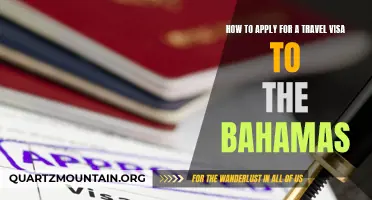
How to Apply for a Travel Visa to the Bahamas: Step-by-Step Guide
- Apr 30, 2024
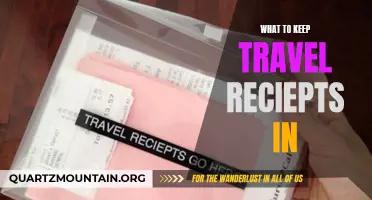
The Ultimate Guide to Organizing and Storing Travel Receipts
- May 12, 2024

How to do Nepal during monsoon season
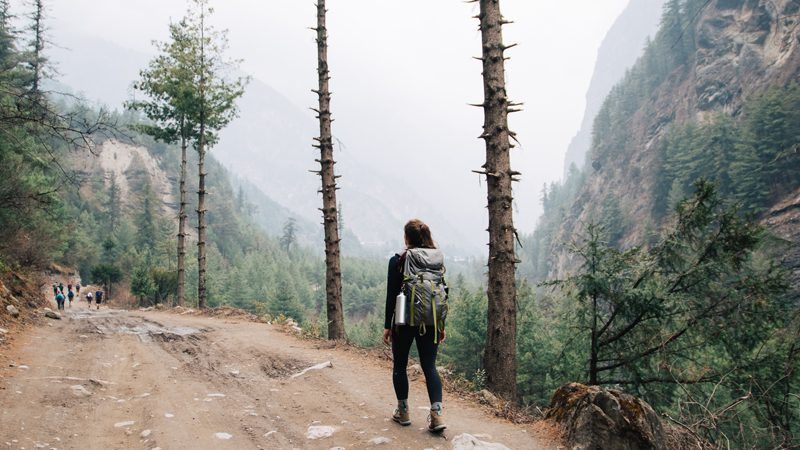
“ Chitwan is hot,” I’m warned at breakfast by a chatty local. I laugh nervously. “Hotter than Kathmandu?” I ask, shifting uncomfortably in my chair. I sip my cinnamon and clove-spiced tea while making a conscious effort to stop sweating. ‘Hot’ I’ve learned, is relative.
I grew up in the frigid Canadian winters of Northwestern Ontario where temperatures often dip below -40°C if you factor in wind chill (and we always factor in wind chill). My version of stifling hot is probably closer to your idea of a warm breezy day. But ‘monsoon hot’ seems to have its own special meaning for everyone. So if somebody like me – a giant baby when it comes to any heat whatsoever – can tackle Nepal during the height of monsoon season, anyone can. Here’s my handy survival guide.
Move slowly
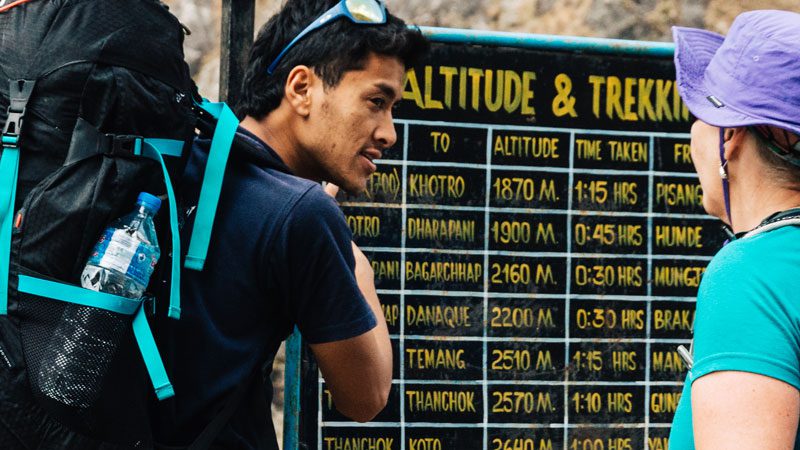
Image c/o The Common Wanderer
This is a lesson I learned while climbing to the UNESCO World Heritage Site of Swayambhunath Temple. Legend has it that the hill on which the temple sits rose from beneath a lake that used to cover the Kathmandu Valley. There are two ways to get to the top, by cab or by stairs. Being a monsoon rookie, I chose the stairs…all 365 of them. Fight the urge to have your real-life Rocky Balboa moment and just go slow. Slowness will also help you avoid stepping in a pile of monkey poop, cleverly left for you in prime stepping areas by the hundreds of sacred monkeys that live around the temple.
Dress like a local
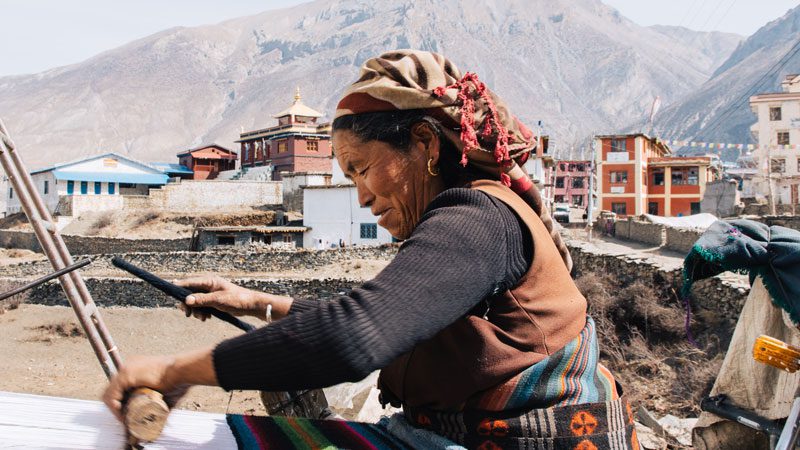
Local knowledge can often be hard to tap into while travelling for short periods of time, but this local tip is right out in the open for you to see. Leave your favourite ripped jeans at home -– they will not provide the ventilation required during Nepal’s hottest months. Pick up a few pairs of cotton pants from one of the shops that line the dusty streets of Kathmandu and wear them everywhere. You’ll thank me later. If elephant-inspired prints aren’t your thing, you can easily find plain colourful options in the capital’s bustling Thamel district . The pants are often one size fits all, but have a whole lot of stretch to them, which also means you can eat more momos at dinner. Side note: eat all of the spicy momos you can find. They’re delicious.
Embrace the sweat
The highest recorded sweat rate from somebody resting while in hot weather is 5 litres per hour, which is downright impressive. Temperatures in Chitwan can creep well into the 40°C range in June with what my internal hygrometer detected to be 100% humidity every day (note: humidity claims may or may not be accurate), so you’re going to sweat. A lot. But sweating is your body’s way of trying to keep you cool so grab an extra stick of deodorant or go au naturel style and just roll with it. Remember to drink plenty of water (a couple of litres a day minimum ). But plan ahead and BYO reusable water bottle with a filter or purifier, otherwise sweating will be the least of your worries.
Look beyond Base Camp for adventure
Nepal has much more to offer than just those iconic Himalayan views of Everest everyone’s always raving about. Monsoon season is the perfect time to take a day-trip over to the towns of Patan and Bhaktapur where you can explore their buzzing markets and admire the temple sites (without the influx of high-season tourism getting in the way of your photo ops). If wildlife is what you want, a jeep jungle safari in Chitwan is the best way to spot sloth bears, one-horned rhinos, mugger crocodiles and even the elusive Bengal tigers. Trekking is still possible during monsoon season, but due to increased cloud cover you are unlikely to catch the majestic Himalayan views you’re envisioning. The Pokhara region – famous for its world-class trekking options and stunning views – receives some of the heaviest monsoon rain in all of Nepal. Rather than fight Mother Nature on this (she will win), opt for a short trekking route in the Kathmandu Valley region.
Be rain-ready
As the old saying goes, ‘when it rains, it pours’. This is especially true during monsoon season. Be prepared. Pack yourself a light-weight rain jacket, or even one of those cheap plastic ponchos and bring it everywhere. There are usually warning signs before it starts to pour – thunder, lightning, and that incredibly heavy feeling in the air that would make your grandma’s elbow act funny. When the rains come, they comes in intense and powerful bursts that will send you running for cover inside the closest local shop you can find. On the bright side, this is the perfect opportunity to practice your Nepali greetings with others trying to stay dry(ish). Namaste.
Thanks to Westcomb , Flight Network, tentree and Passion Passport for partnering with us to send 7 people to Nepal this summer in our continued effort to help bring tourism back to Nepal after the 2015 earthquake. They ventured with us through monsoon season to visit tentree’s planting site in Chitwan National Park where they’re working to combat the deforestation in Nepal. Feature image c/o The Common Wanderer .
Ready for a proper Nepal adventure? Check out our Nepal small group adventures . Or sign up for our FREE e-newsletter for more destination inspiration.

Feeling inspired?
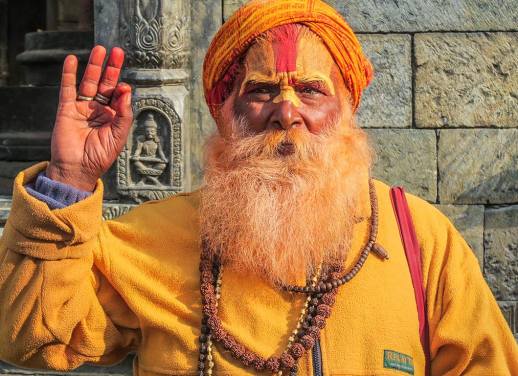
Joni Taisey
One of my favourite parts about travelling is people watching at the airport, but not in a creepy way. I promise. I also enjoy the actual travel part of travel. I’d pick burritos over tacos, lakes over oceans and mountains over beaches every time.
You might also like
Skip paris this summer and explore these 3..., all aboard the rail renaissance: 7 reasons to..., explore these 7 tea rituals from around the..., why travellers are choosing the galapagos off-season, tips and hacks for train travel in europe, why train travel is the one experience you..., everything you need to know about a night..., mind your manners: dining etiquette around the world, 5 places to escape the crowds in italy..., is australia safe everything you need to know, 10 fun facts you might not know about....
Heavy rains trigger landslides in Nepal; 11 killed, 8 missing

Heavy rains triggered landslides and flash floods killing at least 11 people in the last 36 hours in Nepal and blocking key highways and roads, officials said on Sunday.
Eight people were missing, either washed away by floods or buried in landslides, while 12 others were injured and being treated in hospitals, police spokesperson Dan Bahadur Karki said.
“Rescue workers are trying to clear the landslides and open the roads,” Karki told Reuters, adding heavy equipment was being used to clear debris.
In southeastern Nepal, the Koshi River, which causes deadly floods in the eastern Indian state of Bihar almost every year, was flowing above the danger level, a district official said.
“The flow of Koshi is rising and we have asked residents to remain alert about possible floods,” Bed Raj Phuyal, a senior official of Sunsari district where the river flows, told Reuters.
He said at 9 a.m. (11:15 p.m. ET) water flow in Koshi River was 369,000 cusecs per second, more than double its normal flow of 150,000 cusecs.
Cusec is the measurement of the flow of water and one cusec is equal to one cubic foot per second.
Authorities said all 56 sluice gates of the Koshi Barrage had been opened to drain out water compared with about 10-12 during a normal situation.
Authorities said the flows of Narayani, Rapti and Mahakali rivers in the west were also rising.
In hill-ringed Kathmandu, several rivers have overflown their banks, flooded roads and inundated many houses.
Local media showed people wading through waist-deep water or residents using buckets to empty their houses.
At least 50 people across Nepal have died in landslides, floods and lightning strikes since mid-June when annual monsoon rains started.
Hundreds of people die every year in landslides and flash floods that are common in mostly mountainous Nepal during the monsoon season which normally starts in mid-June and continues through mid-September.
In the northeastern Indian state of Assam , floods have killed dozens and displaced thousands of people in the past few days.
- SI SWIMSUIT
- SI SPORTSBOOK
- Men's Basketball
- Women's Basketball
- Other Sooners
Going the Distance: Where Oklahoma Ranks Among SEC Teams In 2024 Travel Miles
John e. hoover | jul 9, 2024.
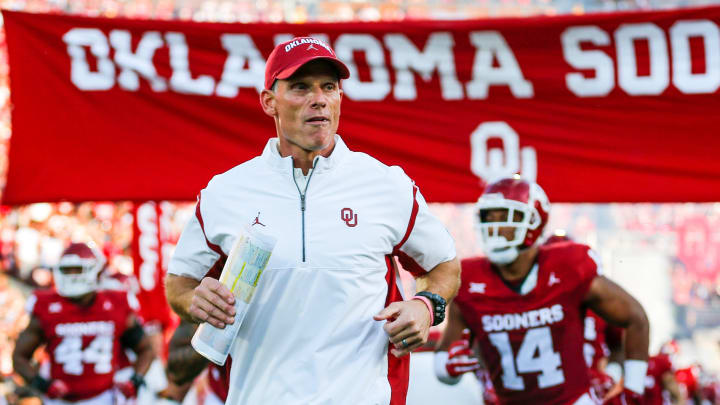
- Oklahoma Sooners
Having an address in the 12th out of 12 states in the new Southeastern Conference doesn’t necessarily add to Oklahoma’s task in 2024.
At least not geographically.
The Sooners have one of college football’s most demanding schedules this fall, rated between the No. 2 and No. 9 strength of schedule in 2024, depending on the metrics.
But being the new kid on the block, along with Texas, won’t put any undue difficulty on the Sooners’ 12-game schedule.
In terms of distance to travel for this season, Oklahoma ranks No. 6 overall in the SEC, according to Bookies.com , which used data from Google Earth to measure nautical miles between stadiums. The Sooners have just four road games this season, with all four non-conference games and three of their eight SEC games at Owen Field and another in Dallas.
OU will travel 4,411 round trip miles this season, with an average road trip distance of about 882 round trip miles. That includes the longest trip (1,416 round-trip air miles) to Auburn and the shortest trip (344 round-trip road miles) to Dallas to play Texas.
Interestingly, OU and Arkansas are the only teams that don’t have to cross a time zone this season. Mississippi State crosses eight time zones in 2024, while South Carolina, Georgia and Tennessee each cross six.
LSU will log the most round trip air miles of any SEC team this fall, a total of 6,789, including a non-conference game at Allegiant Stadium in Las Vegas against USC. Missouri is right behind LSU at 6,600 miles, while Texas A&M (5,796), Texas (5,371) and Mississippi State (5,228) come in ahead of OU.
Behind the Sooners are Ole Miss (4,267), South Carolina (4,236), Alabama (4,091), Kentucky (4,080), Georgia (4,043), Florida (4,039), Arkansas (3,372), Tennessee (3,268), Vanderbilt (2,963) and Auburn (2,481).
Mississippi State has the second-longest road trip (2,662 round trip miles to Arizona State), while Texas (2,267 miles to Michigan) and Missouri (2,123 miles to Massachusetts) are the other schools with trips in excess of 2,000 miles.
Other schools will also likely drive for certain games, such as Florida to Jacksonville and Tallahassee and Auburn to Alabama and Georgia.
OU’s other road games consist of trips to Columbia, MO (381 one-way air miles) to play Missouri, Oxford, MS (453 one way), to play Ole Miss, and Baton Rouge, LA (490 one way)), to play LSU.

JOHN E. HOOVER
John is an award-winning journalist whose work spans five decades in Oklahoma, with multiple state, regional and national awards as a sportswriter at various newspapers. During his newspaper career, John covered the Dallas Cowboys, the Kansas City Chiefs, the Oklahoma Sooners, the Oklahoma State Cowboys, the Arkansas Razorbacks and much more. In 2016, John changed careers, migrating into radio and launching a YouTube channel, and has built a successful independent media company, DanCam Media. From there, John has written under the banners of Sporting News, Sports Illustrated, Fan Nation and a handful of local and national magazines while hosting daily sports talk radio shows in Oklahoma City, Tulsa and statewide. John has also spoken on Capitol Hill in Oklahoma City in a successful effort to put more certified athletic trainers in Oklahoma public high schools. Among the dozens of awards he has won, John most cherishes his national "Beat Writer of the Year" from the Associated Press Sports Editors, Oklahoma's "Best Sports Column" from the Society of Professional Journalists, and Two "Excellence in Sports Medicine Reporting" Awards from the National Athletic Trainers Association. John holds a bachelor's degree in Mass Communications from East Central University in Ada, OK. Born and raised in North Pole, Alaska, John played football and wrote for the school paper at Ada High School in Ada, OK. He enjoys books, movies and travel, and lives in Broken Arrow, OK, with his wife and two kids.
Follow johnehoover
OPEC sticks to 2024 oil demand view, sees strong travel season
- Medium Text
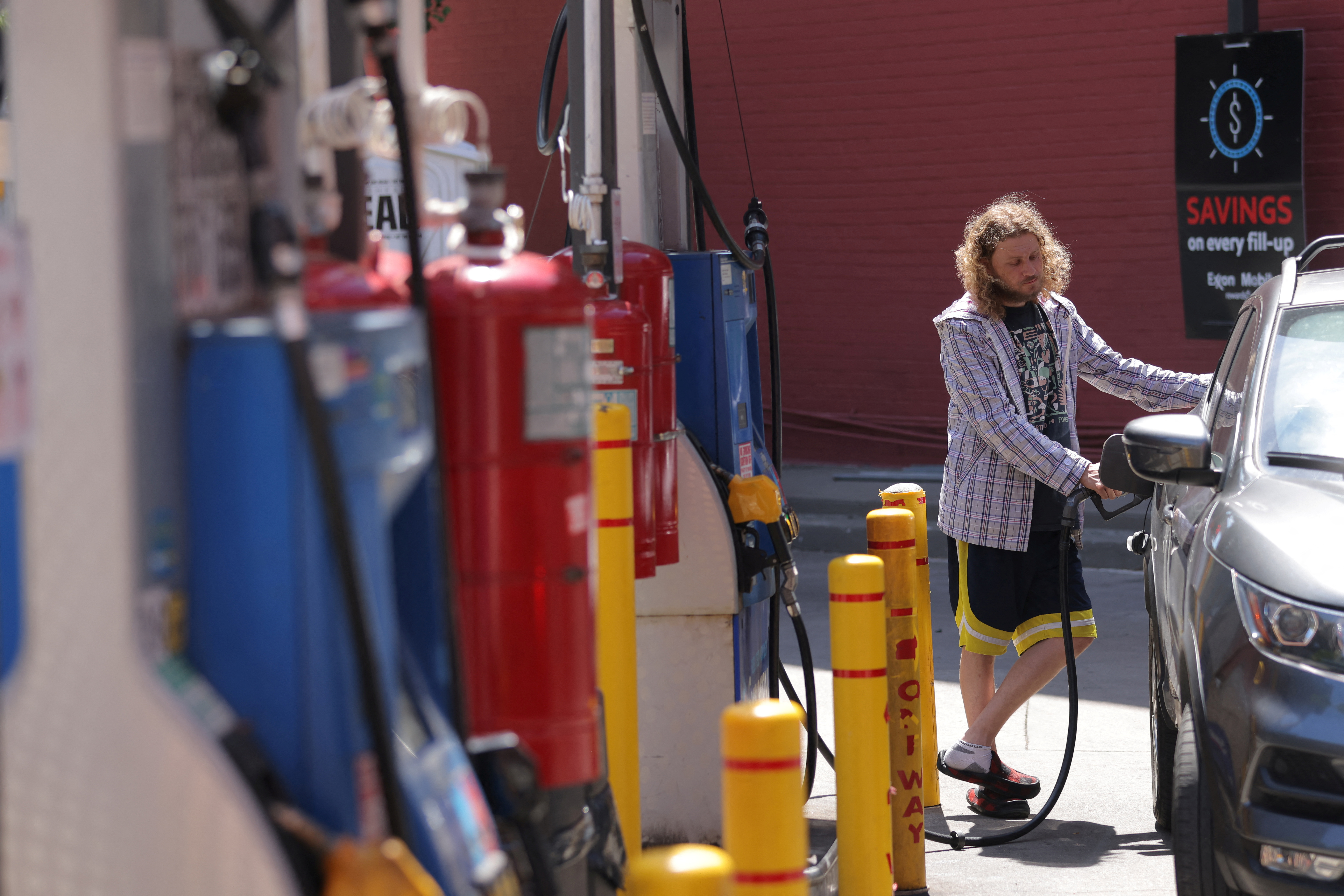
- OPEC sees world oil demand rising by 2.25 million bpd in 2024
- Expects an increase of 1.85 million bpd in 2025
- Both forecasts unchanged from last month
- Oil forecasters split more widely than usual on demand prospects
Sign up here.
Reporting by Vladimir Soldatkin and Alex Lawler; Editing by Jason Neely and David Holmes
Our Standards: The Thomson Reuters Trust Principles. New Tab , opens new tab

Business Chevron
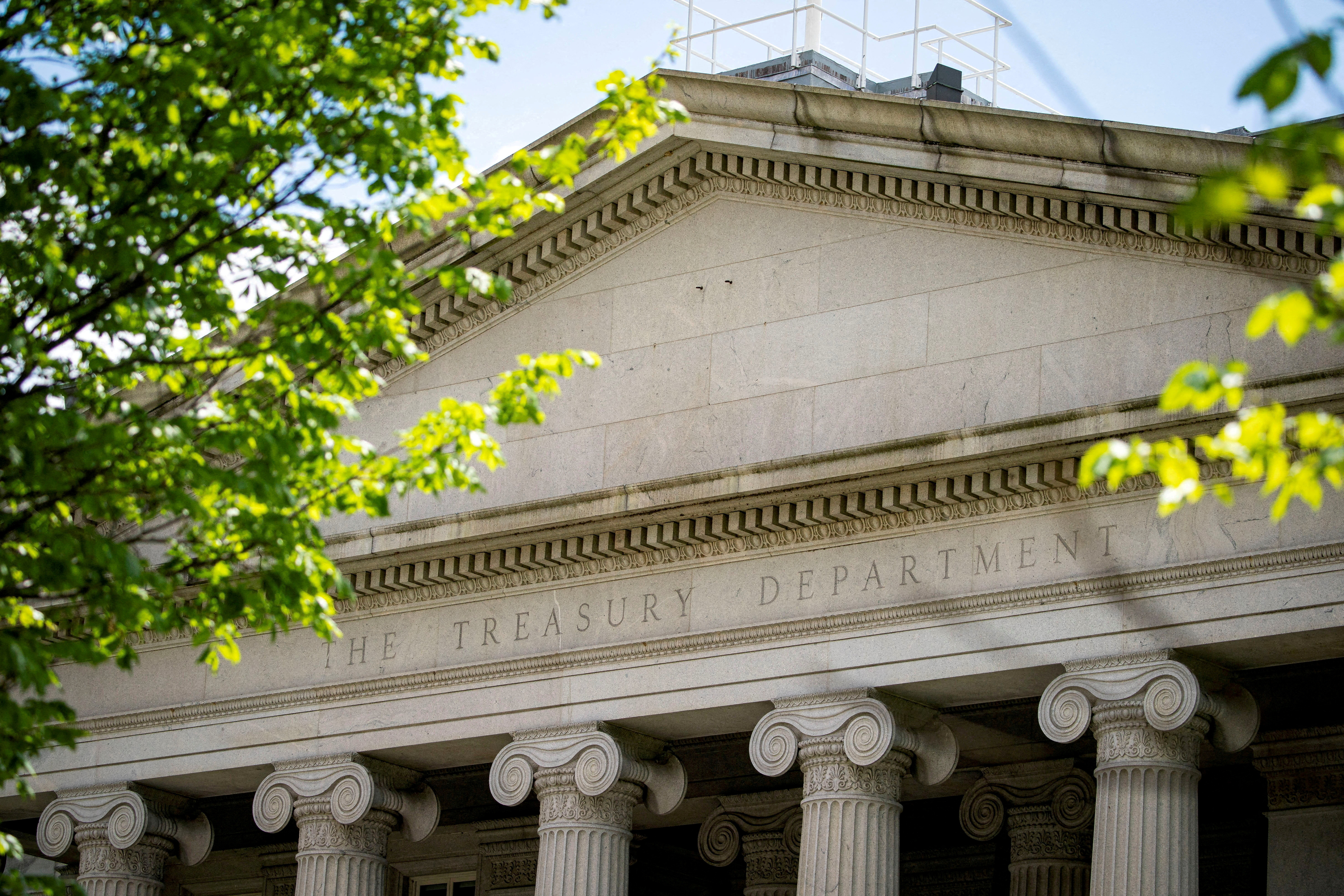
Global bond funds see hefty inflows on expectations of rate cut
Global debt funds attracted inflows for a 29th straight week in the seven days to July 10 on expectations of a Federal Reserve rate cut amid weakening labour market conditions and easing inflation levels.
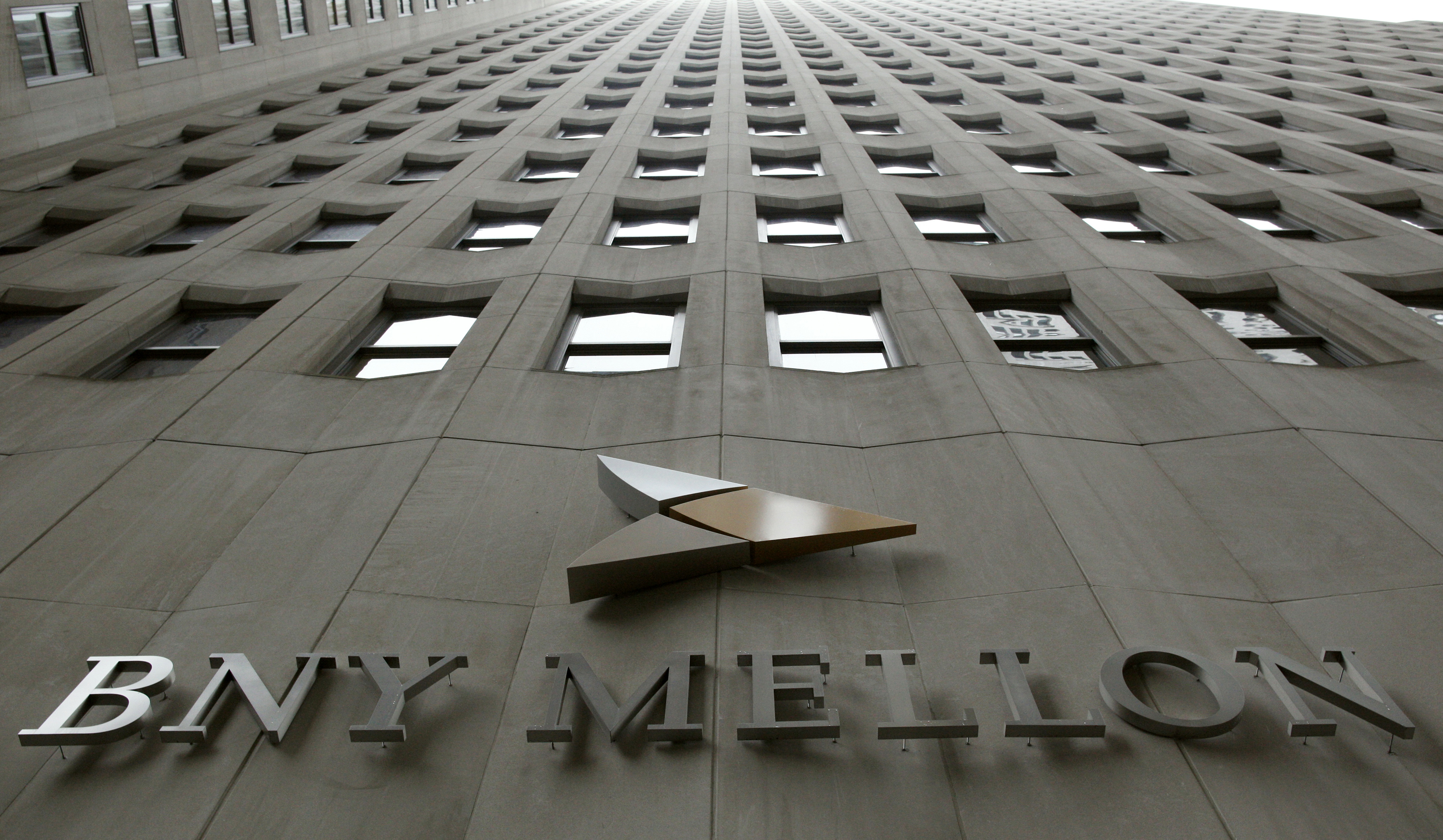

IMAGES
VIDEO
COMMENTS
However, for travelers, the monsoon is the worst time to visit Nepal. Rain means cloudy skies, muddy and flooded streets, canceled or delayed flights, and the potential for landslides across roads. There may be pockets of beauty in Nepal's monsoon, but visitors should give this season a wide berth. The rains generally peter out by mid-September.
The worst time to visit Nepal is during its monsoon season, from June to August, as it brings heavy rains, high winds, and incredibly muggy conditions. The summer monsoon season in Nepal is far from hospitable for outdoor adventures and recreation. The jungles are steamy, wildlife is harder to view with tall grasses offering camouflage, and ...
Winter is low season for tourists and a great time of year to visit places like Pokhara and the national parks on the plains. Spring in Nepal. From March onwards spring makes its appearance, the temperatures climb and the flowers on the hillsides burst into bloom. You'll see vast swathes of pink and red rhododendrons in particular.
The glorious post-monsoon period is the best time to visit Nepal weather-wise. Being high season, there's a great demand for accommodations. Prices leap, and hotels in Kathmandu get booked up. Be prepared to jostle for space on Nepal's classic trekking trails too. Similar to in spring, stick to the off-beat treks to avoid the crowds.
The best time to visit Nepal is from October to December as the weather is stunning during this period. The average temperature is 22℃ (72°F) by day and 12℃ (54°F) at night. Trekking, jungle safaris, and outdoor activities are all enjoyable during this period. Dashain is the most auspicious festival in October.
Spring and autumn are generally considered to be the best seasons to visit Nepal, since the weather tends to be moderate and stable, with clear skies. However, due to the complex nature of Nepal's geography and climate, there's a lot more to this. An ever-increasing number of travelers visit Nepal in winter and summer, and for good reason. With the right information, travel plan, and ...
Autumn in Nepal is a trekker's paradise: cloudless and dry, neither too hot nor too cold, and the clear mountain views resplendent. October to December is the best time to visit Nepal, as dry days make trekking easier and offer good visibility. Autumn (September-November) and spring (late February-mid-April) are also great seasons to trek in ...
Winter Season. Shishir Ritu. Mid-January to Mid-March. Nepal Has Six Climatic Seasons. 1. Spring Season (March-May) In this season, the temperature is softly warm at low altitudes while moderate at higher altitudes. This is the best time to Visit Nepal if you want to explore the beauty of this beautiful country.
The monsoon season arrives in June and lasts until the end of August, with the clouds obscuring the glorious mountain views. The heavy rain and landslides make travel difficult and many places close down, so the country is best avoided at this time. Nepal celebrates festivals all year, so there is often a festival or pilgrimage taking place.
Nepal, during the months of March to May, transforms into a captivating landscape, offering a unique blend of natural beauty and favorable weather. It's also considered the best time to visit Nepal.\ This season, known as spring, is a favorite among travelers or trekkers for several compelling reasons. Some of which are: 1. Blossoming ...
When to visit Nepal in fall/autumn. Fall or autumn is one of the best seasons to travel to Nepal. From October it's generally dry and skies are clear, which is why climbers and hikers love this season. Daytime temperatures during the day at high altitudes are pleasantly cool for walking, whereas it's hotter lower down.
The cheapest time to visit Nepal is during the off-season, from June to September, as hotels and airlines offer discounts due to the rainy season. How many days in Nepal is enough? You can experience the best of Nepal in 14-21 days, including time in Kathmandu, Pokhara, and trekking in the mountains. ...
The best time to visit Kathmandu. Nepal's capital city can be visited throughout the drier months of September until May. The ideal time to travel is from September to November. The number of festivals taking place in this time gives the city an intriguing atmosphere with the weather clear, bright and sunny.
September, October, and November are Nepal's Autumn season. During this time, the rain has ended, and the climate is temperate and cool. Autumn is a very pleasant time in Nepal. The clear skies, pleasant weather, and cooling temperatures attract a large number of tourists, making it also a pricier time to visit.
Nepal through the seasons. The best time to visit Nepal is during the months of October and November. The monsoon is over, which means magnificent, green, lush vegetation as well as clean air - the perfect time to explore the country in all its beauty, especially given the mild temperatures. This is also the time the views of the peaks of the ...
This season is one of the best times to visit Nepal, offering an ideal climate for trekking, mountaineering, and sightseeing. Spring is the peak season for climbing expeditions, attracting mountaineers from around the globe to conquer the world's highest peaks, including Mount Everest.
Knowing when to go trekking in Nepal is especially important, as many trails close in the off-season. In terms of temperatures, Nepal weather follows a similar pattern to much of Europe and North America - hottest in the summer months of June-August, and coldest in the winter months December-February. We also have a rainy season though, which ...
Oct. Nov. Dec. The best time to visit Nepalis during the autumn season in the months of October, November, and December when the temperature ranges between 26 degrees Celsius and 4 degrees. Nepal sees the highest number of travelers during the autumn season during this time, the rainy season is gone and the weather becomes extremely pleasant.
Mar. Apr. May. March to May is one of the best times to visit Nepal because it is considered to be the spring season. The temperature ranges from 84°F to 75°F in the daytime and 46°F to 59°F in the nighttime.
Summer (between June - August): This is also the monsoon season in Nepal. The weather is hot and wet at times. It rains almost everyday with occasional thunderstorms in the evening. The rain spreads the pleasantness around with lush green vegetation. Autumn (between September - November): This is the best tourist season in Nepal with the ...
Nestled in the heart of Nepal, Kathmandu stands as a vibrant testament to the confluence of ancient traditions and modern aspirations.A harmonious blend of history, spirituality, culture, and nature crafts the city's unique essence. As the calendar pages turn, each season cloaks Kathmandu in a distinct aura, offering travelers an array of unparalleled experiences.
The best time to visit Nepal, particularly for the Everest Base Camp Trek, is during the pre-monsoon season (March to May) or post-monsoon season (late September to November). During these periods, the weather is usually clear, providing stunning views of the Himalayas, and temperatures are moderate, making it ideal for trekking.
October to November is the peak season for travel to Nepal, and it is the best time for most activities. It is not, however, the cheapest time to visit Nepal, though the country is generally affordable anyway. If you want to avoid the crowds, consider visiting in late September, which is the shoulder season. ...
Nepal has much more to offer than just those iconic Himalayan views of Everest everyone's always raving about. Monsoon season is the perfect time to take a day-trip over to the towns of Patan and Bhaktapur where you can explore their buzzing markets and admire the temple sites (without the influx of high-season tourism getting in the way of ...
A landslide swept two passenger buses carrying at least 60 people into a swollen river in central Nepal early Friday, and continuous rain and more landslides were making rescue efforts difficult.
Heavy rains triggered landslides and flash floods killing at least 11 people in the last 36 hours in Nepal and blocking key highways and roads, officials said on Sunday. ... visit our site on ...
OU will travel 4,411 round trip miles this season, with an average road trip distance of about 882 round trip miles. That includes the longest trip (1,416 round-trip air miles) to Auburn and the ...
RENTON - Summer is here and so is the summer construction season, including a full closure of northbound and southbound Interstate 405 in Renton starting at 11 p.m., Friday, July 12, to 4 a.m., Monday, July 15. ... travel during off-peak hours or, if possible, delay discretionary travel to help minimize the backups. I-405 closure details.
OPEC sees world oil demand rising by 2.25 million bpd in 2024 Expects an increase of 1.85 million bpd in 2025 Both forecasts unchanged from last month Oil forecasters split more widely than usual ...
Revealed during Ubisoft Forward, Anno 117: Pax Romana, is the 8th entry in the Anno series and the successor of the award-winning Anno 1800.Anno 117: Pax Romana is developed by Ubisoft Mainz, and will immerse players in the Pax Romana period, an era of relative peace in the Roman Empire. It promises a captivating blend of city-building mechanics as well as 4x and RTS features to deliver a ...